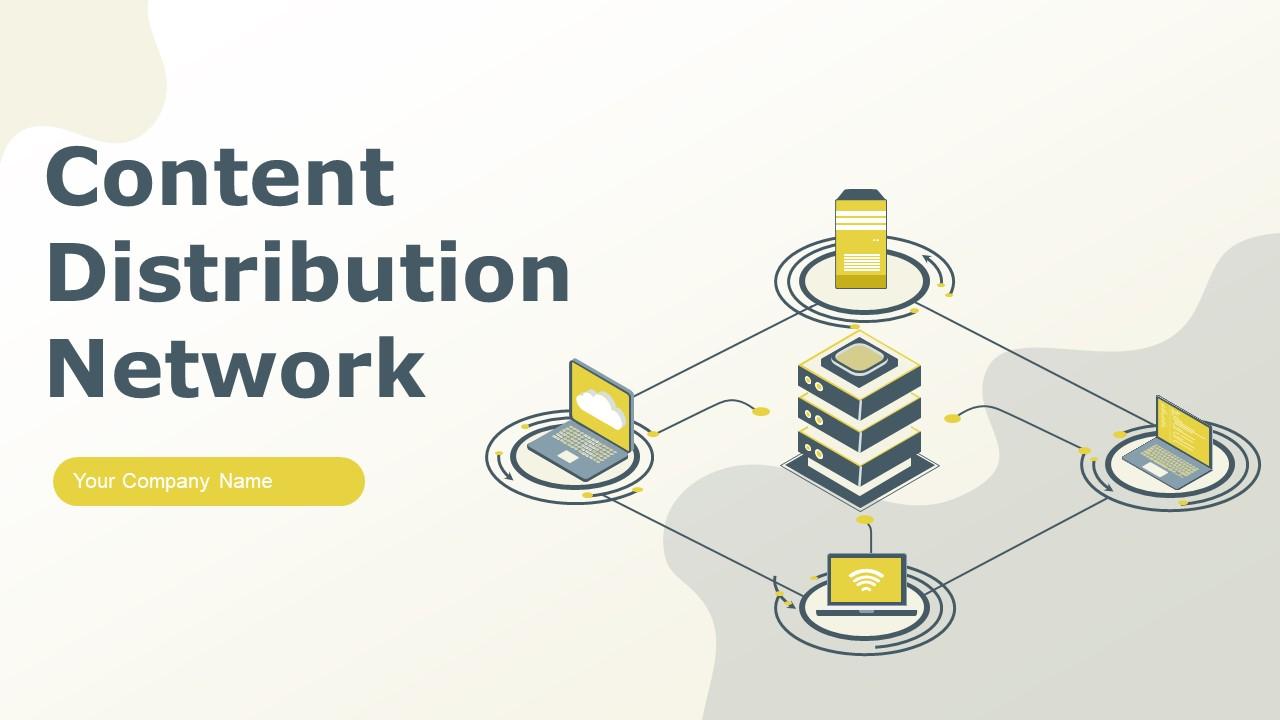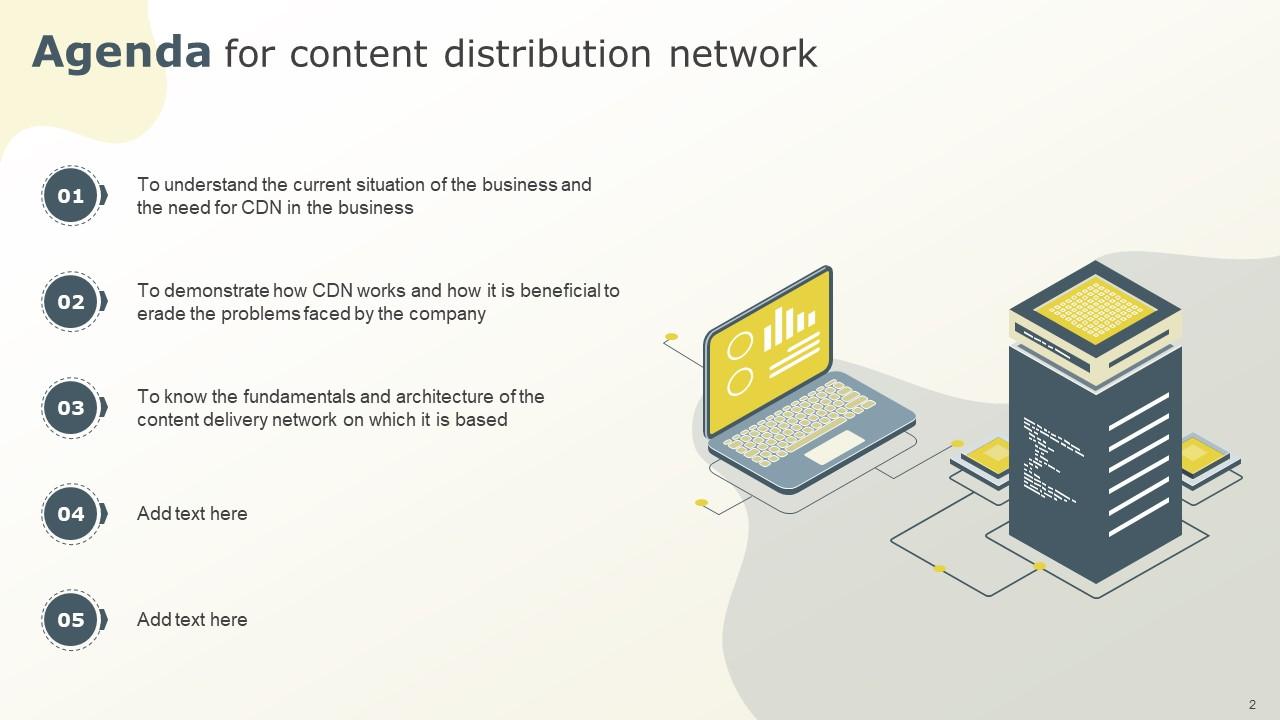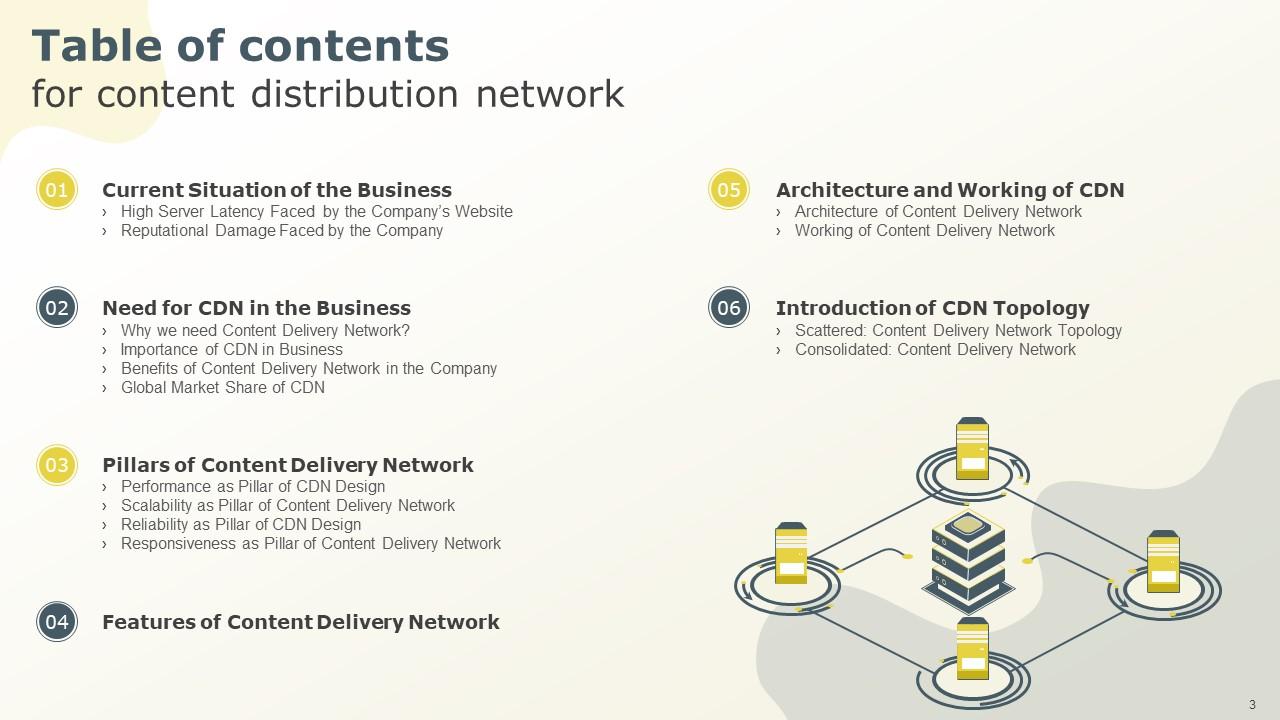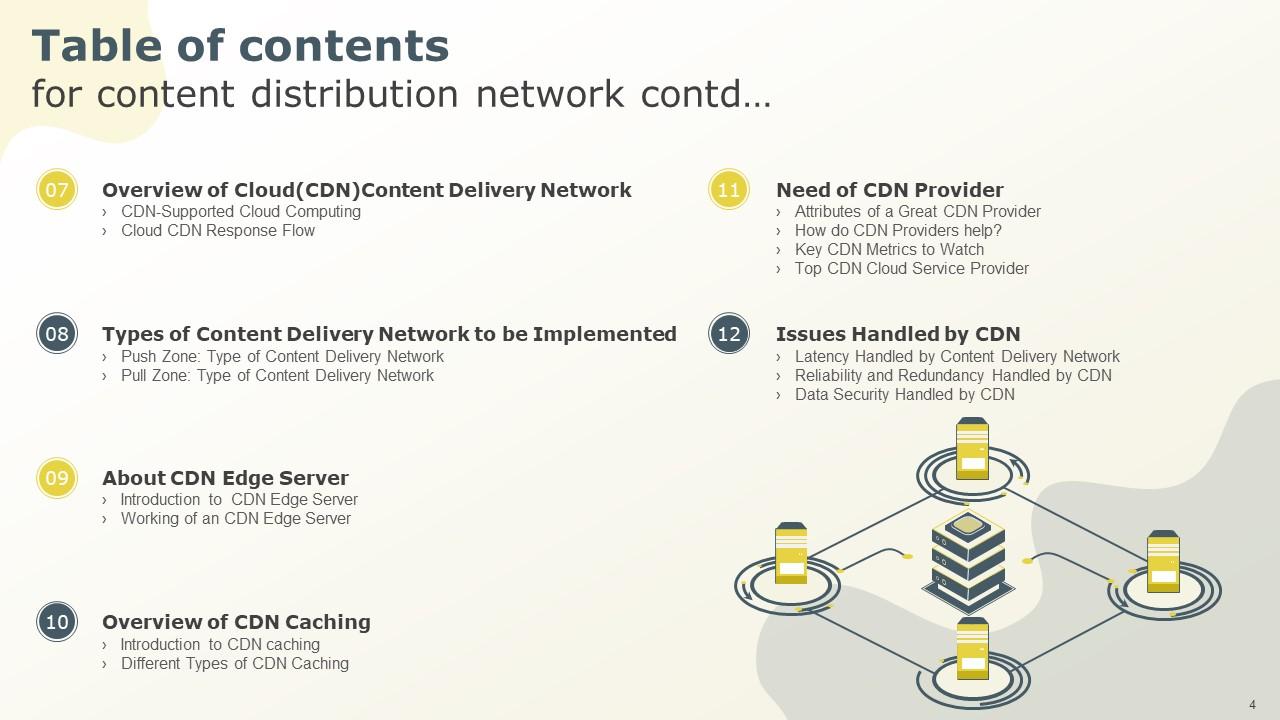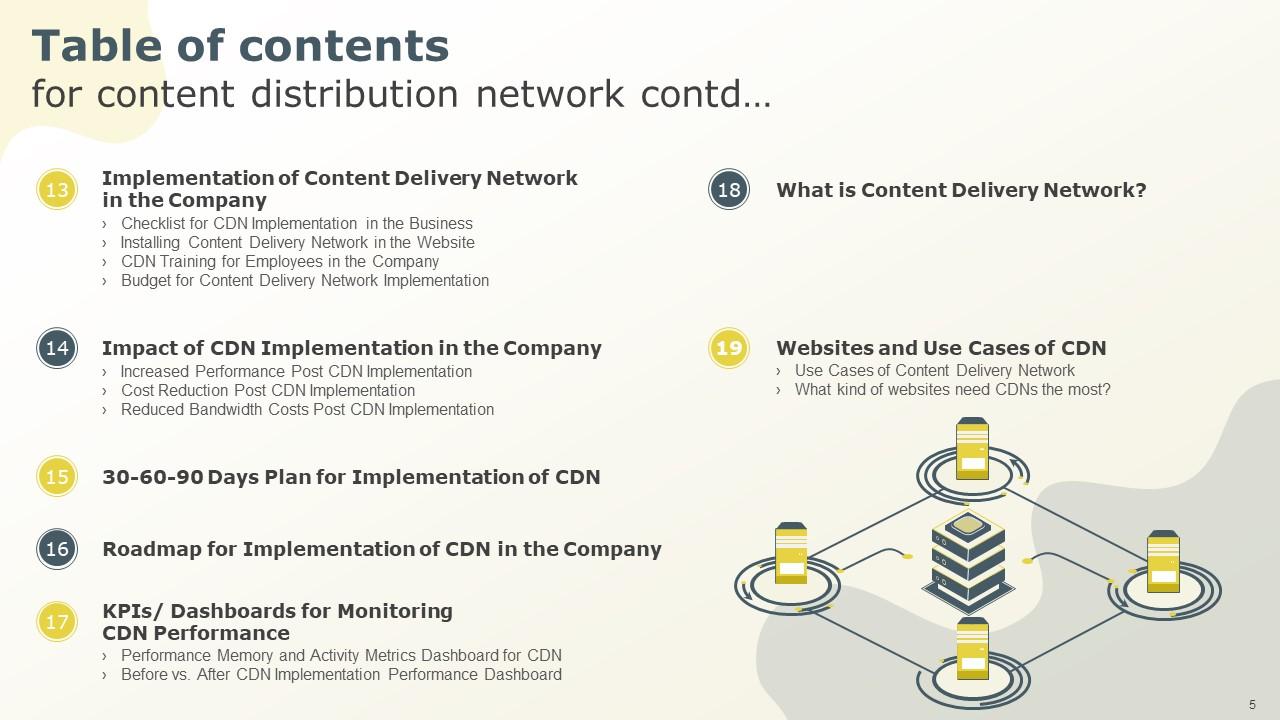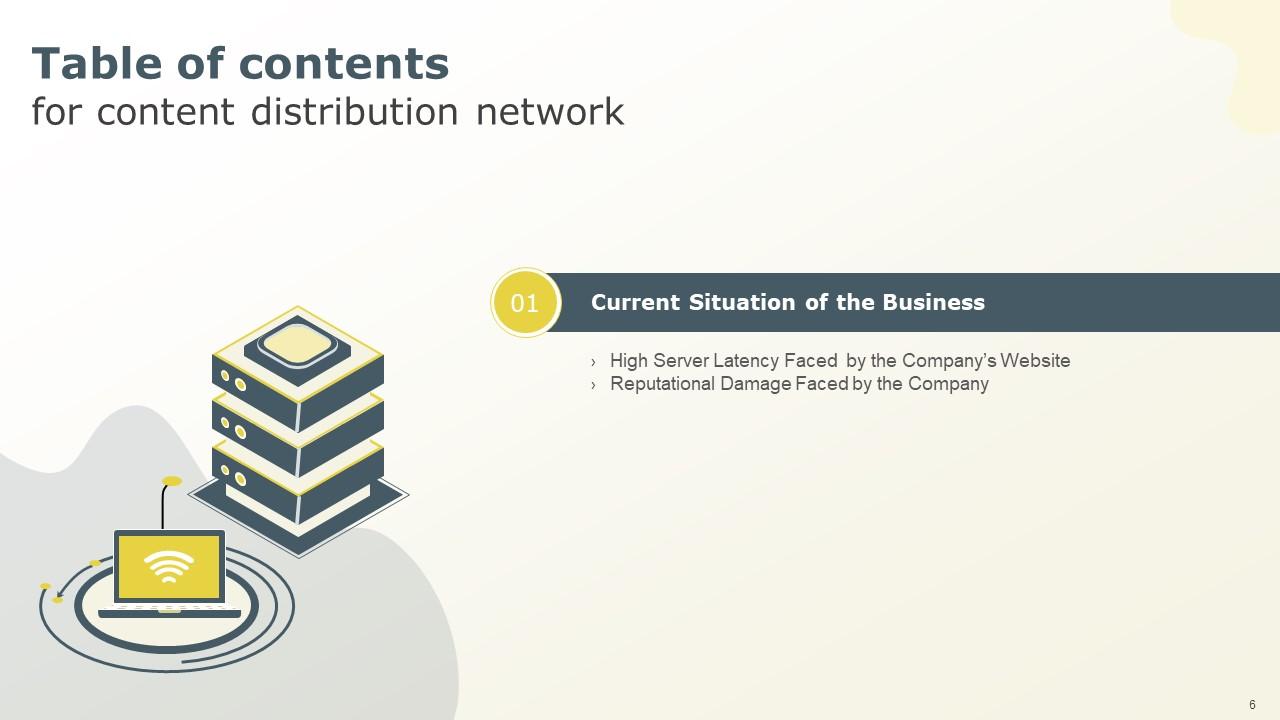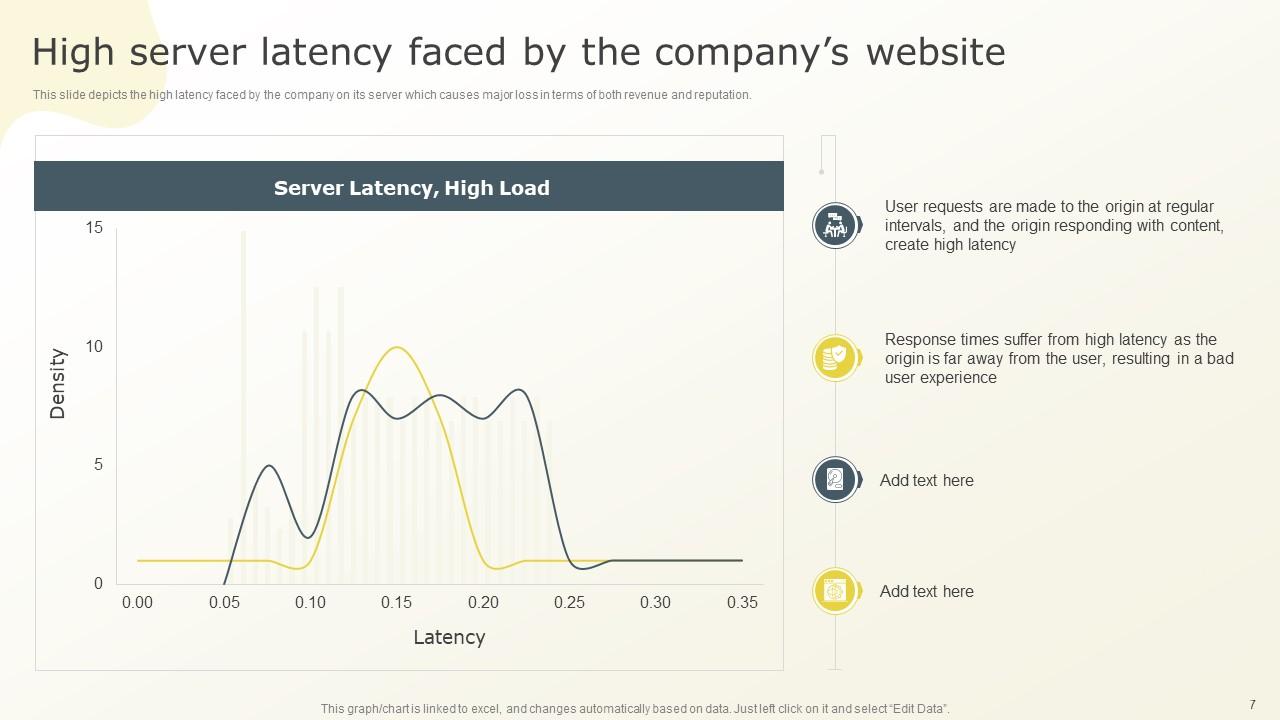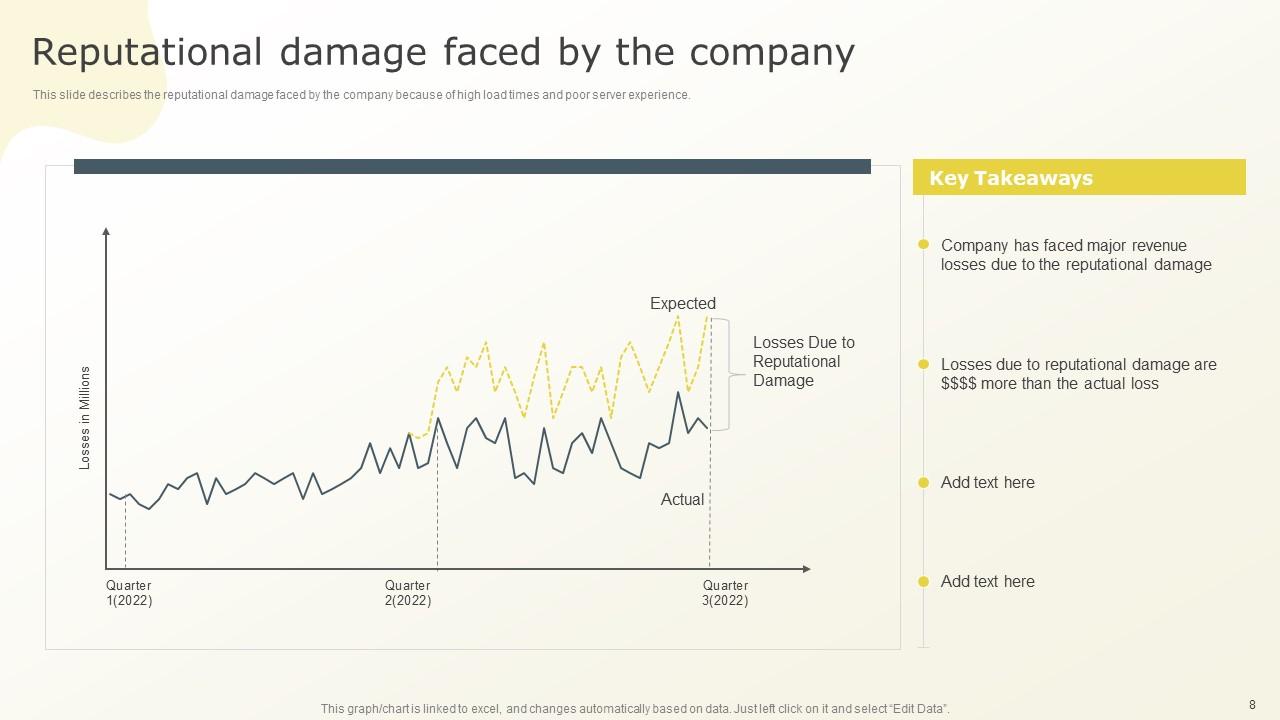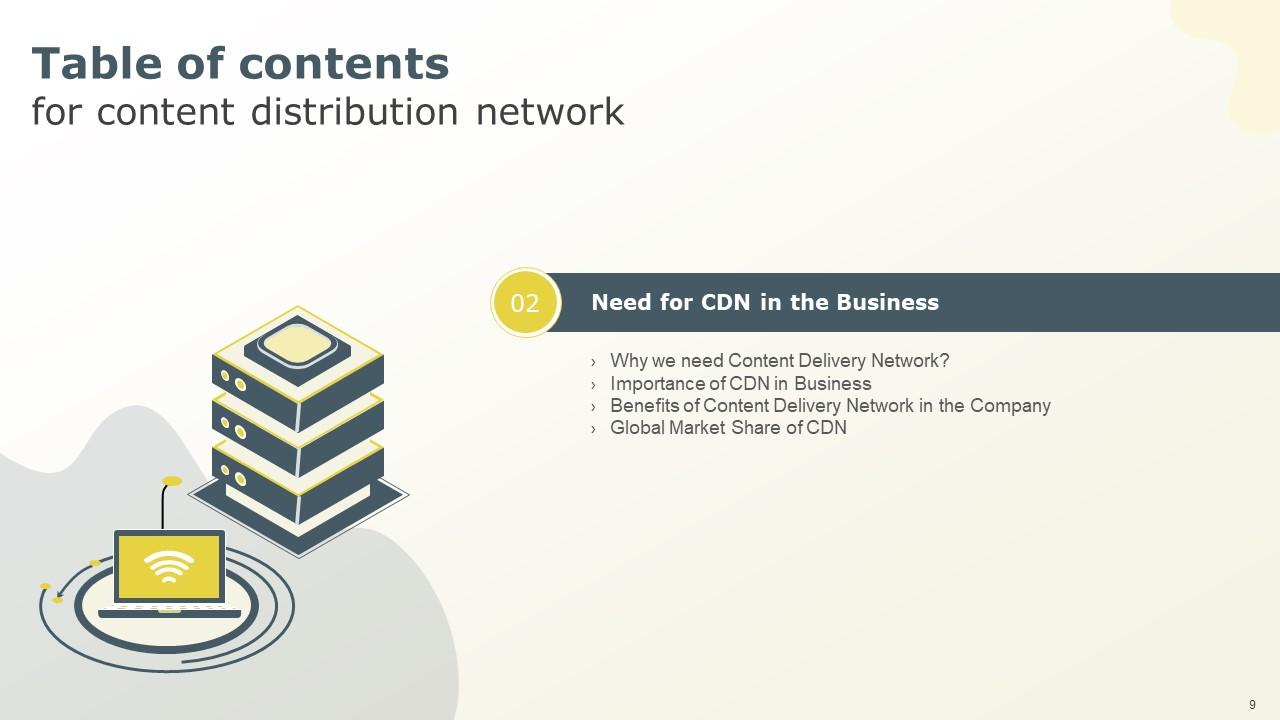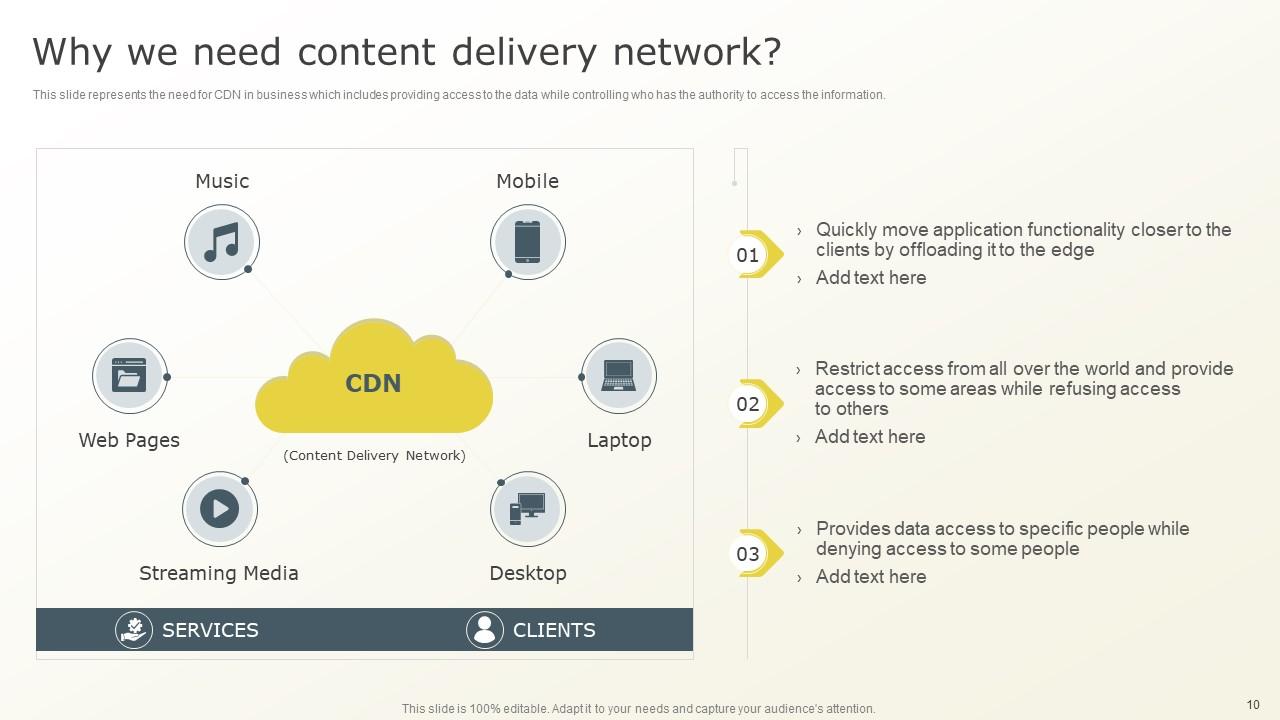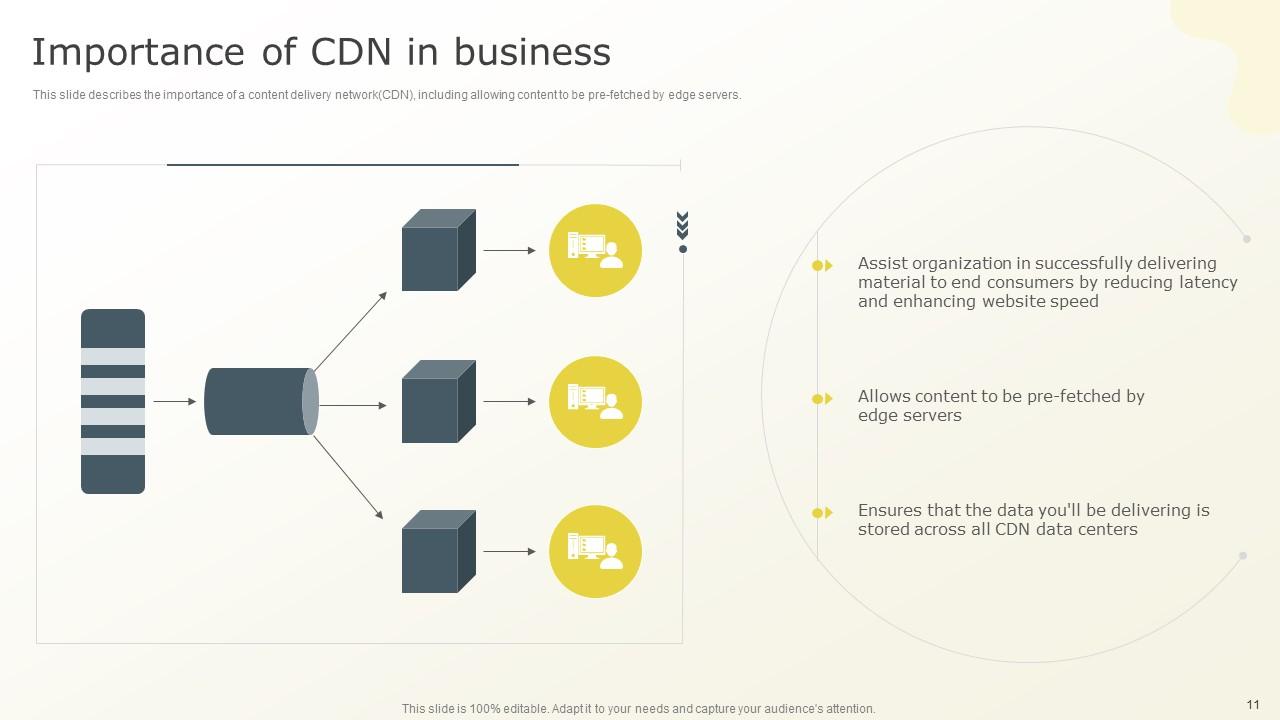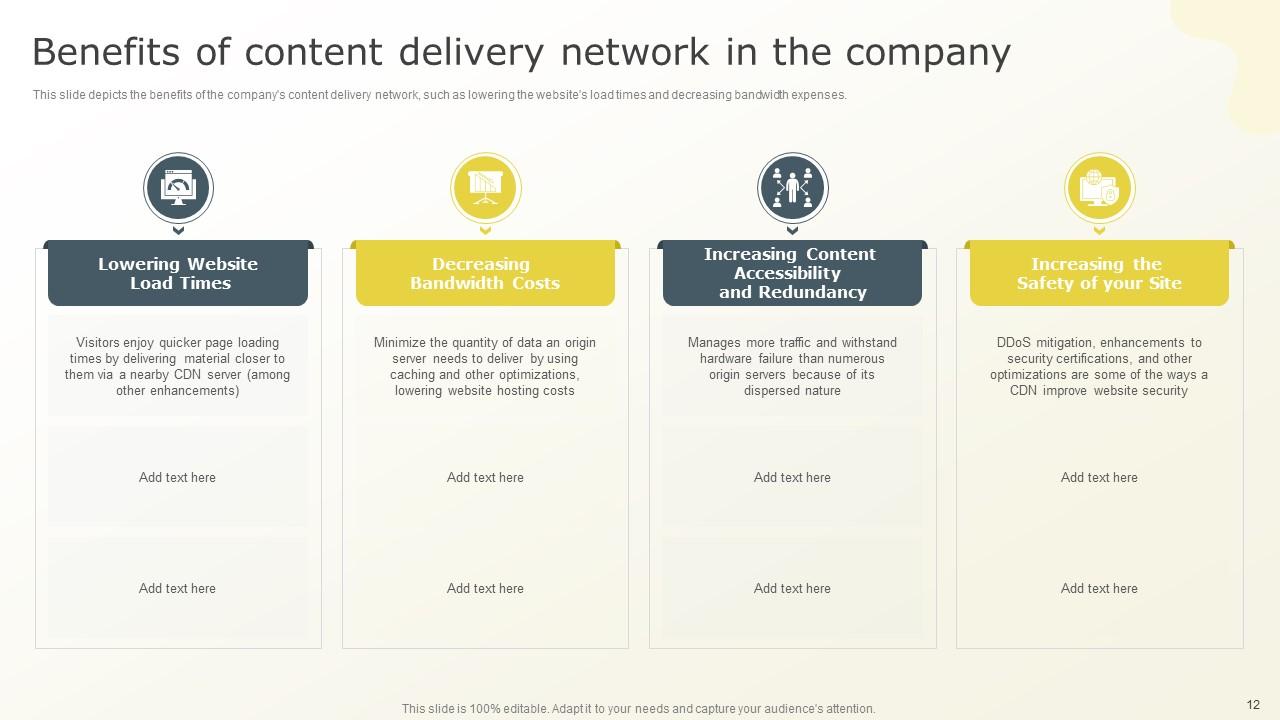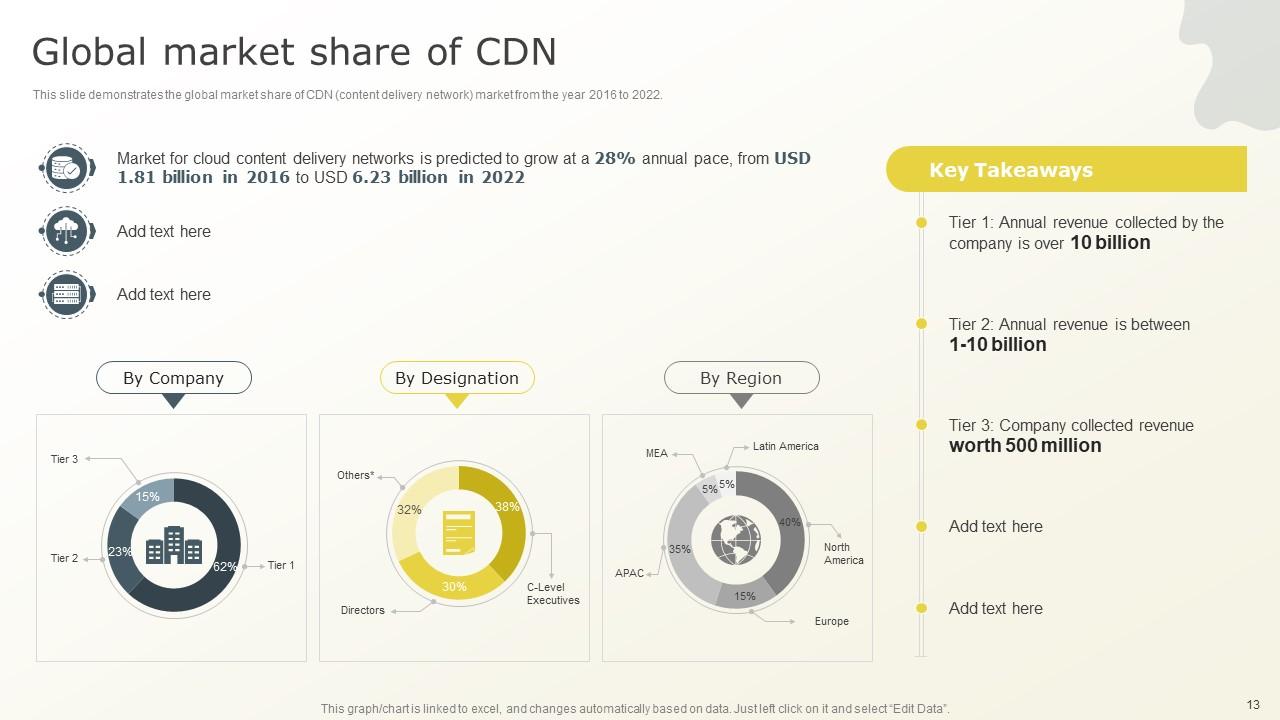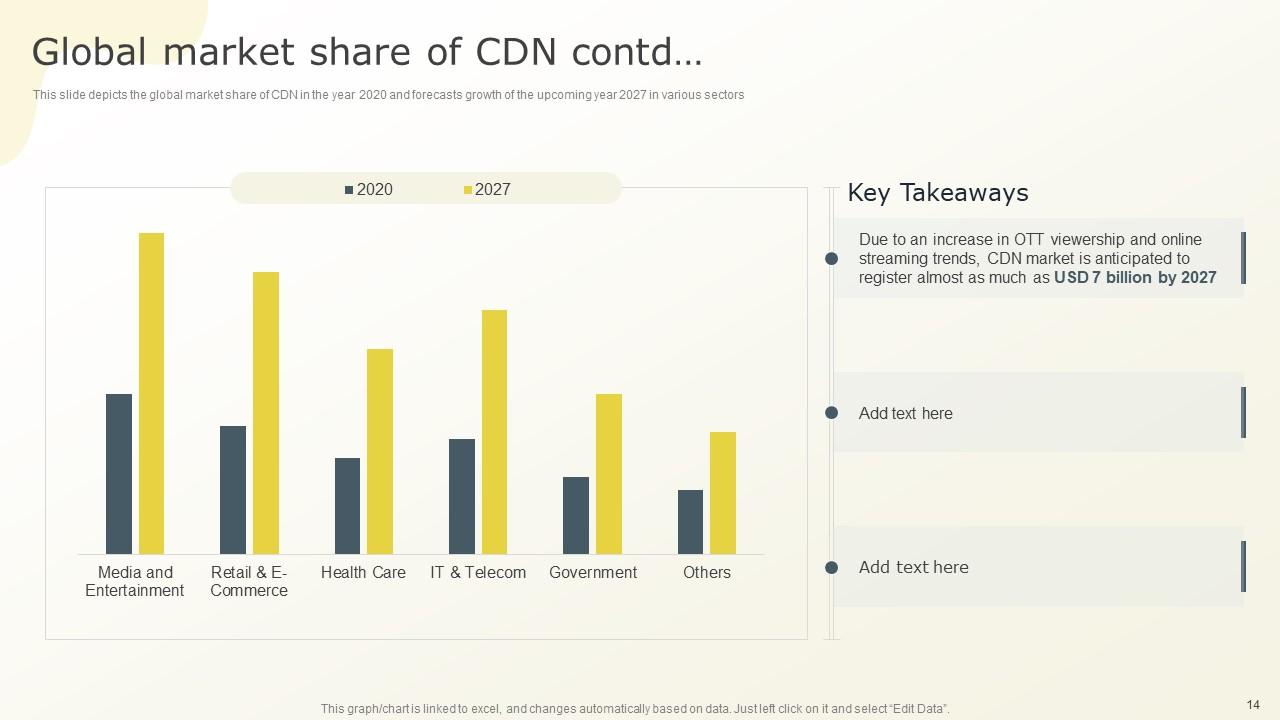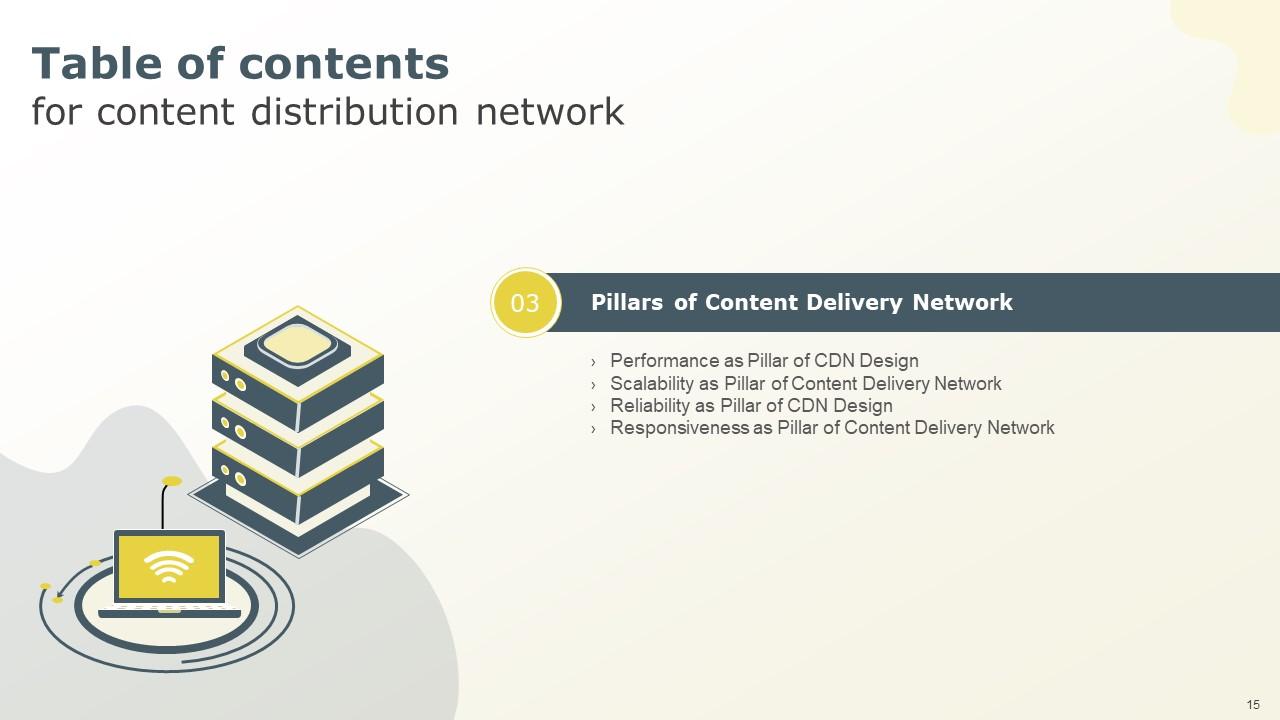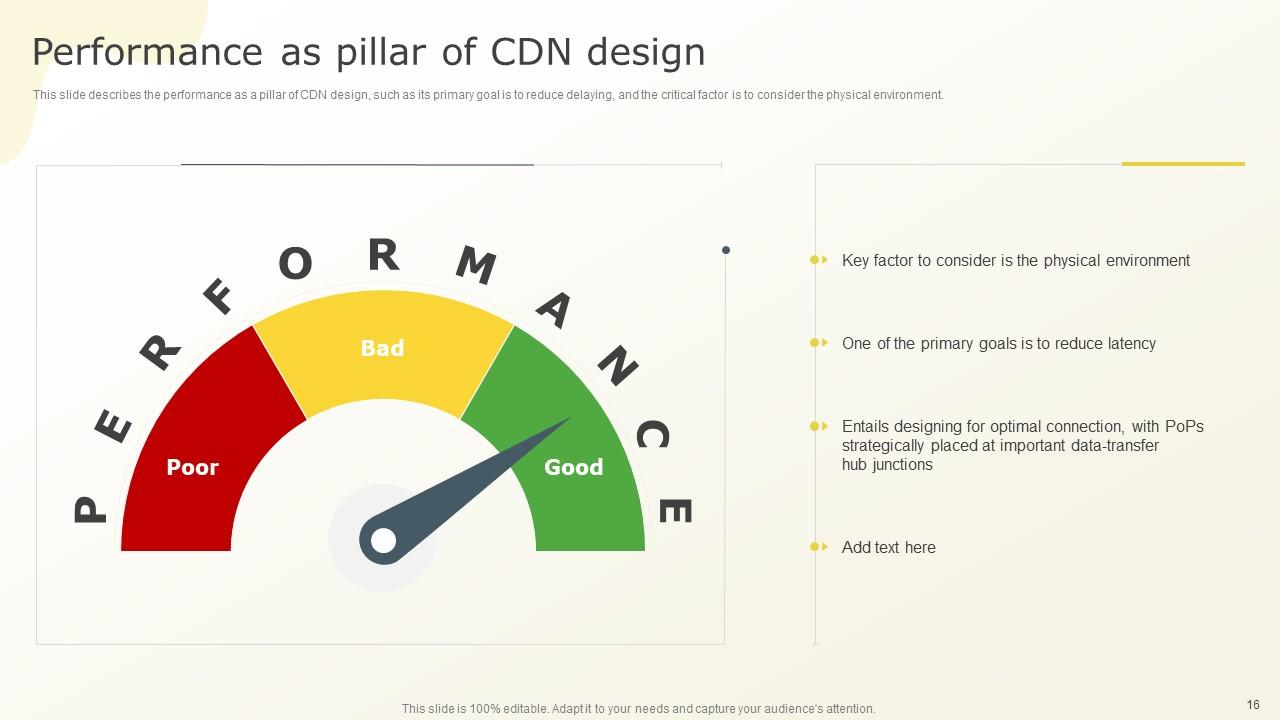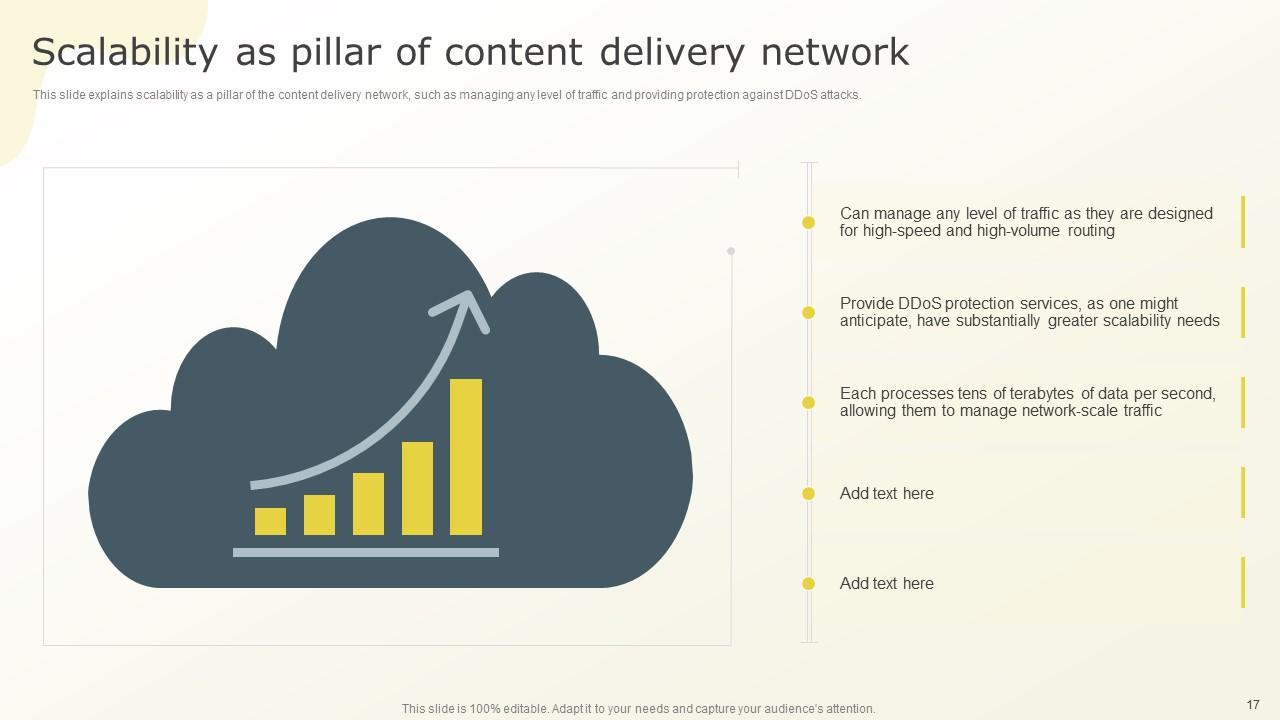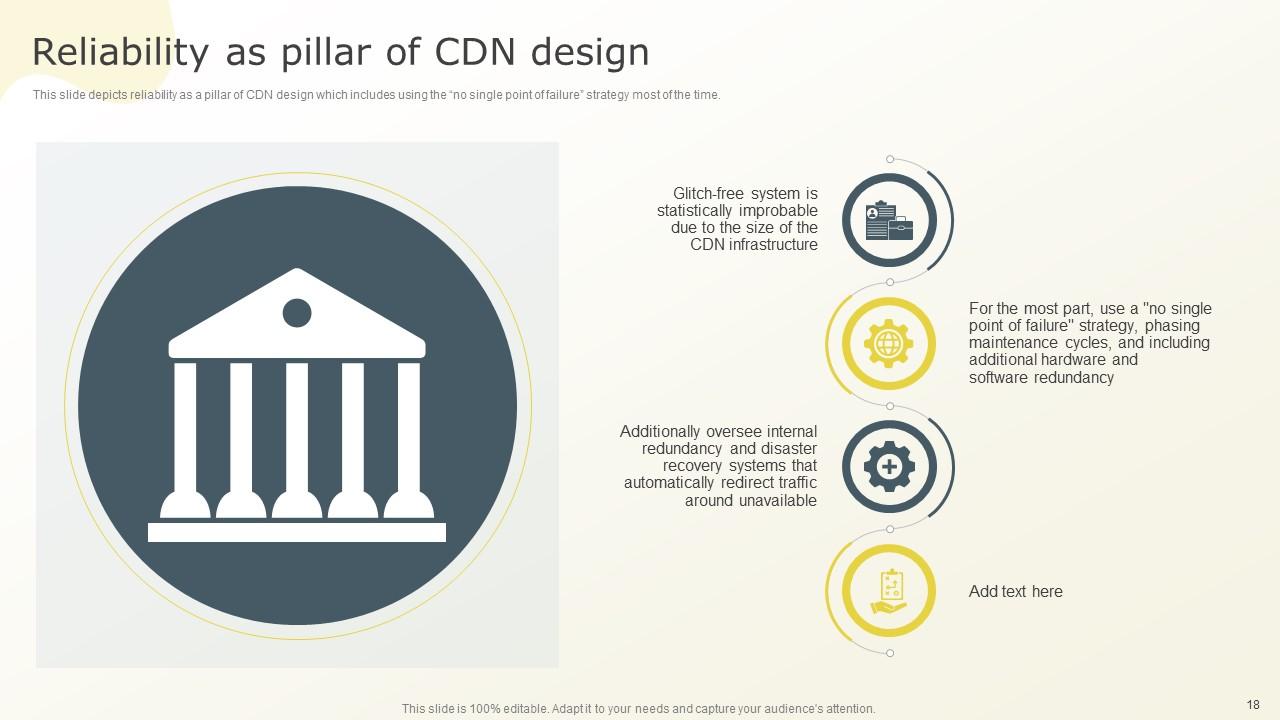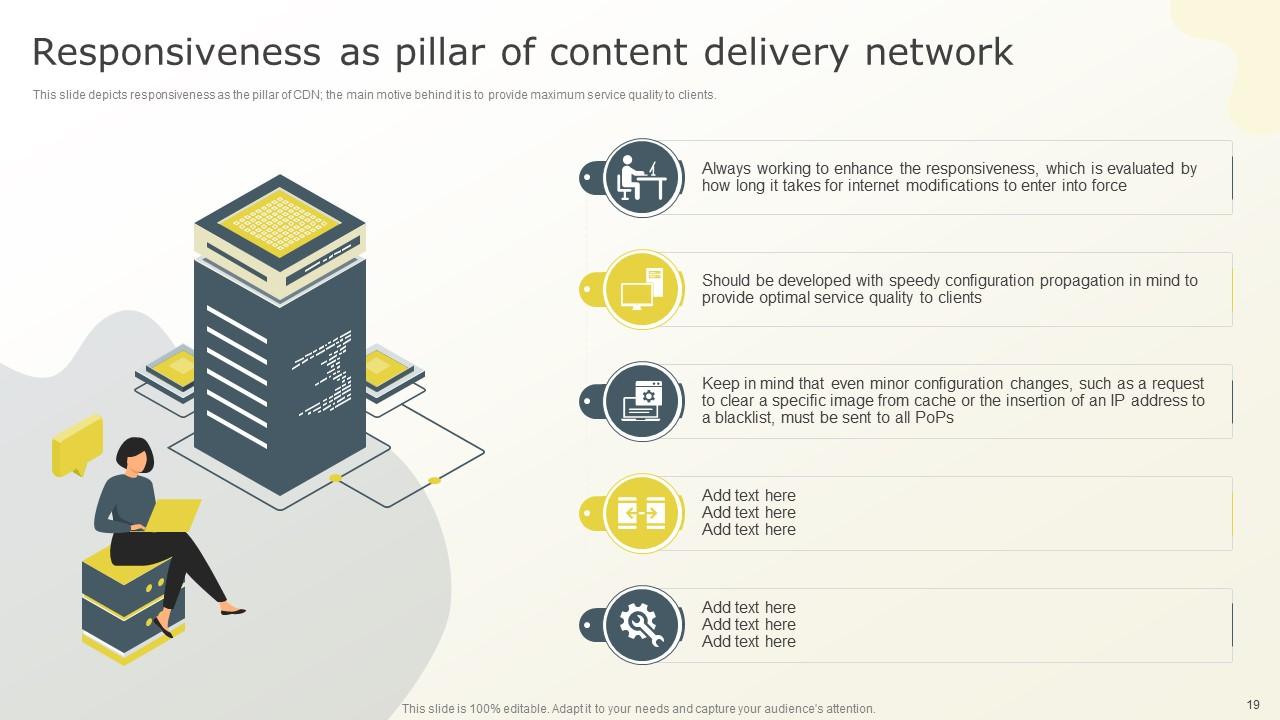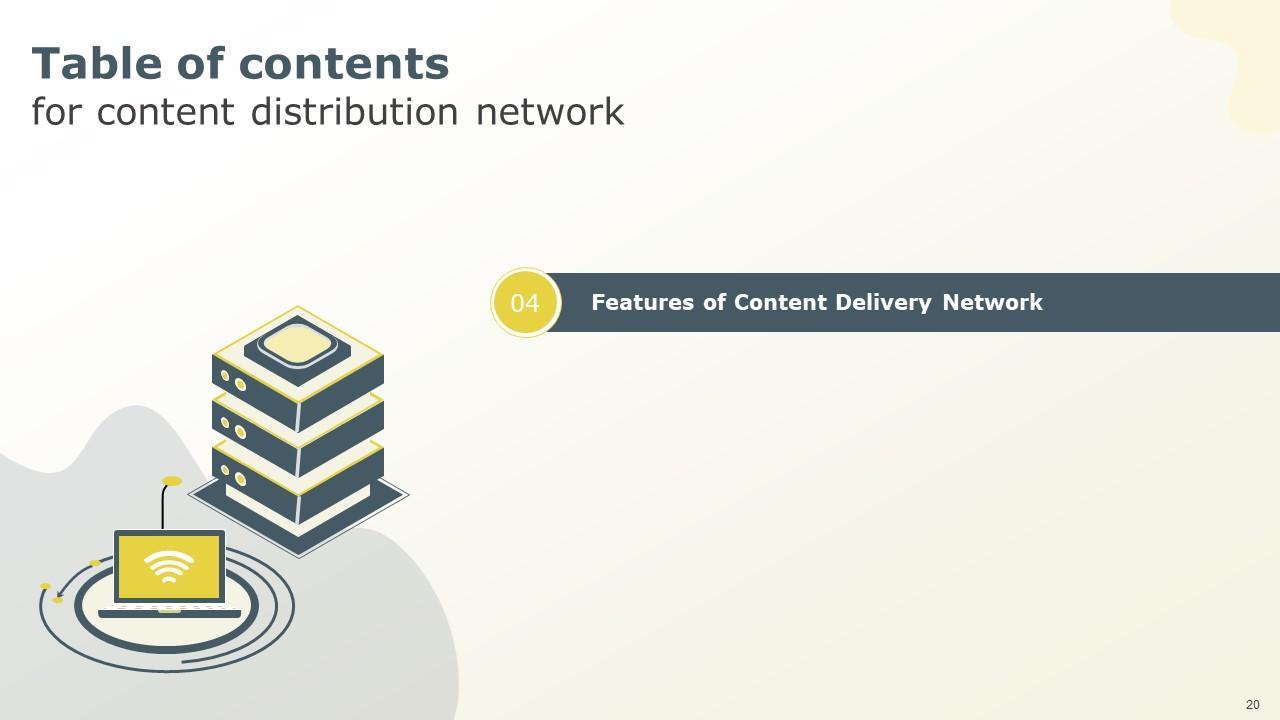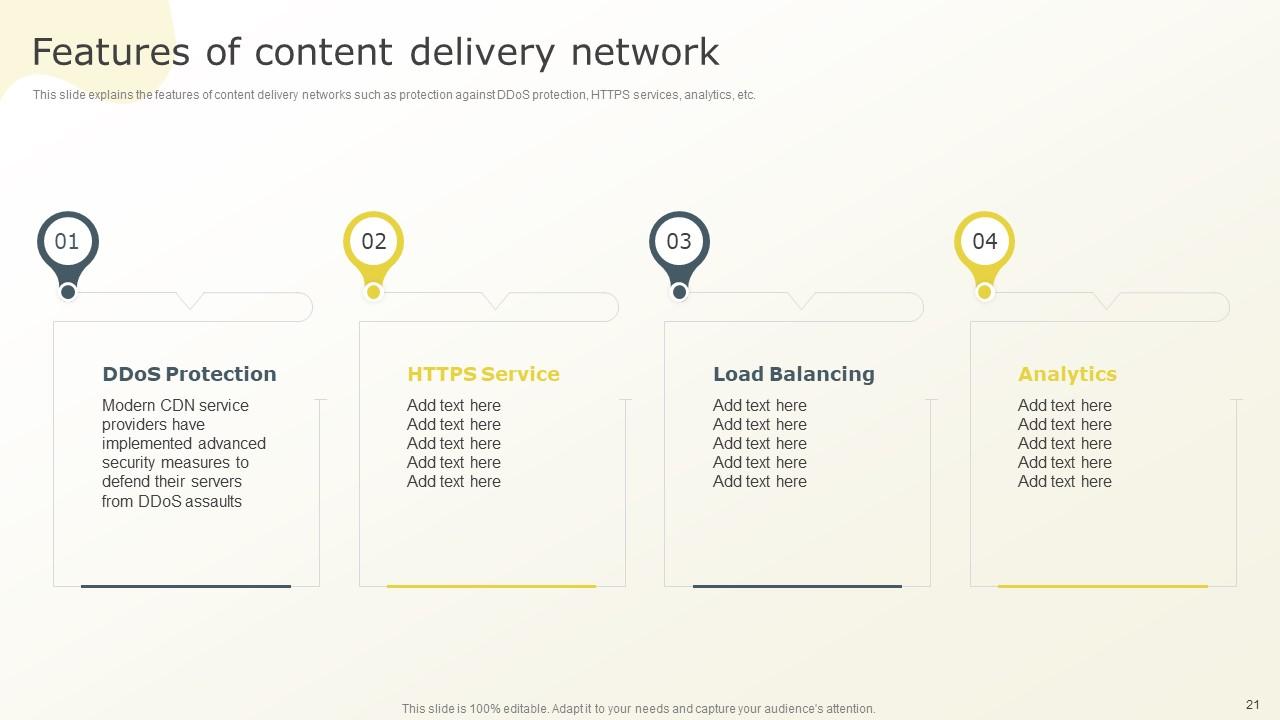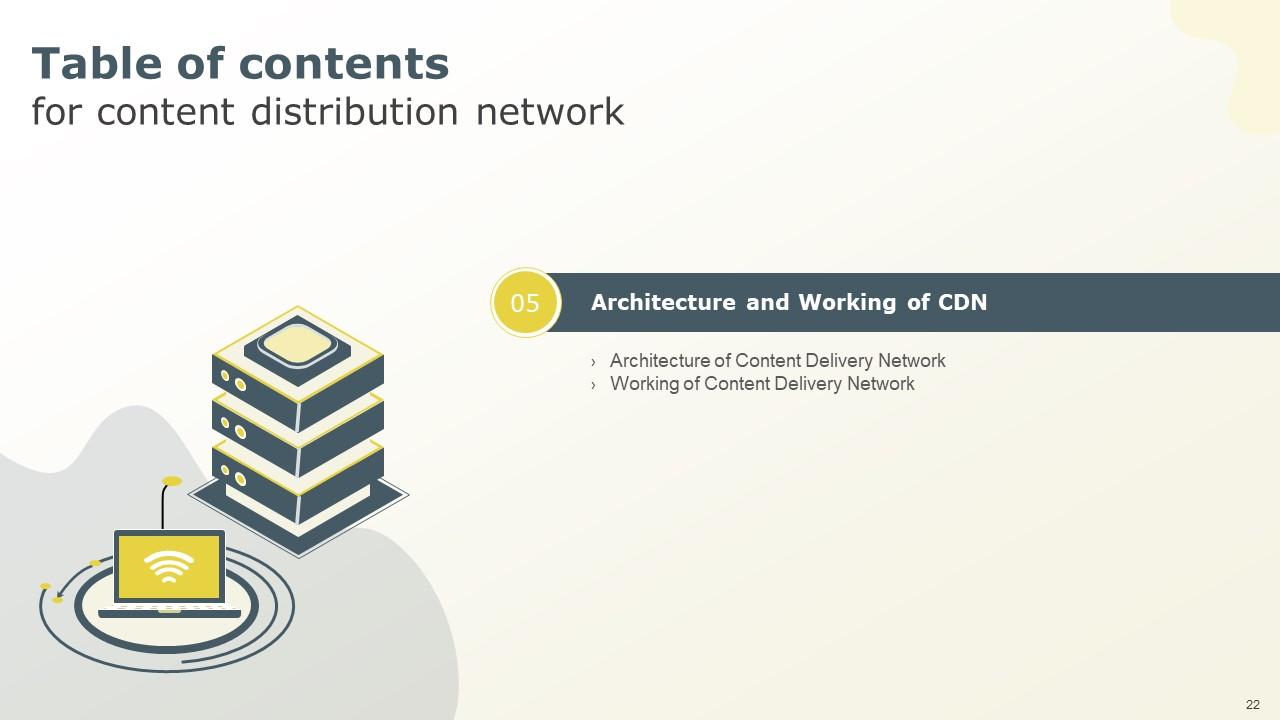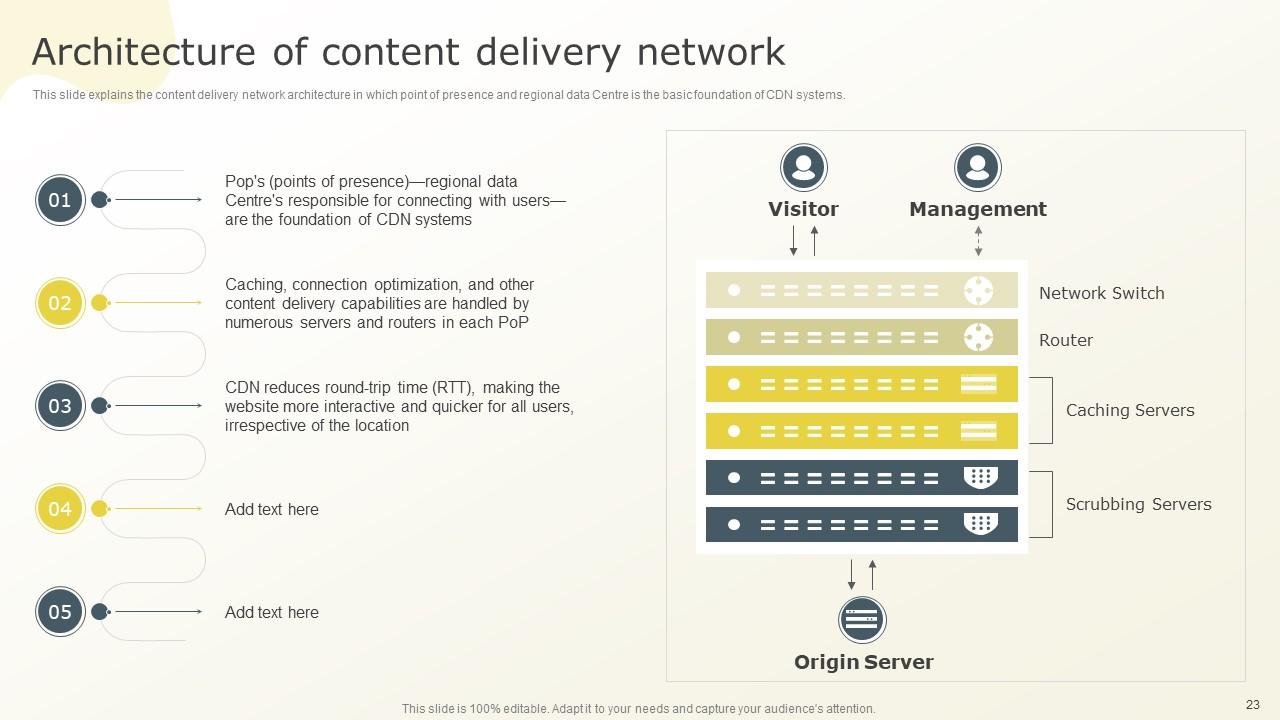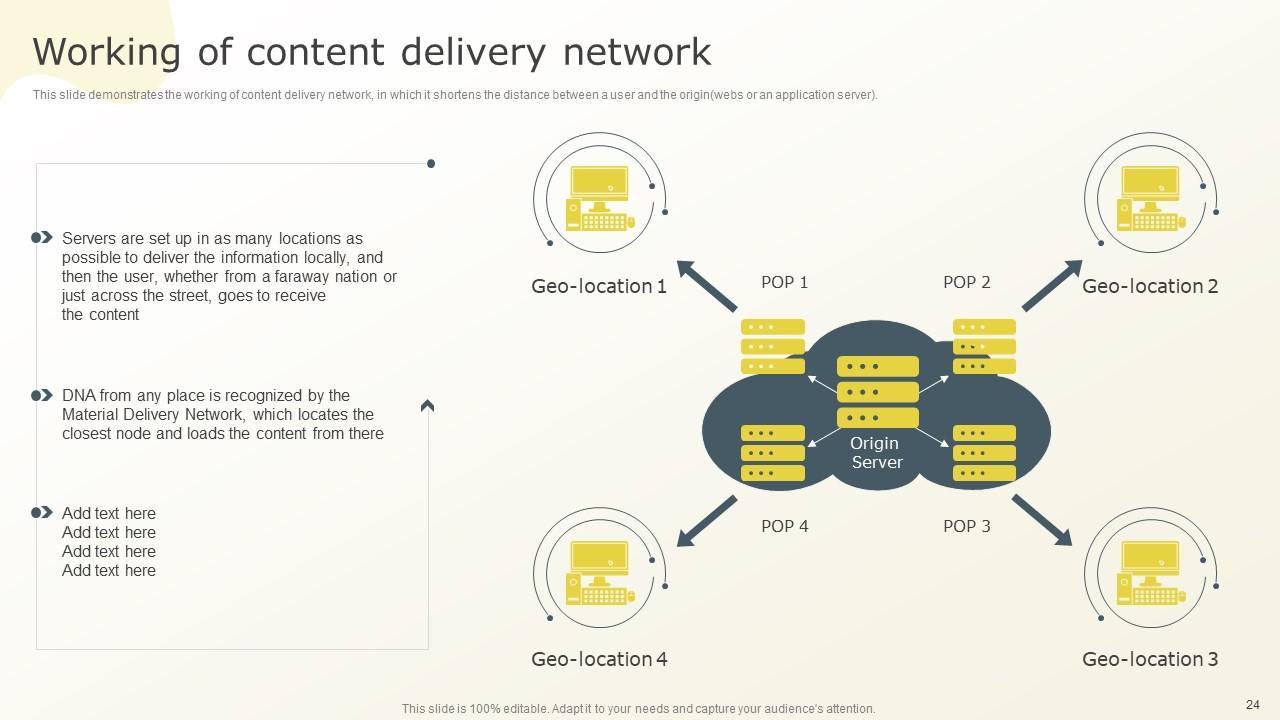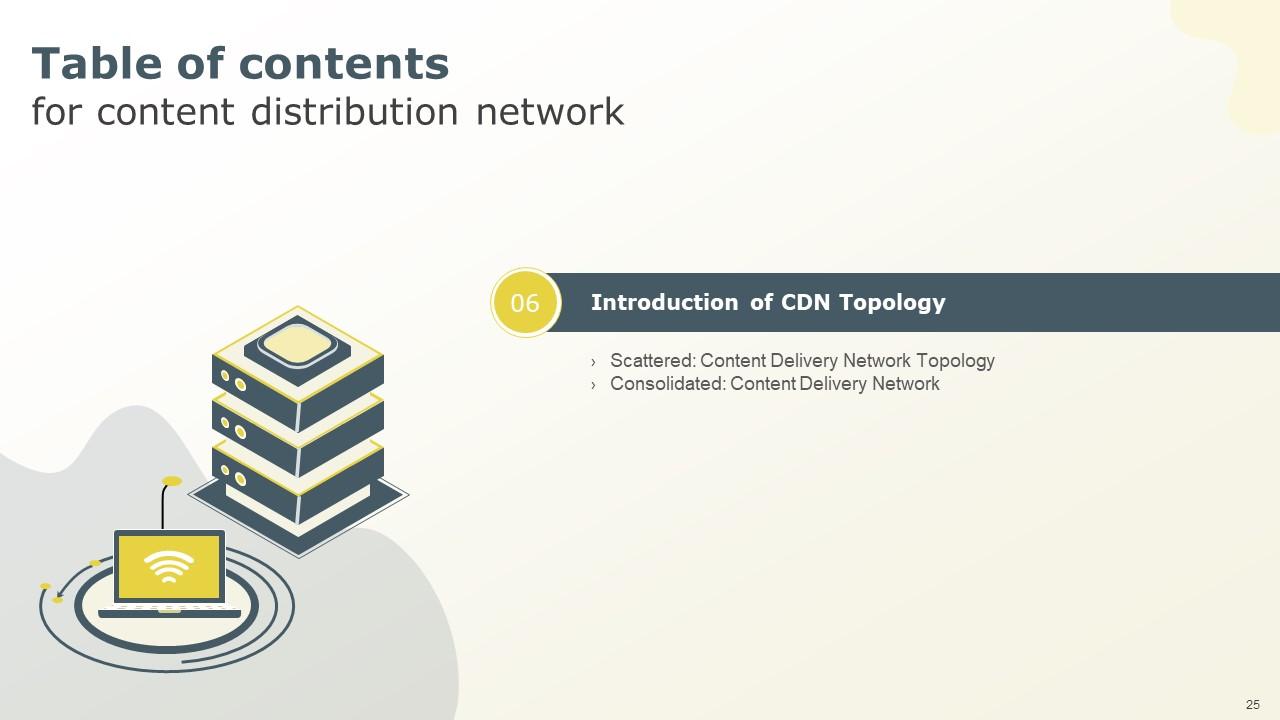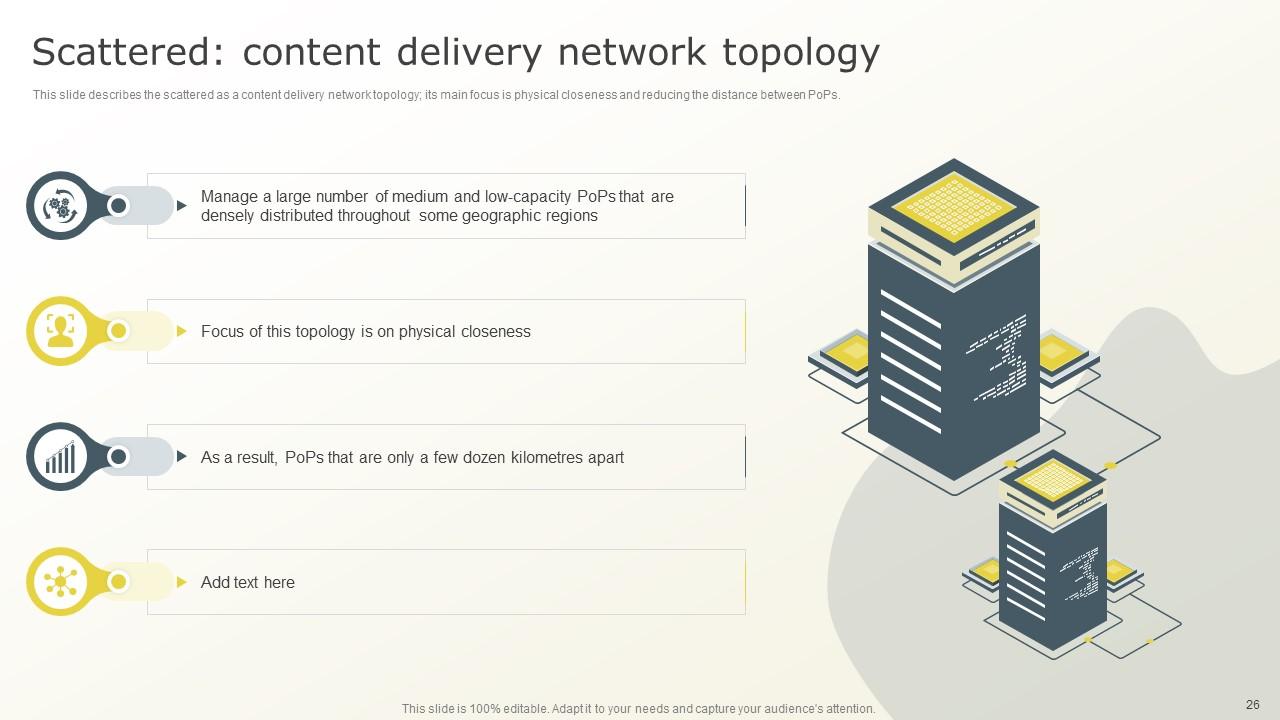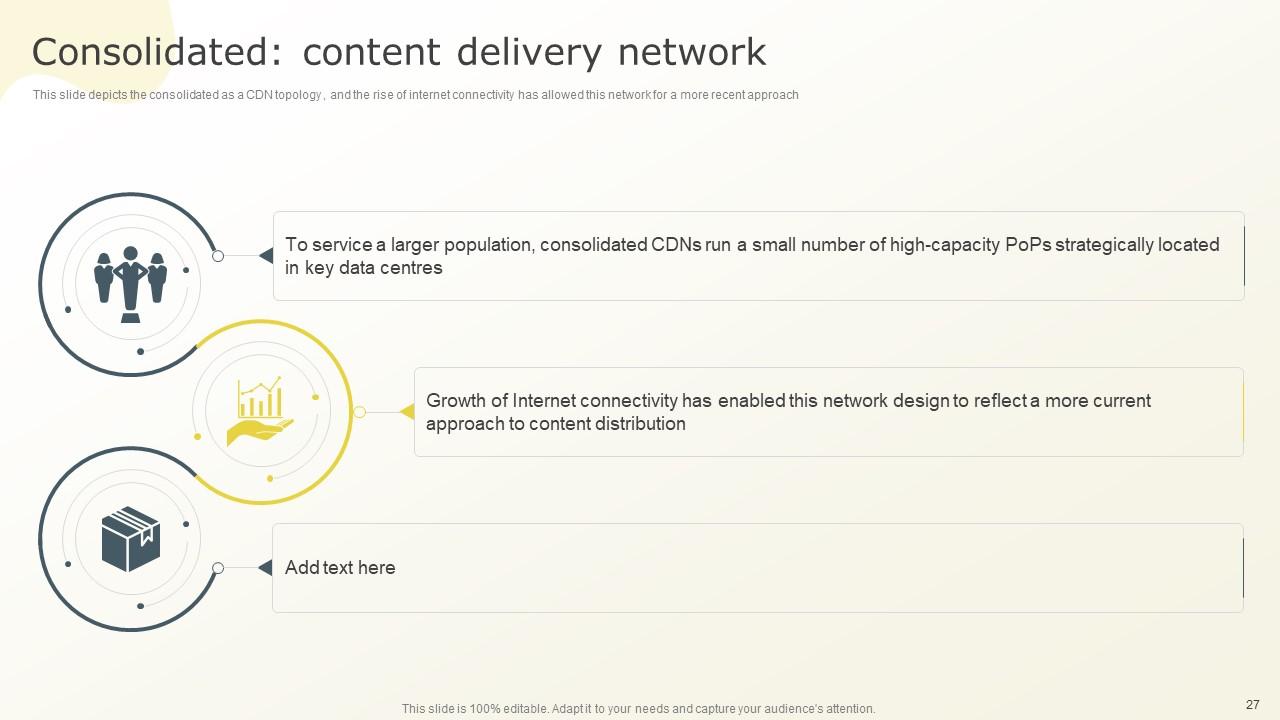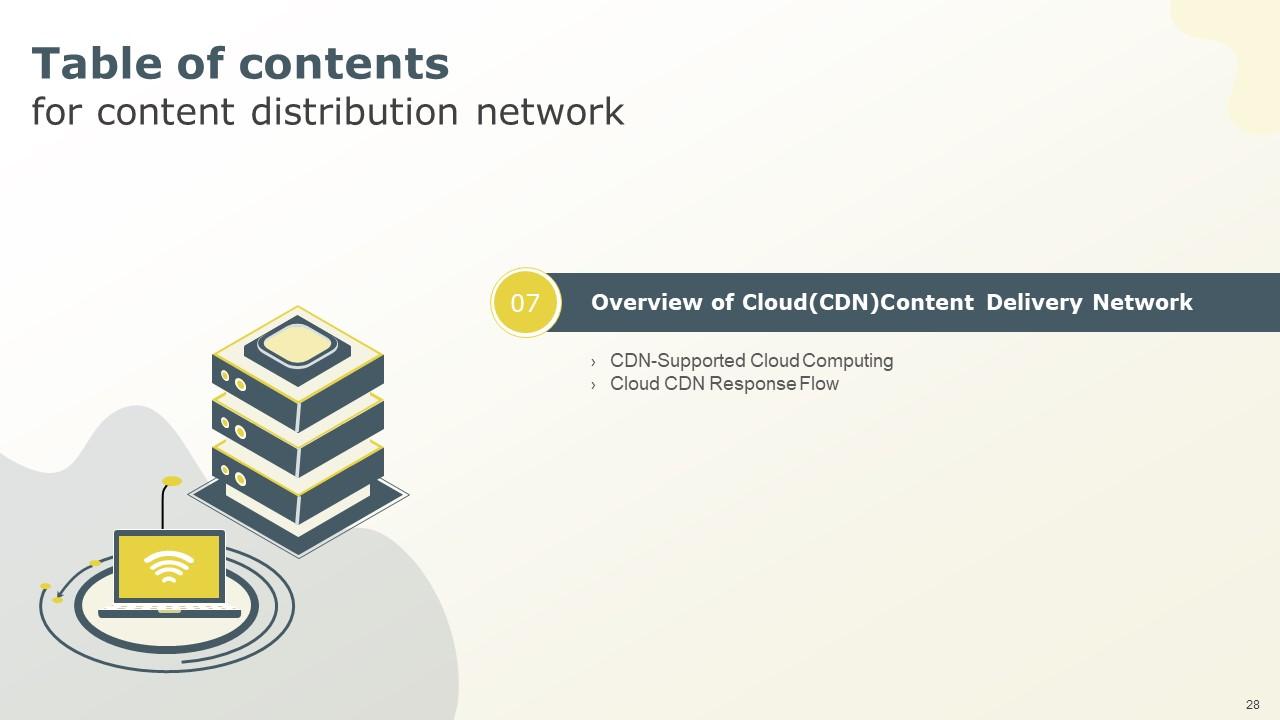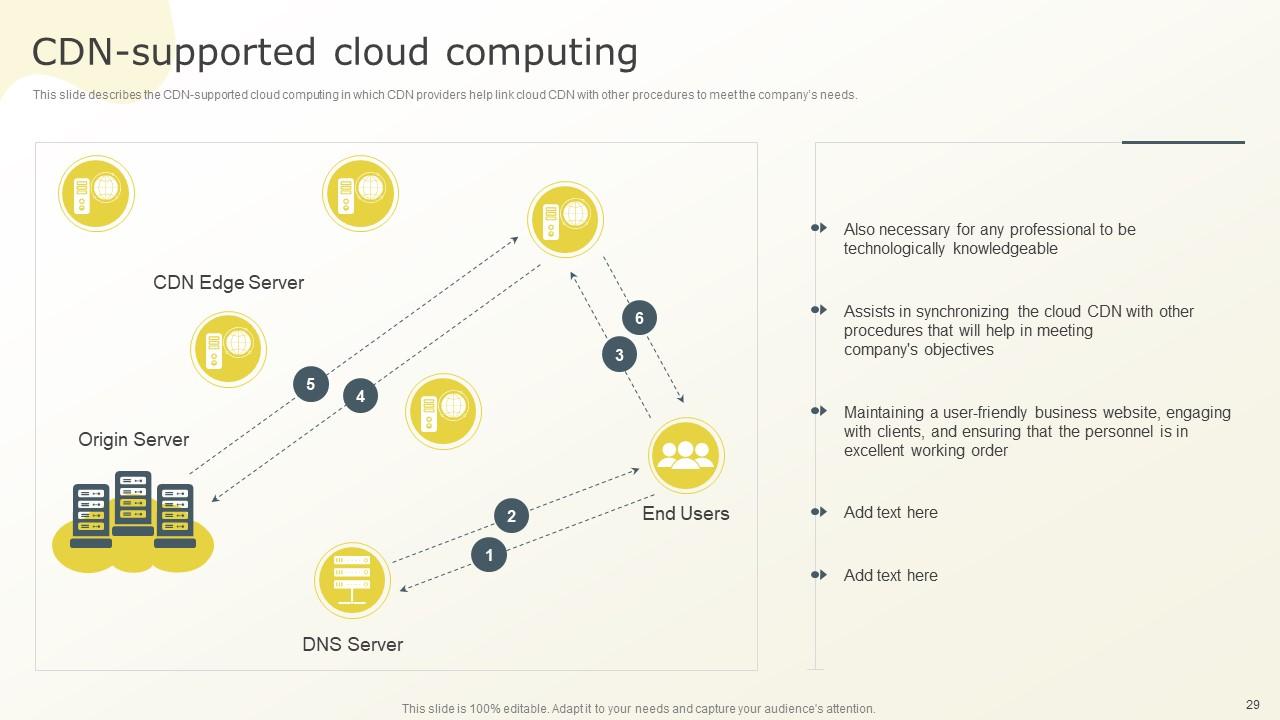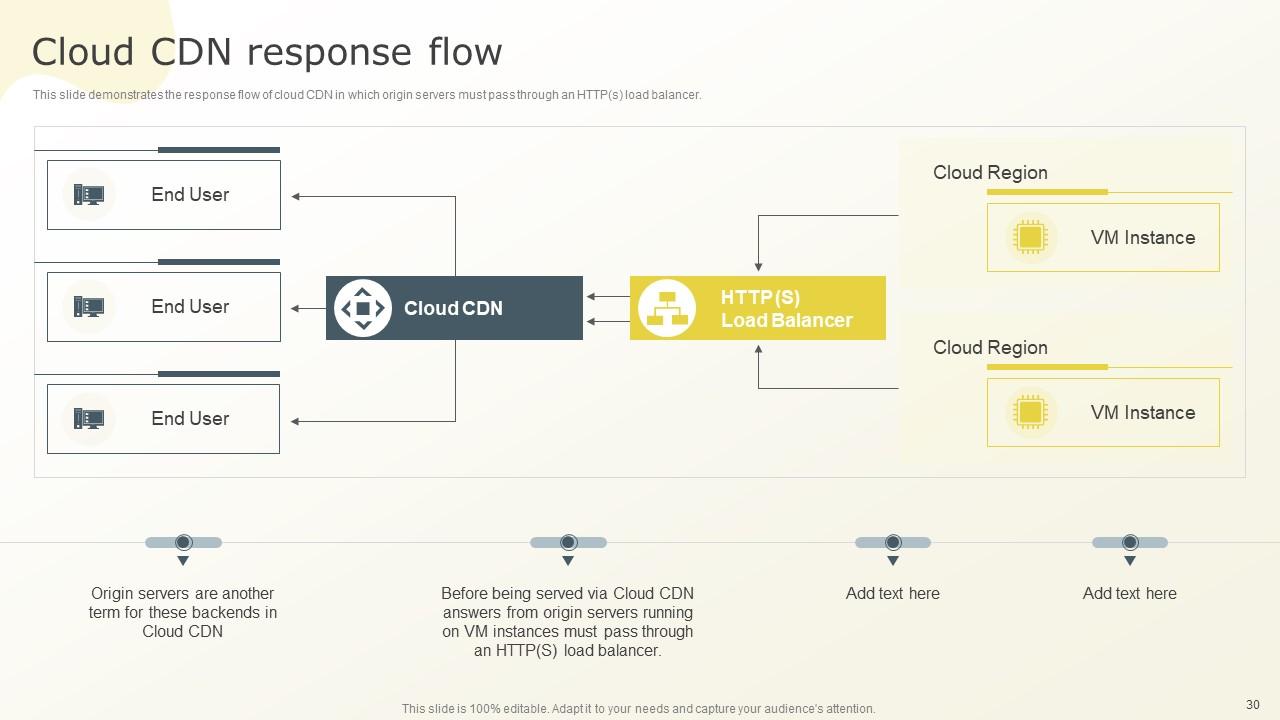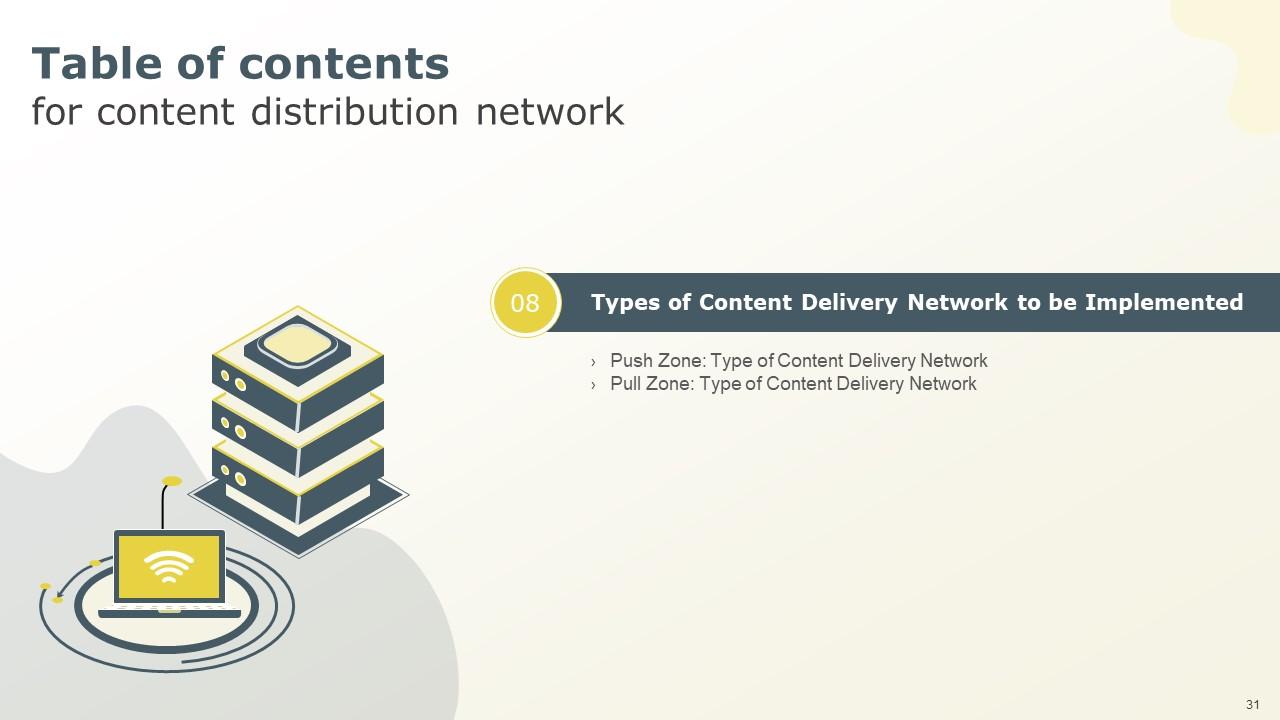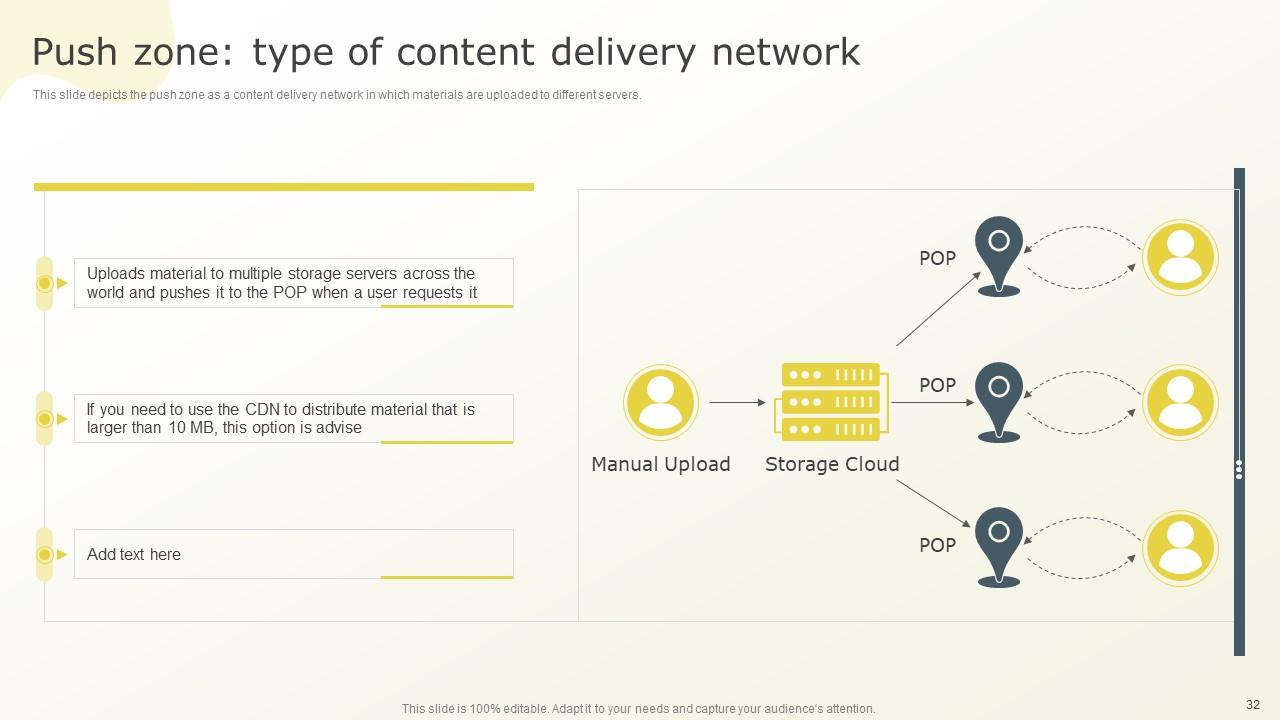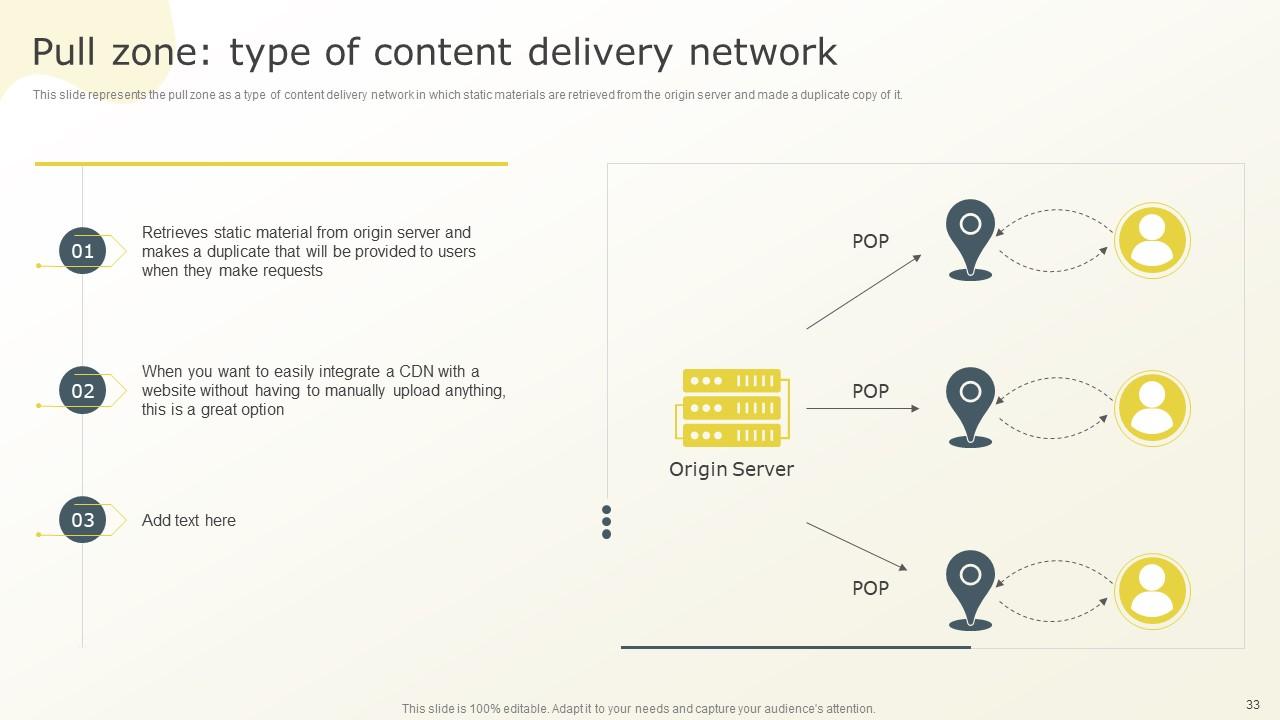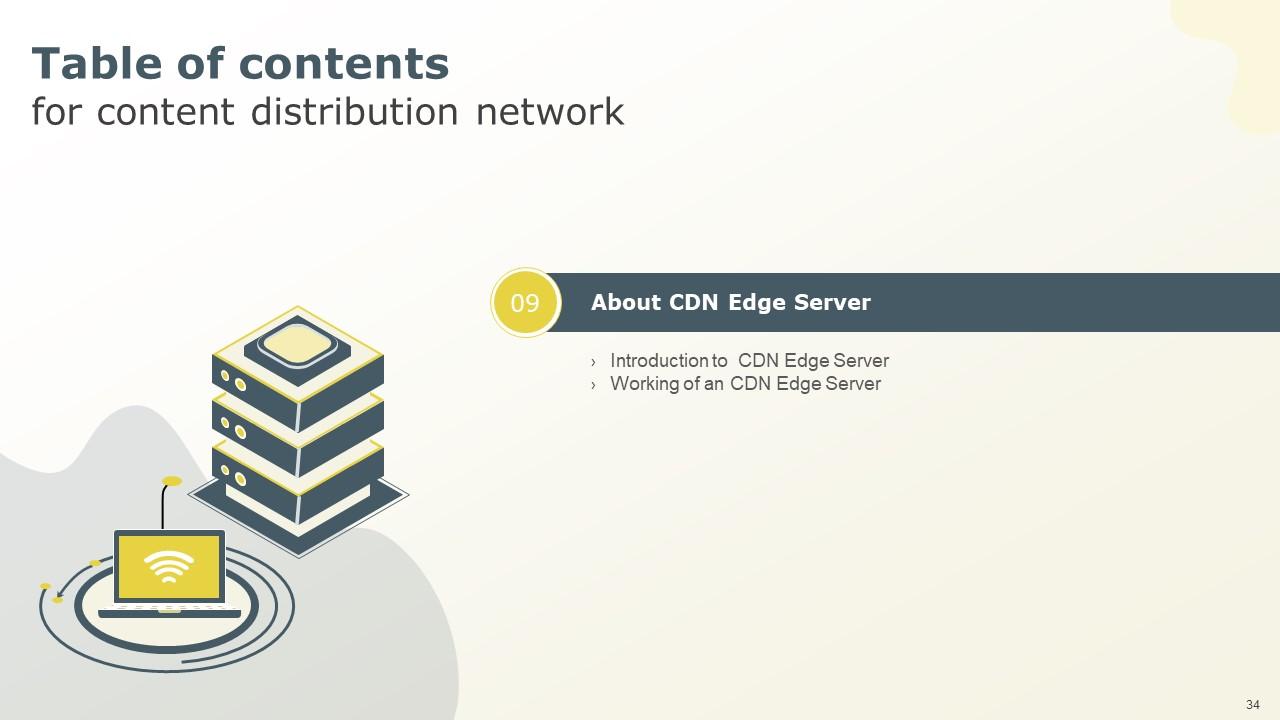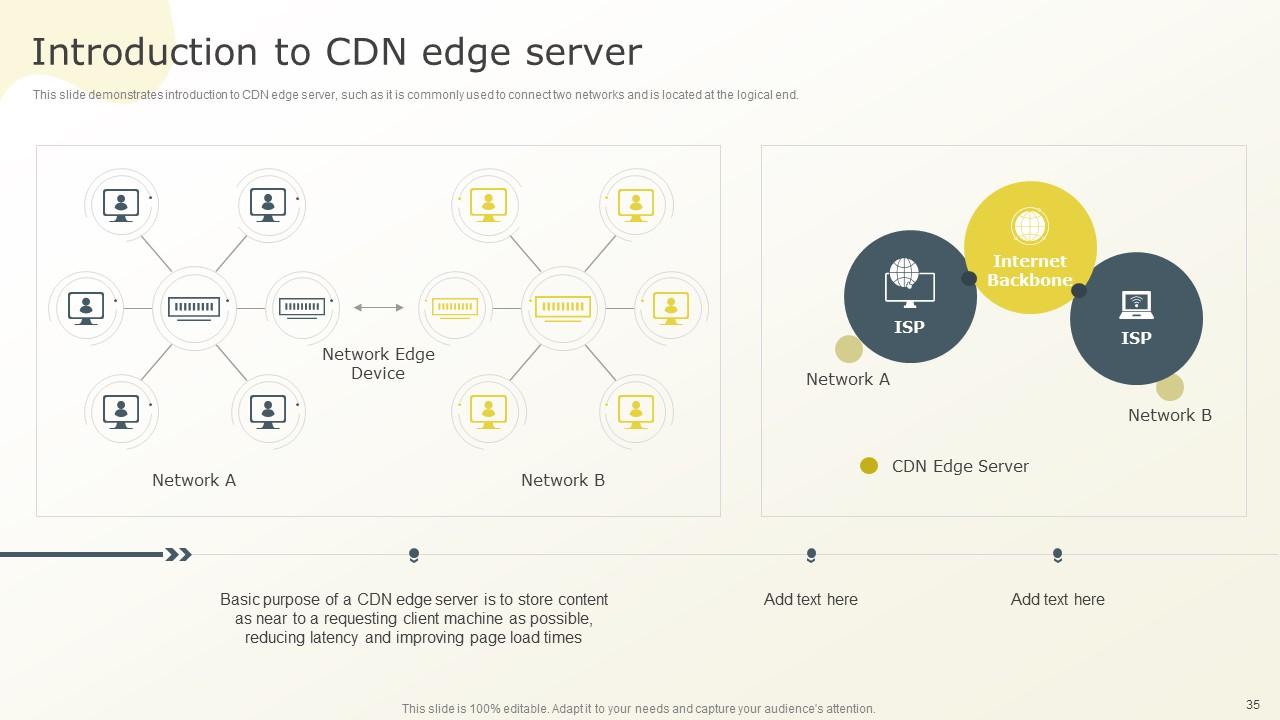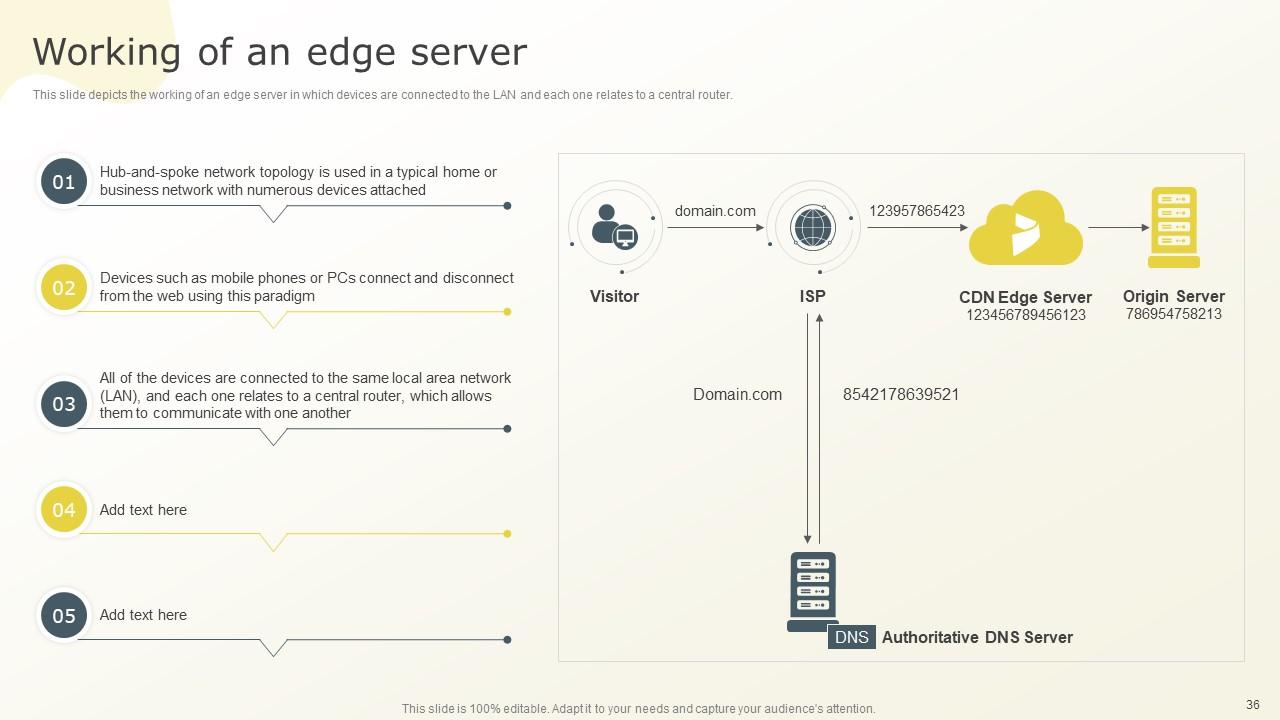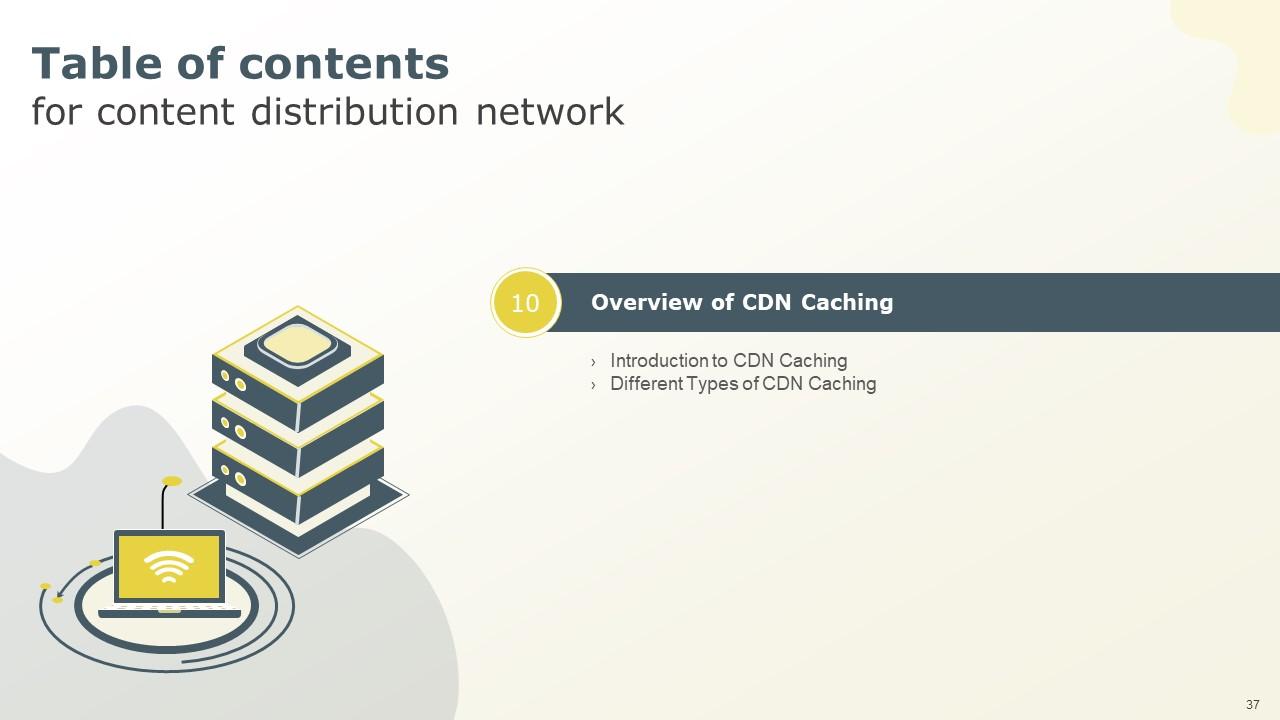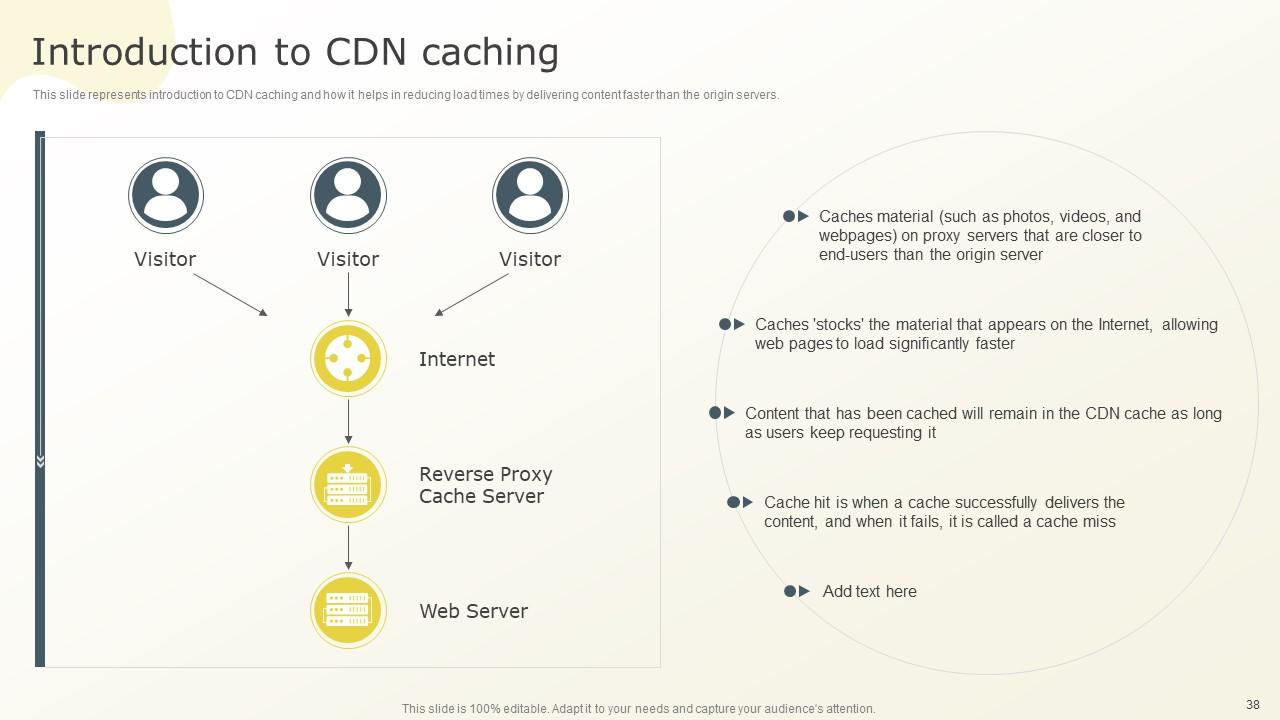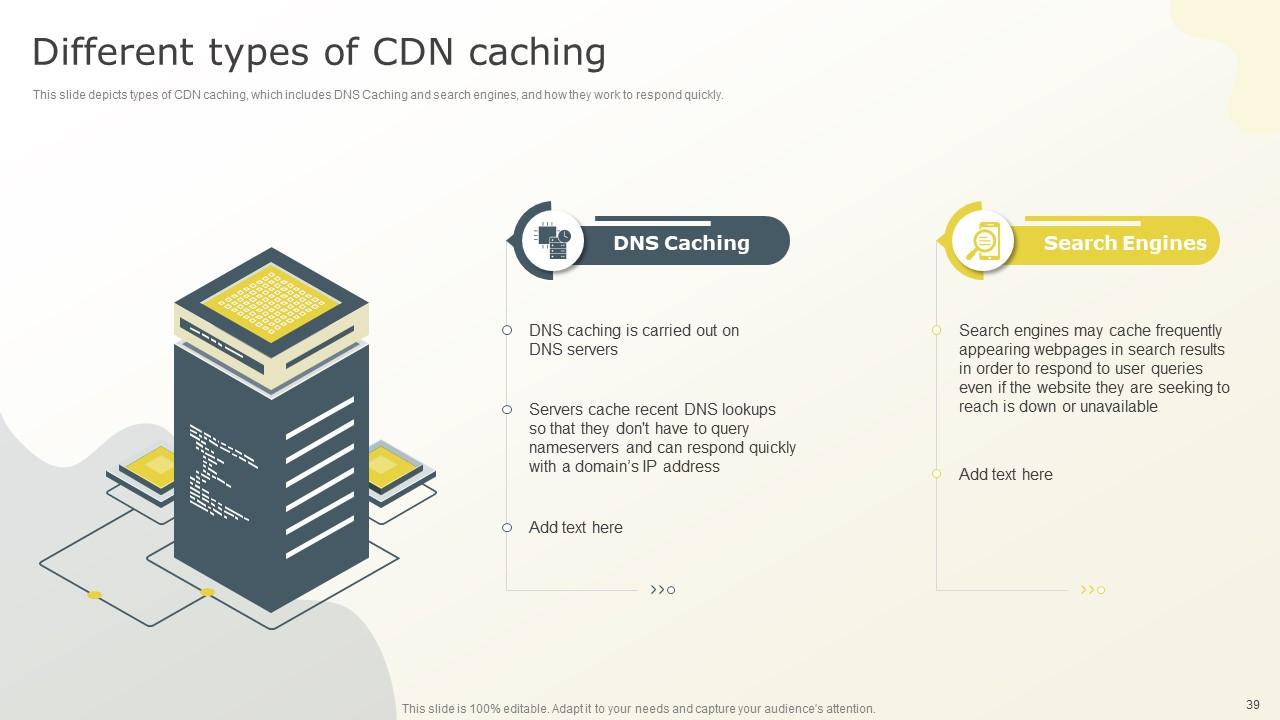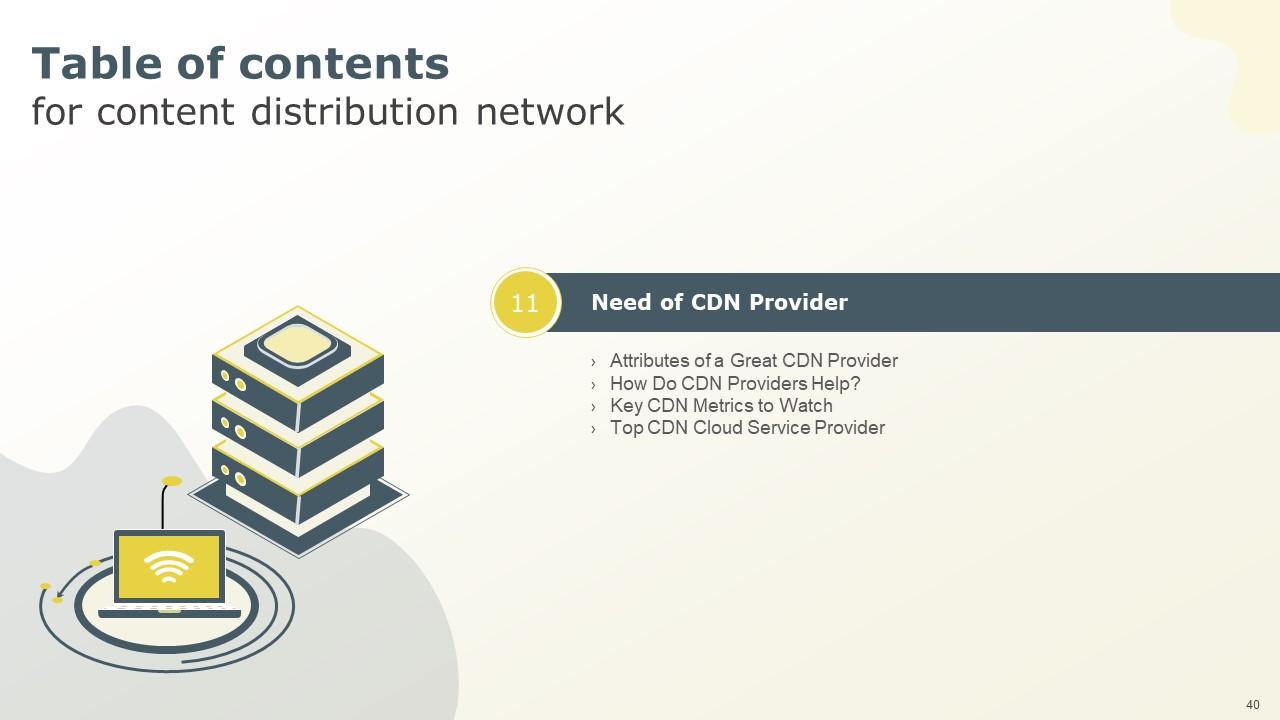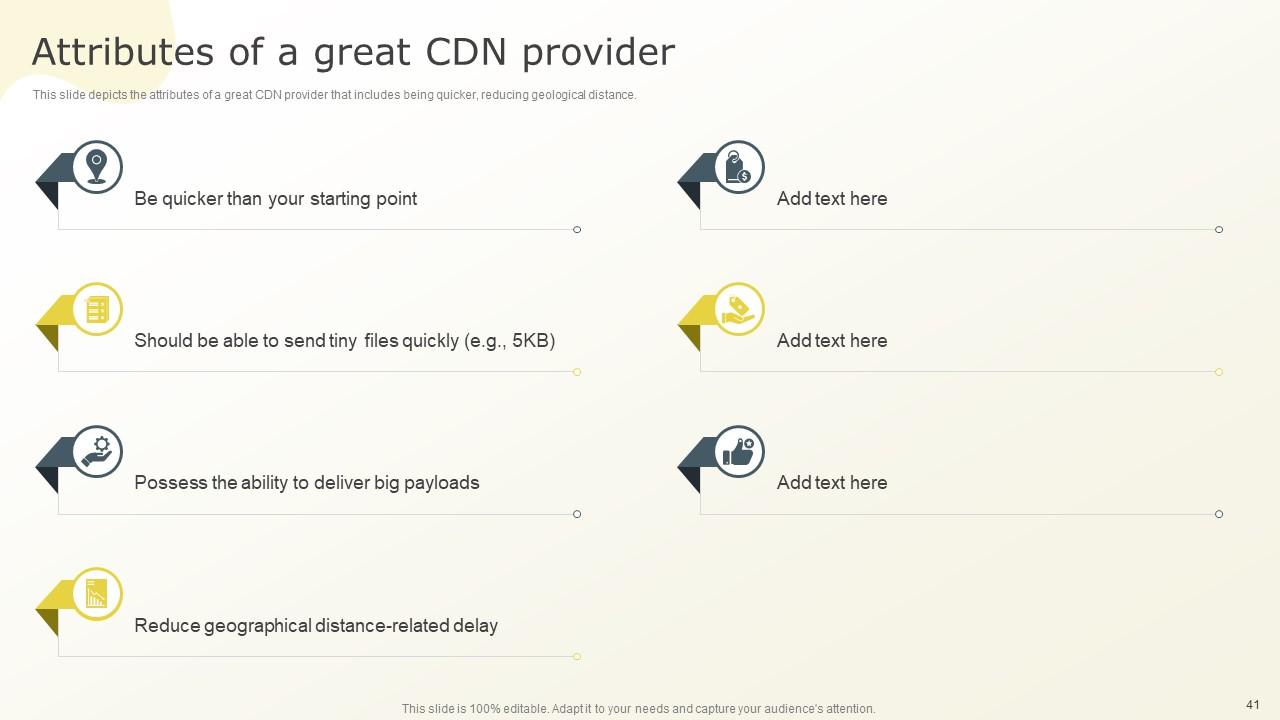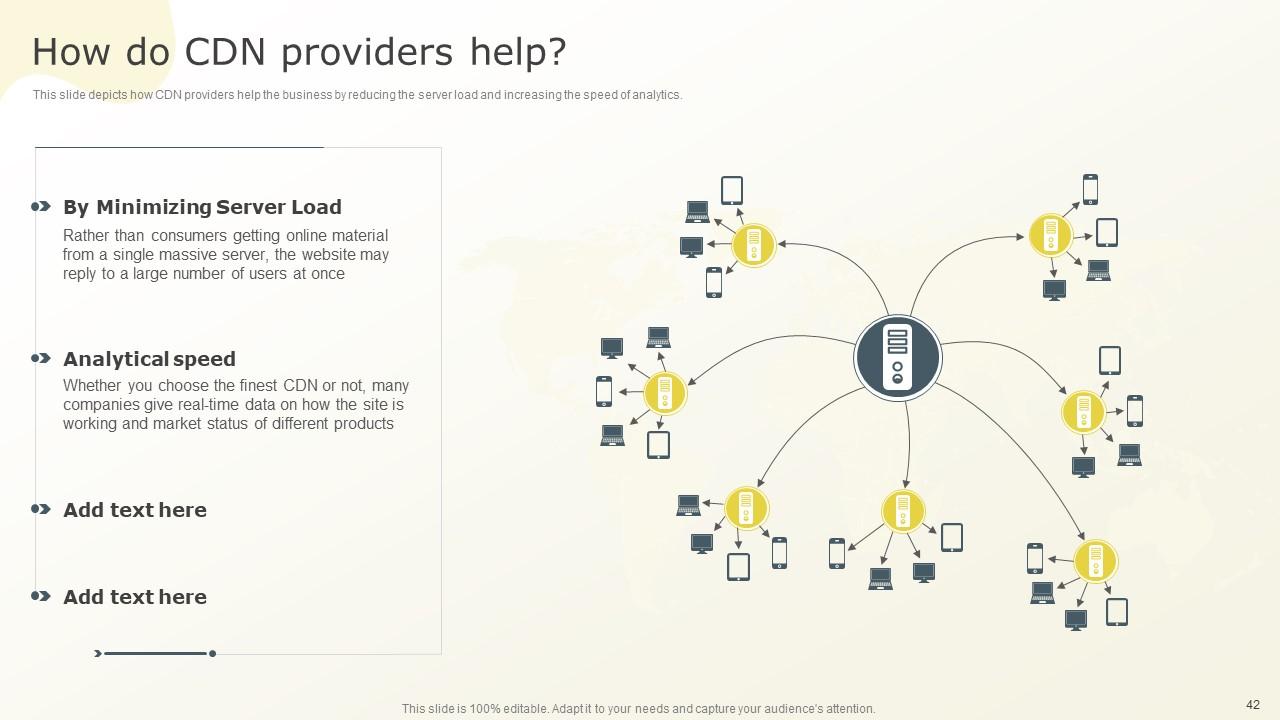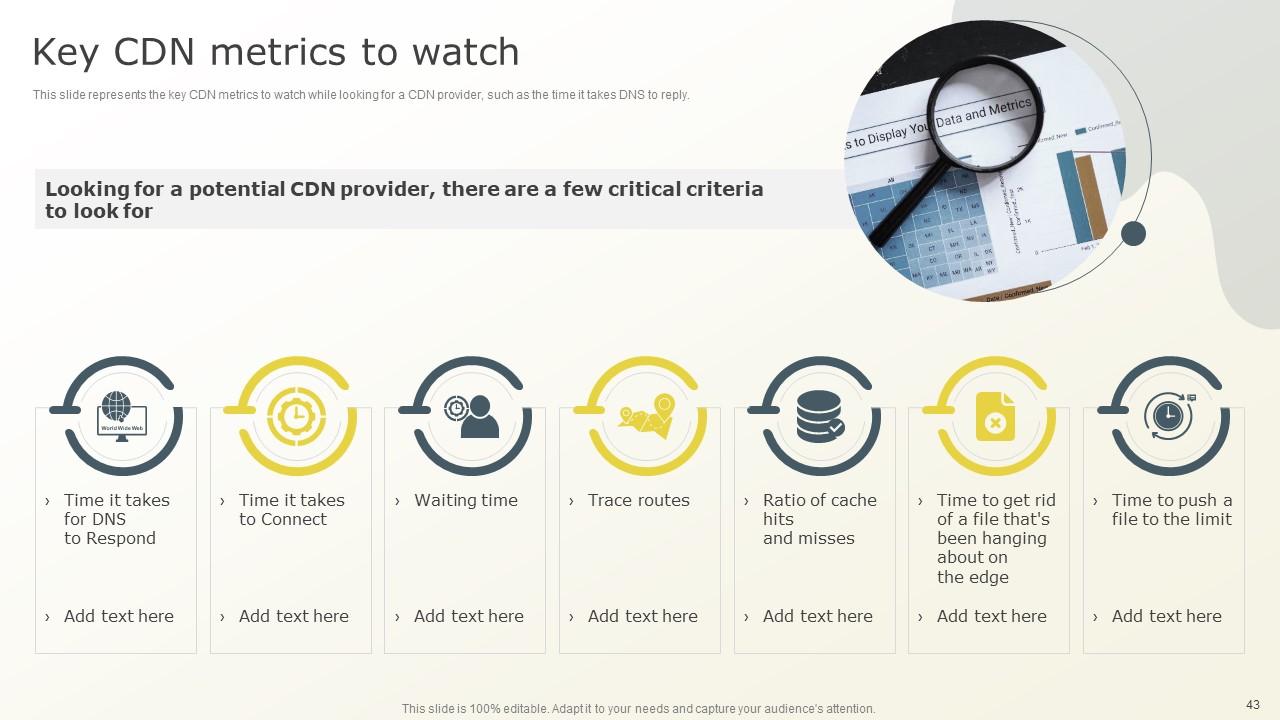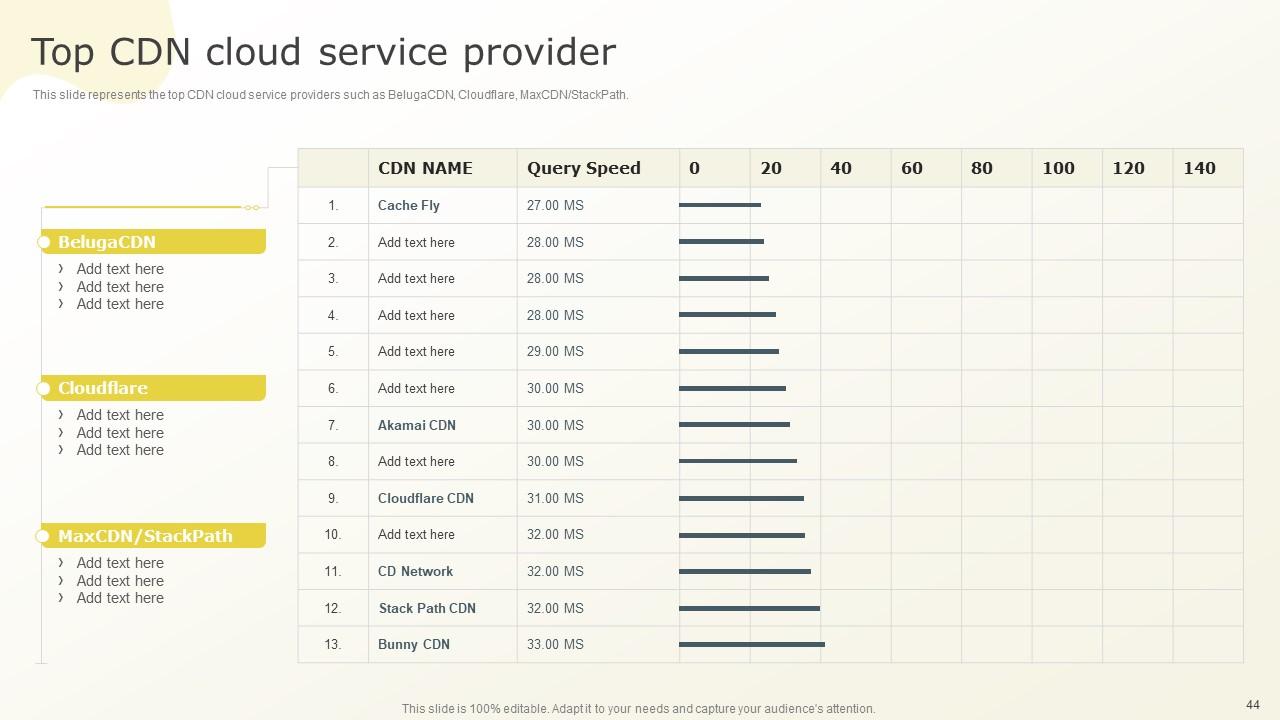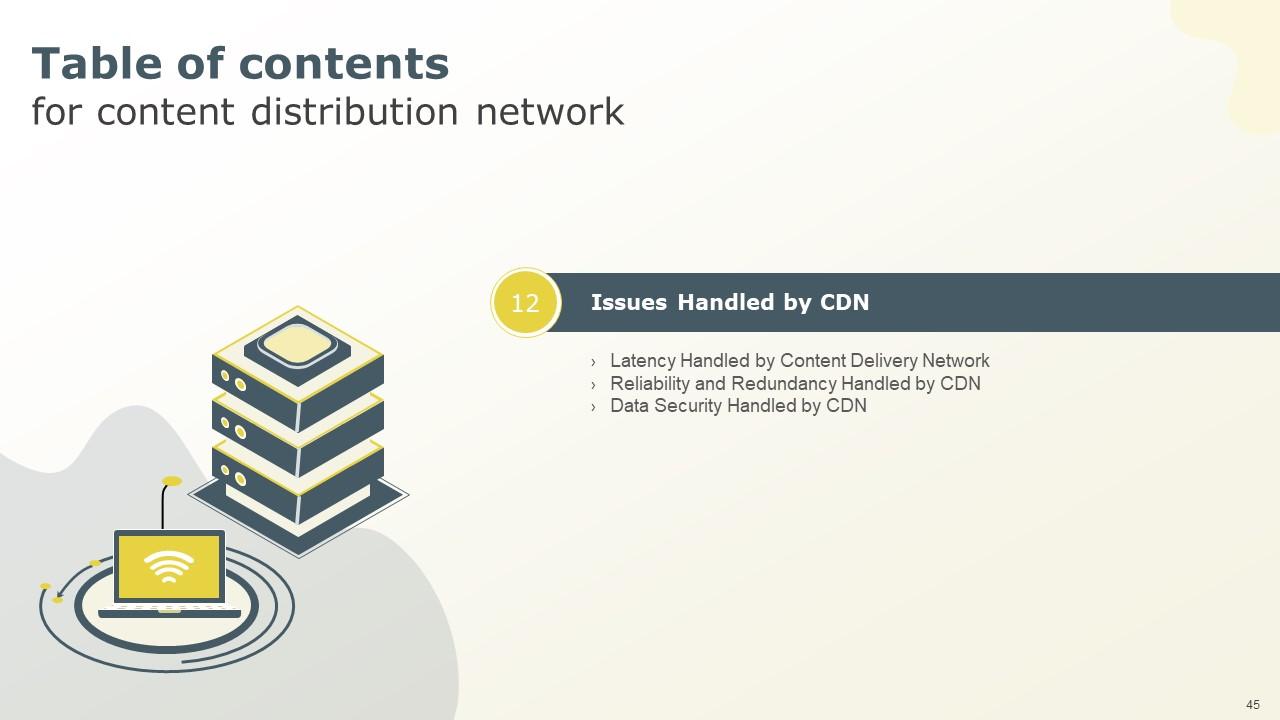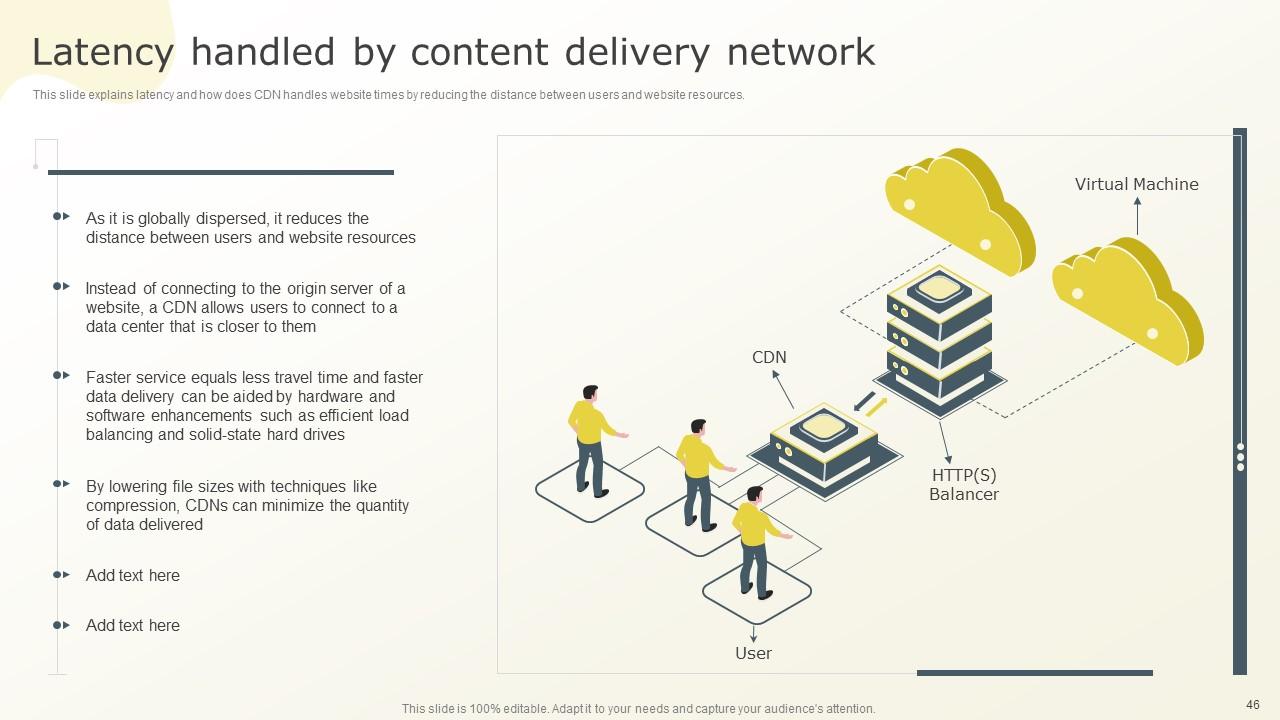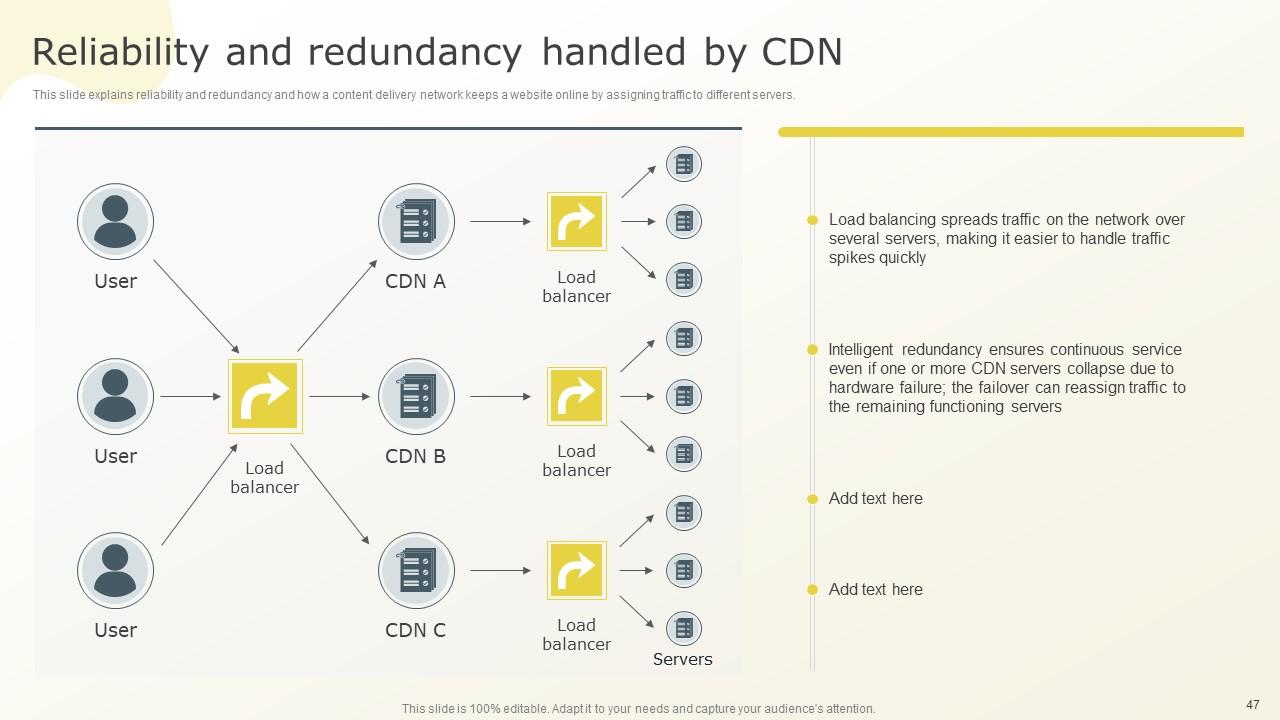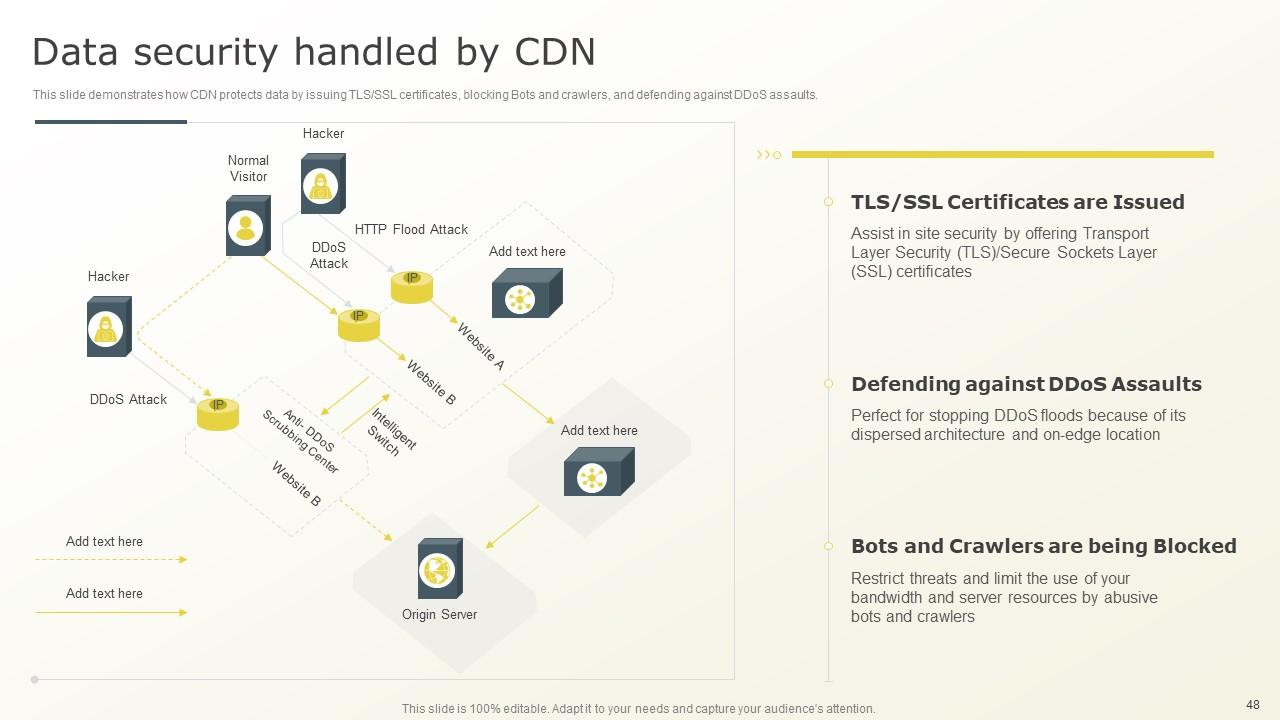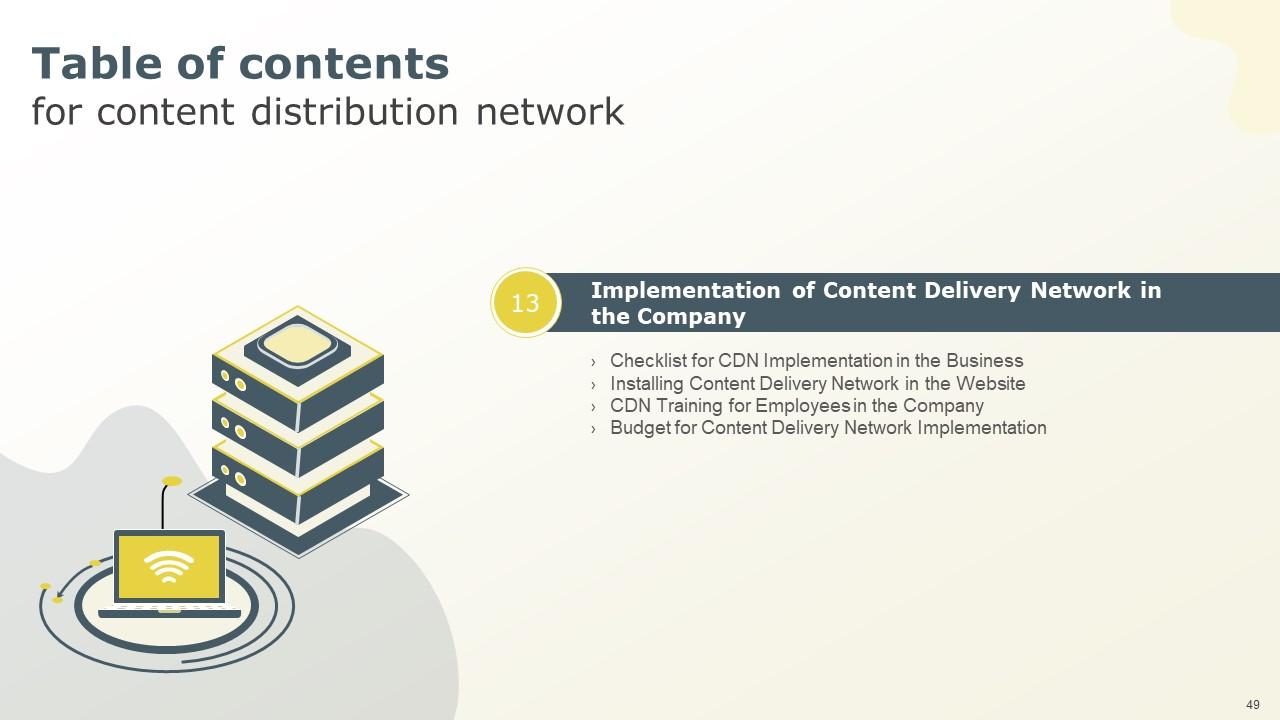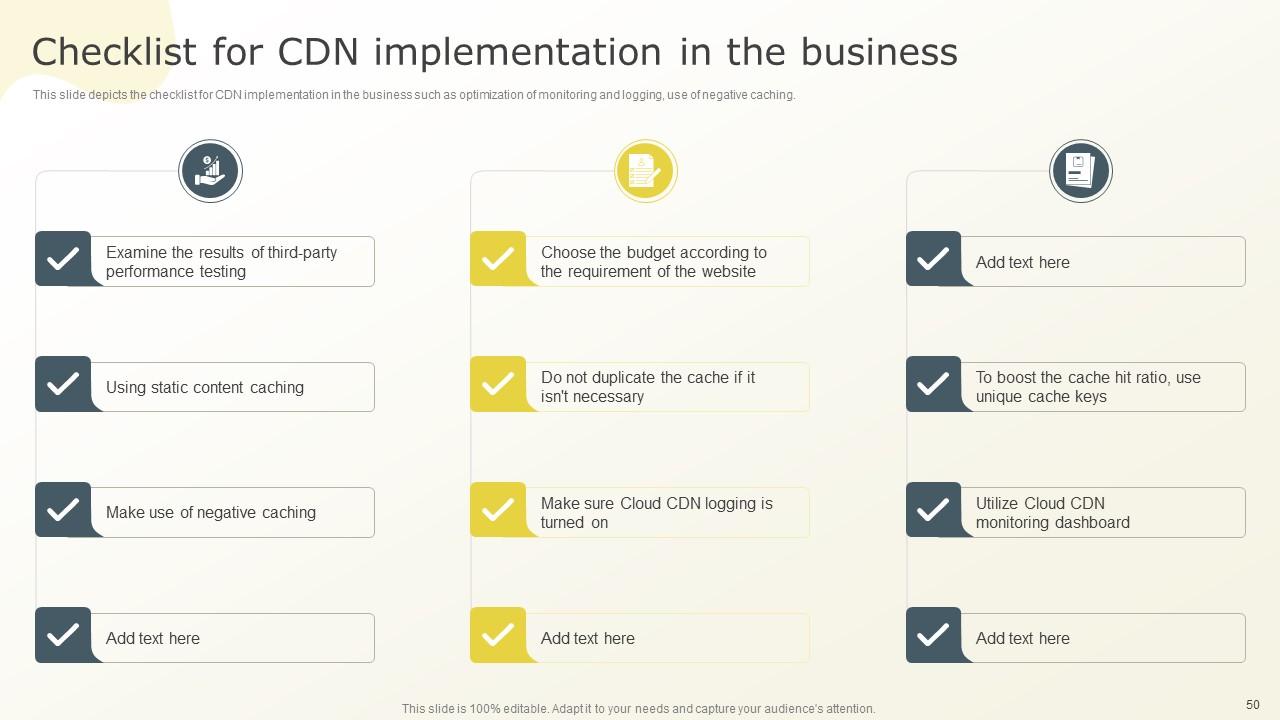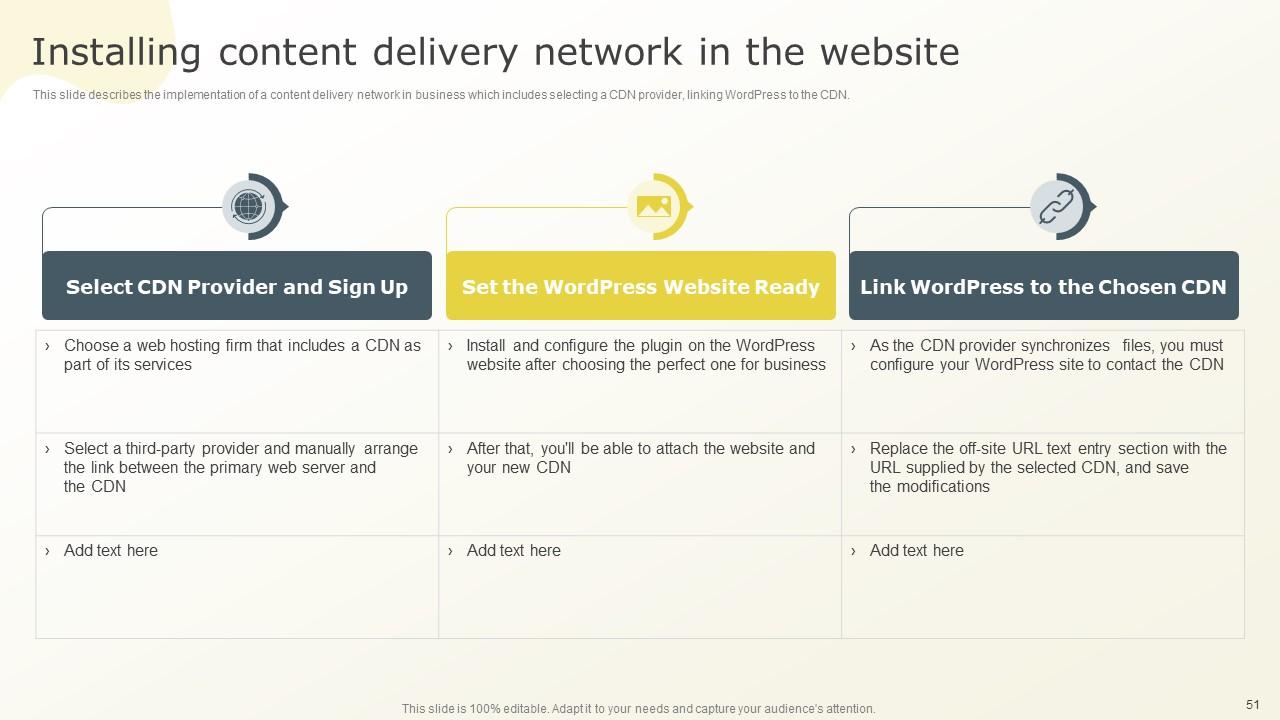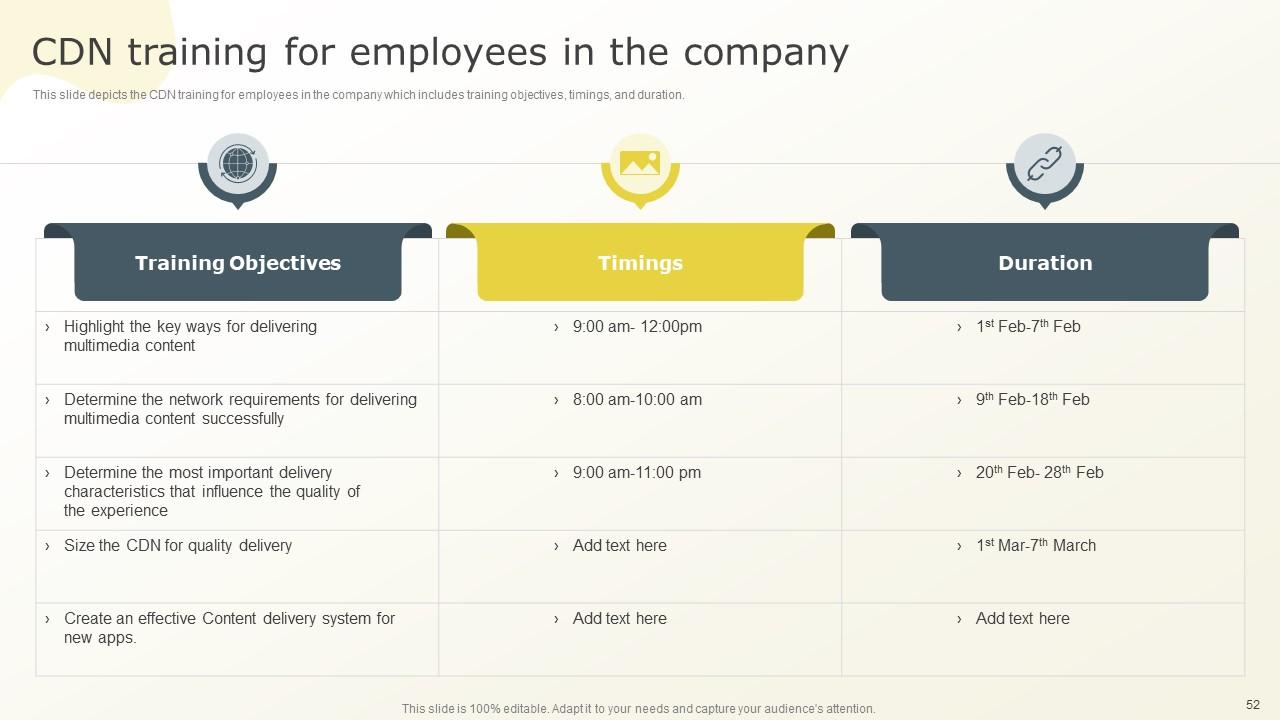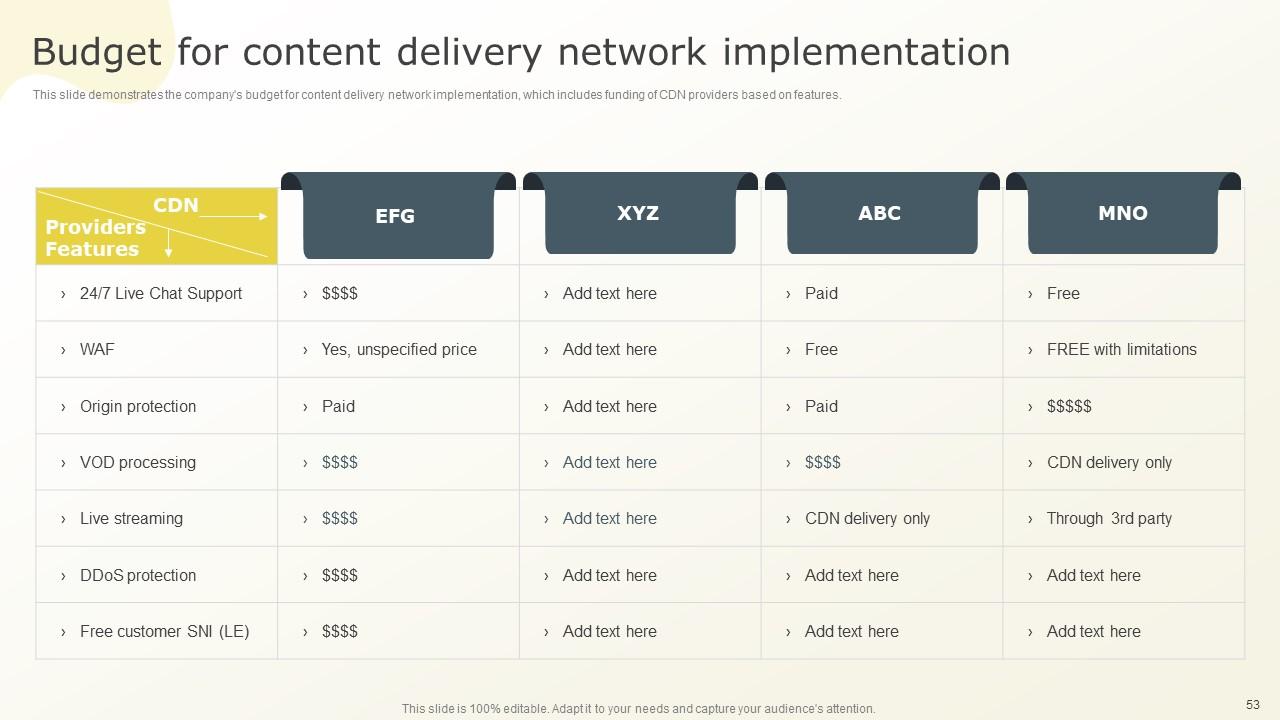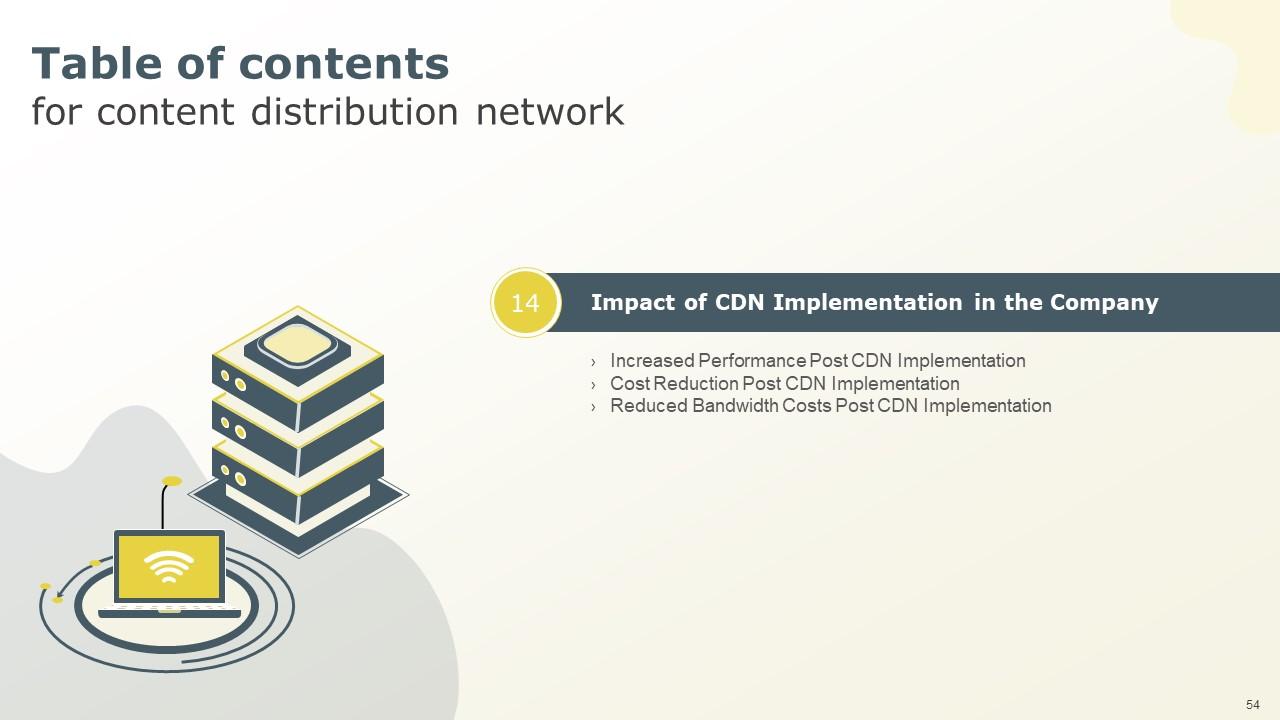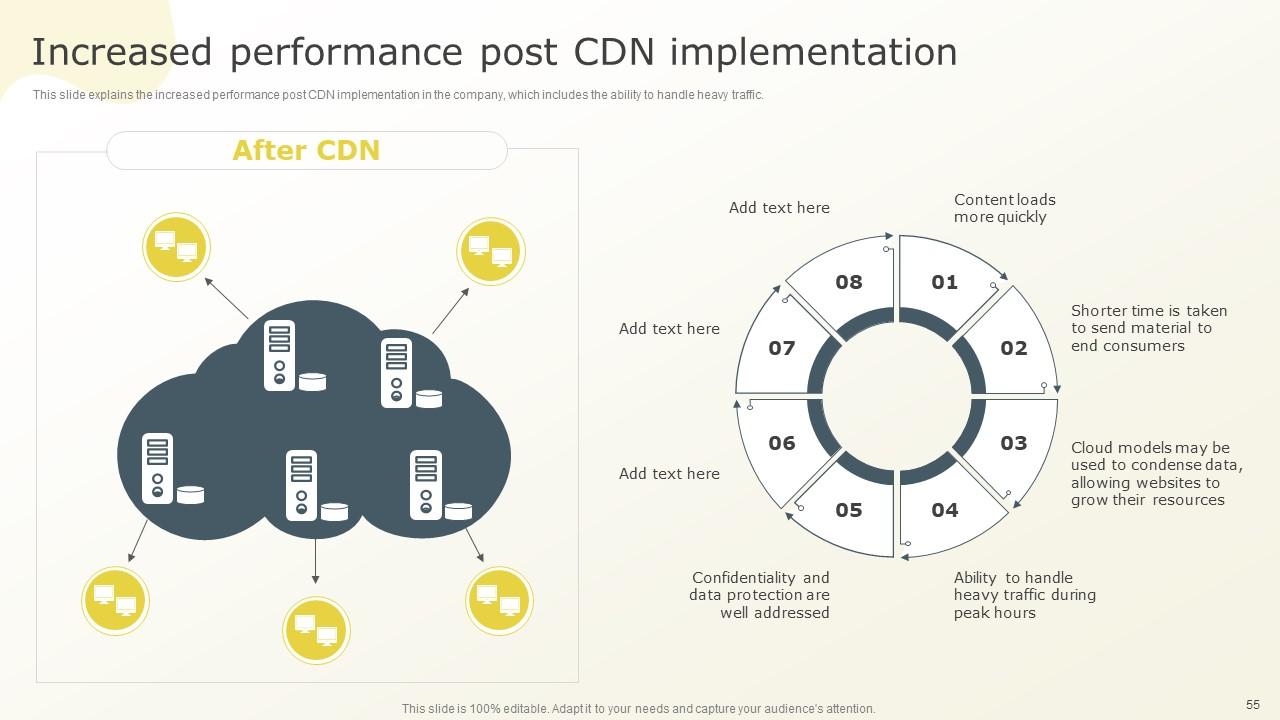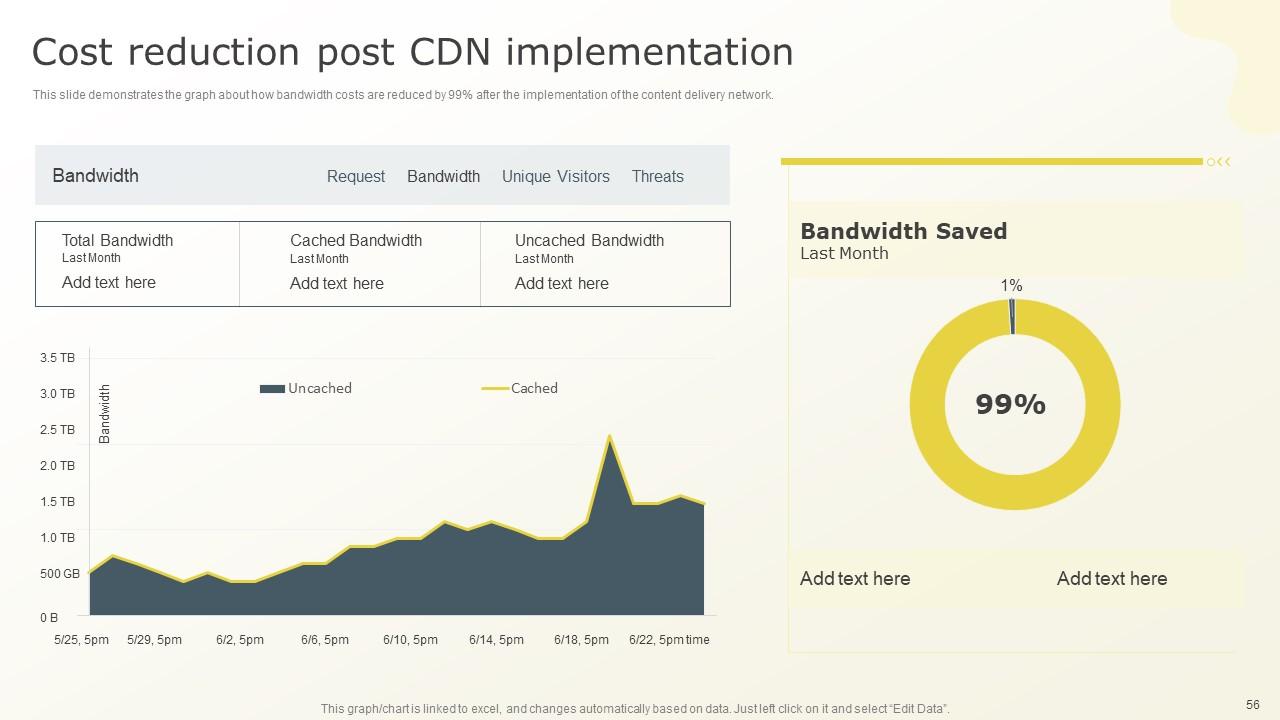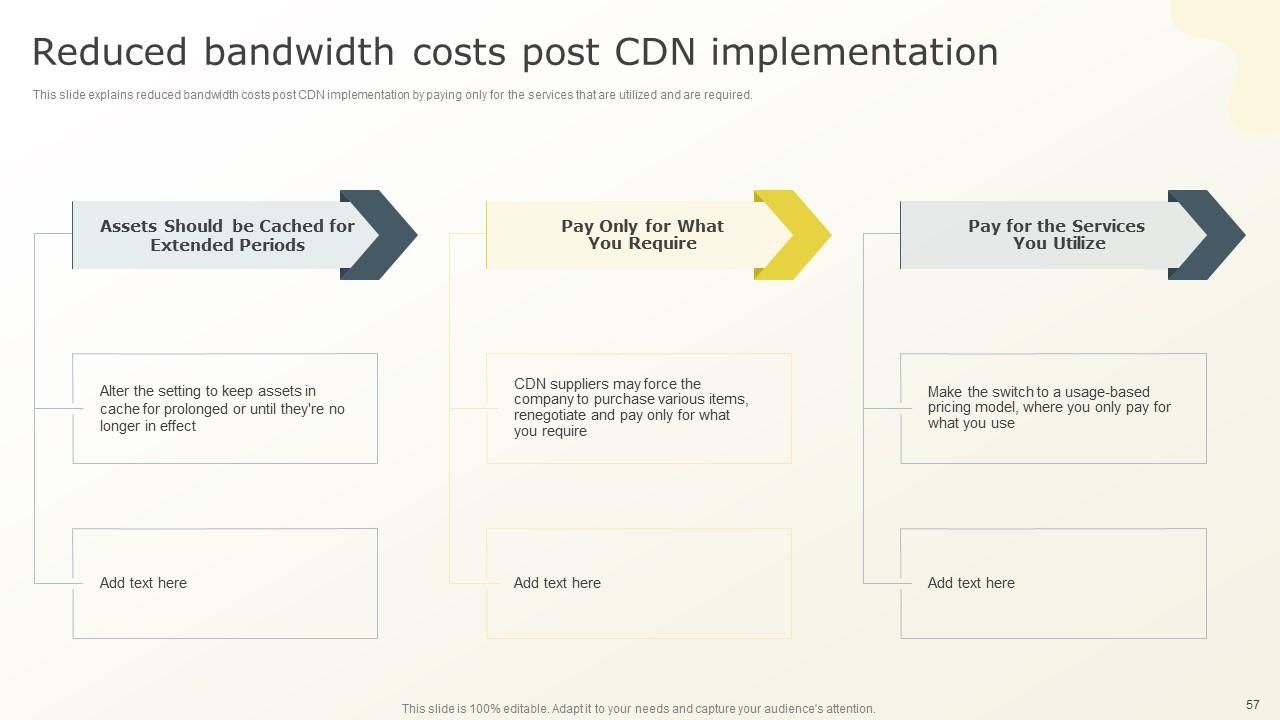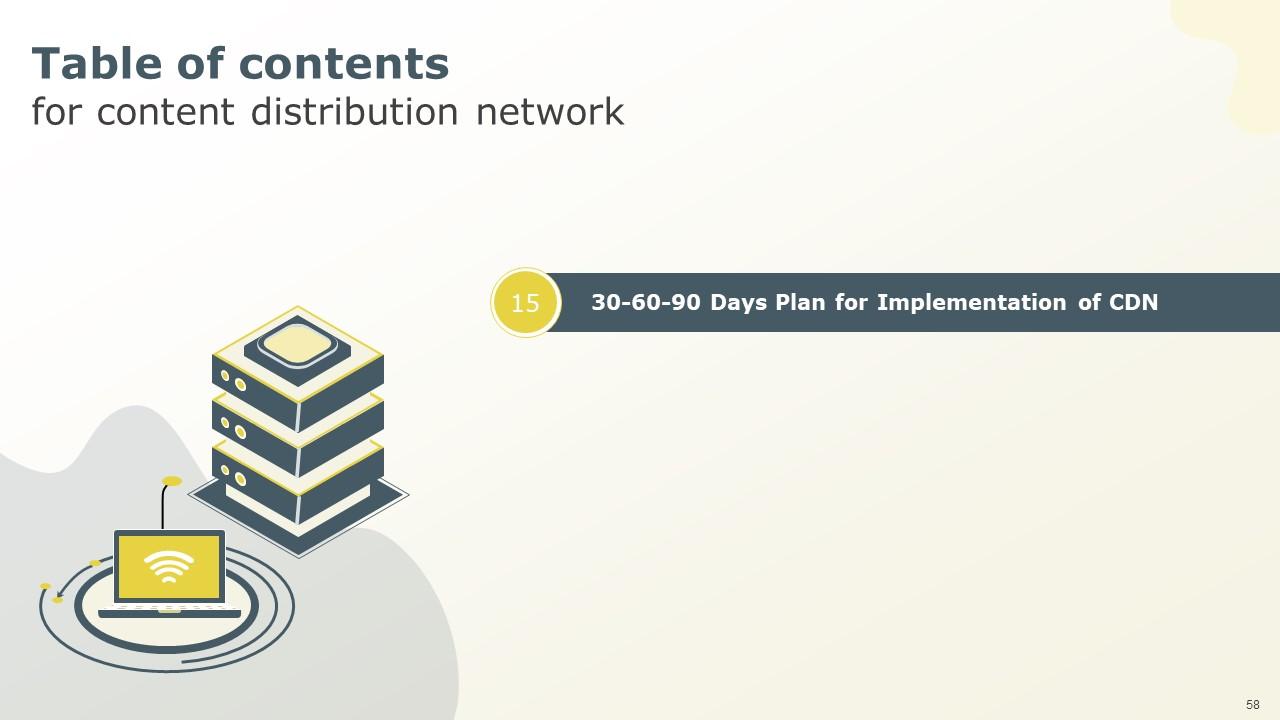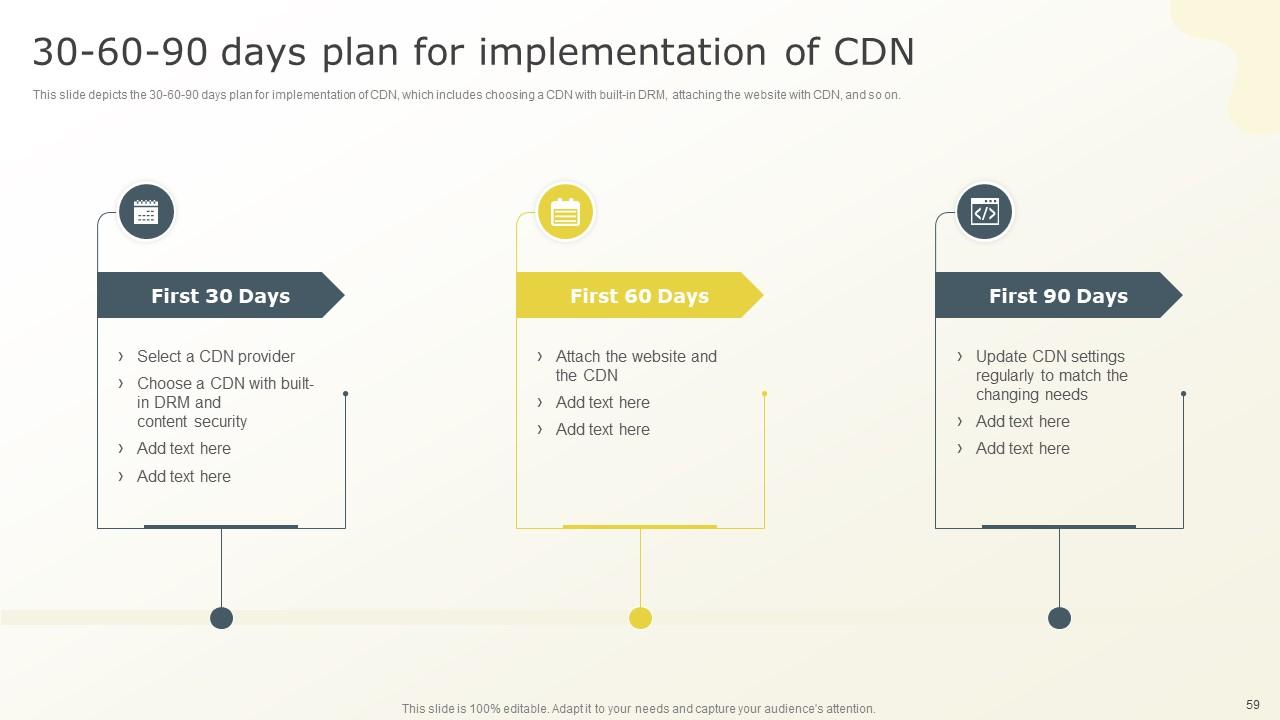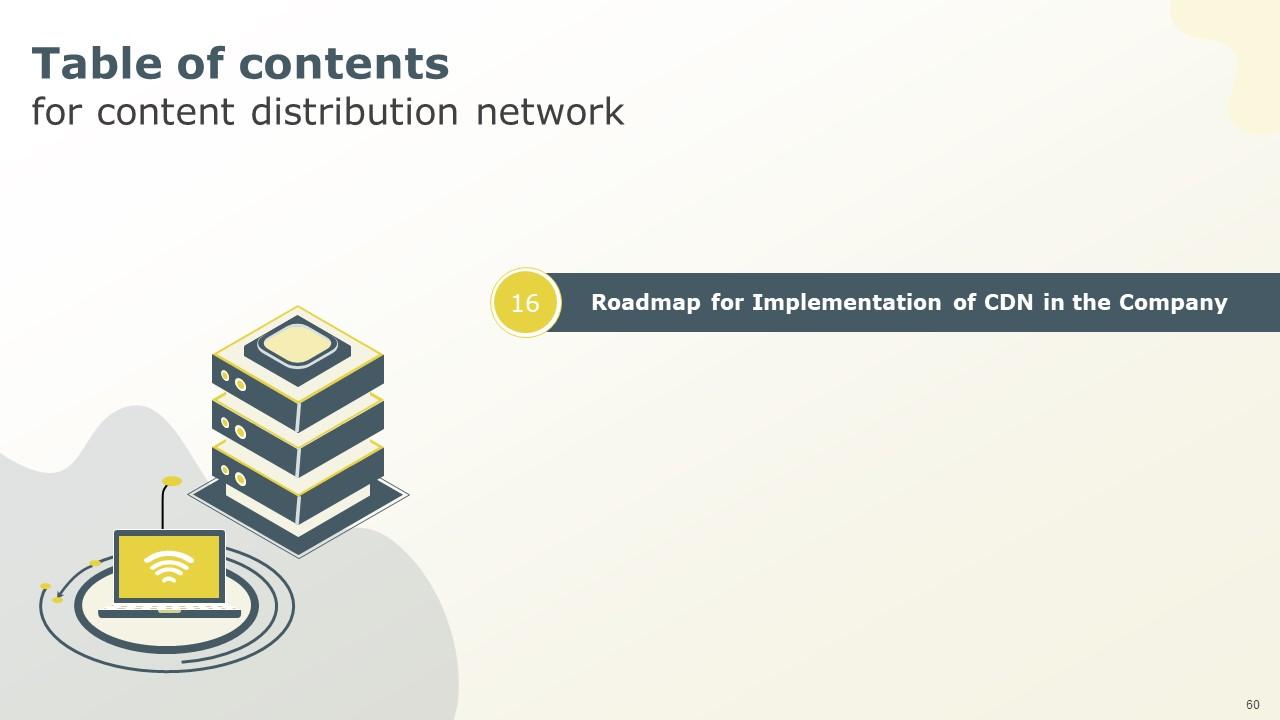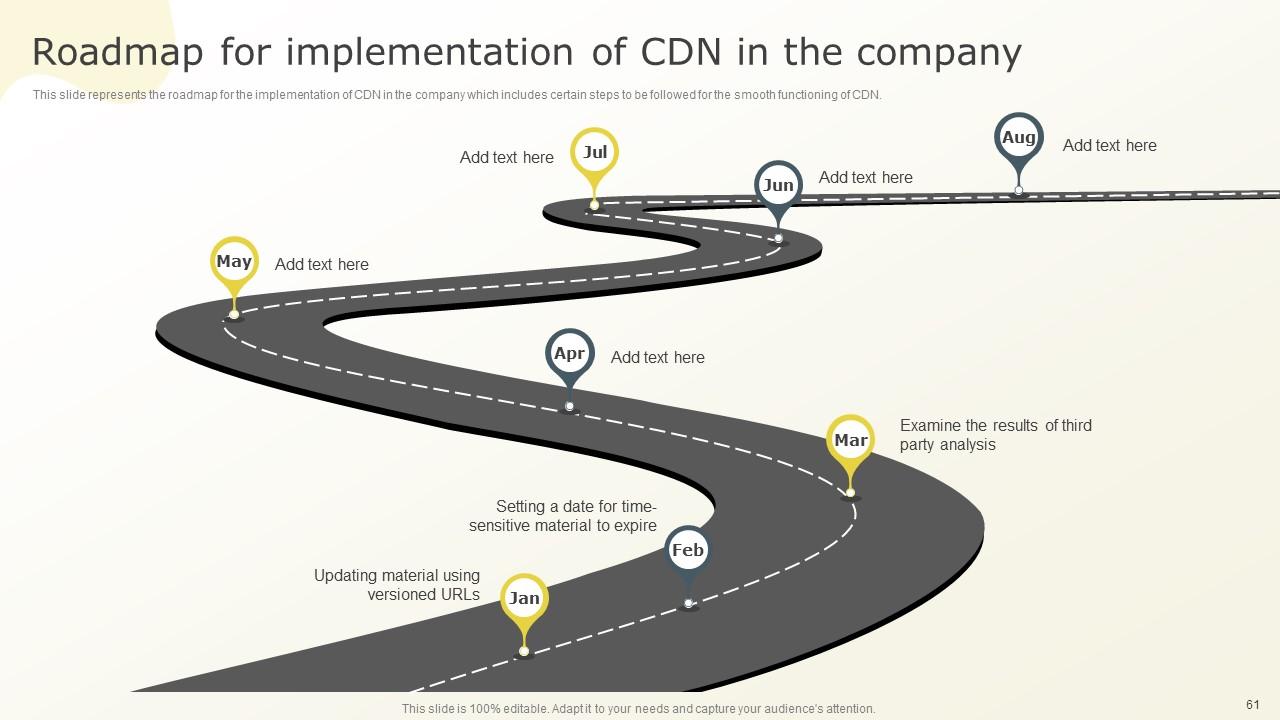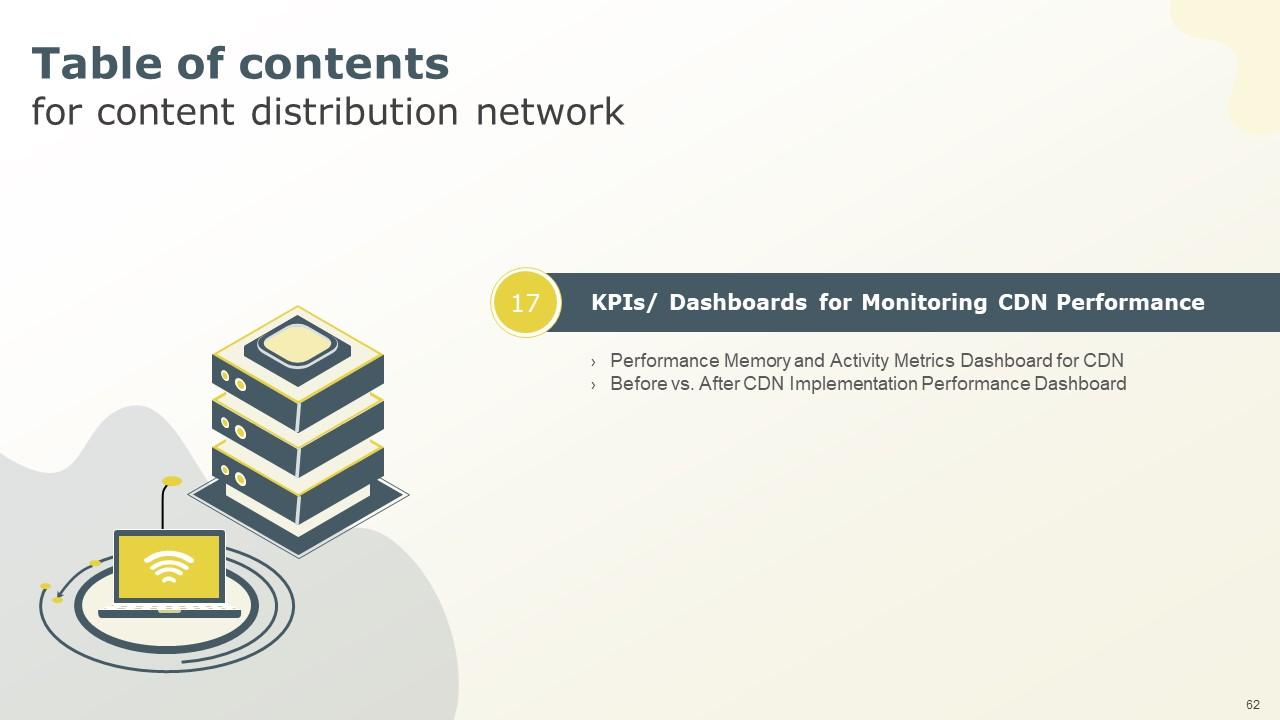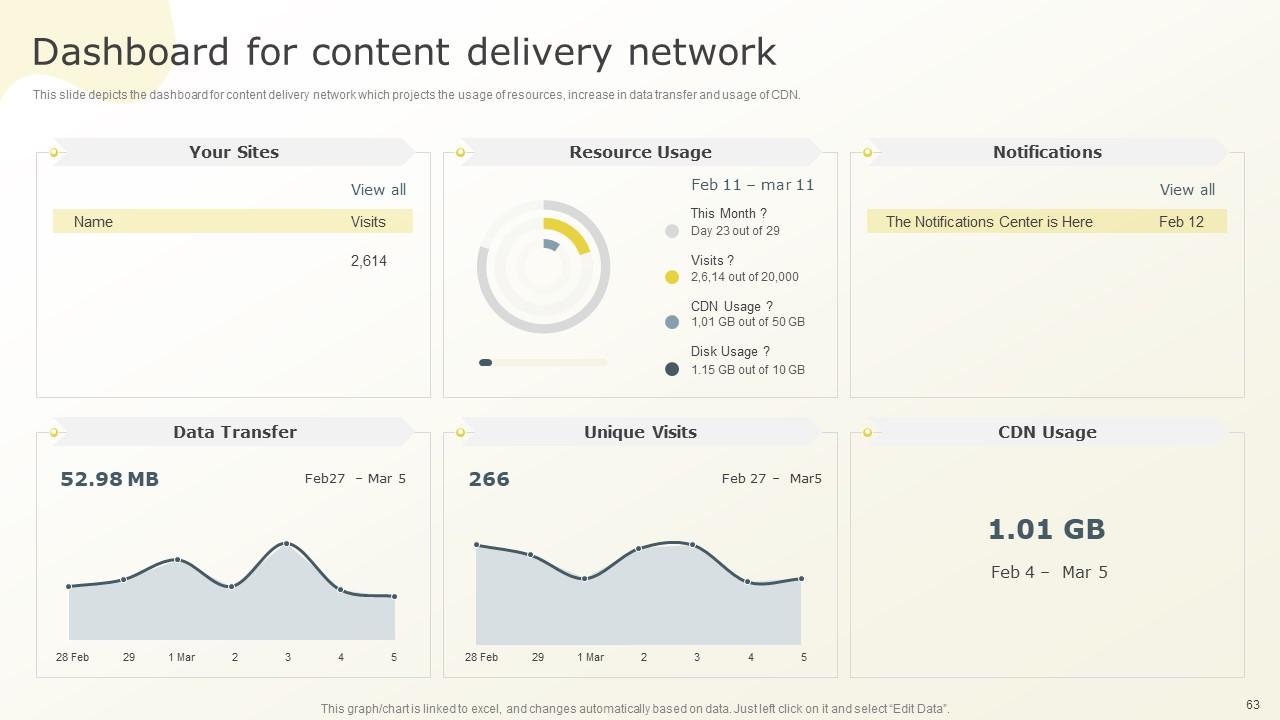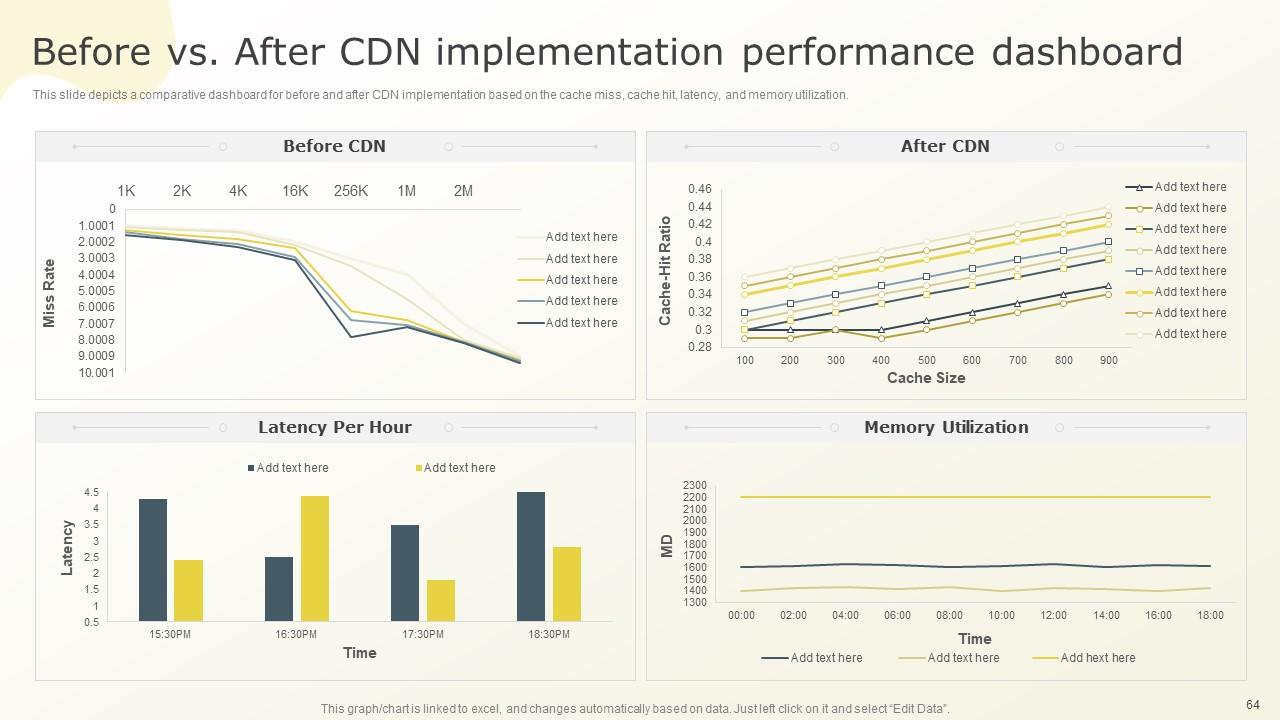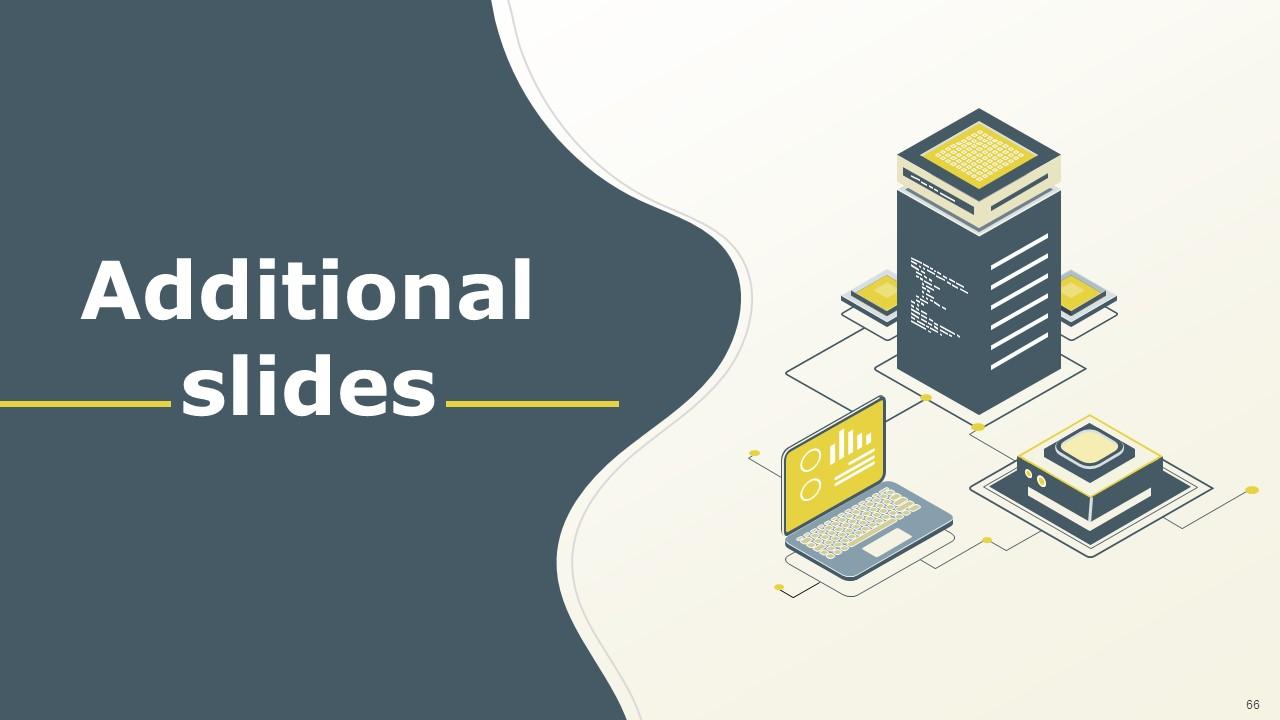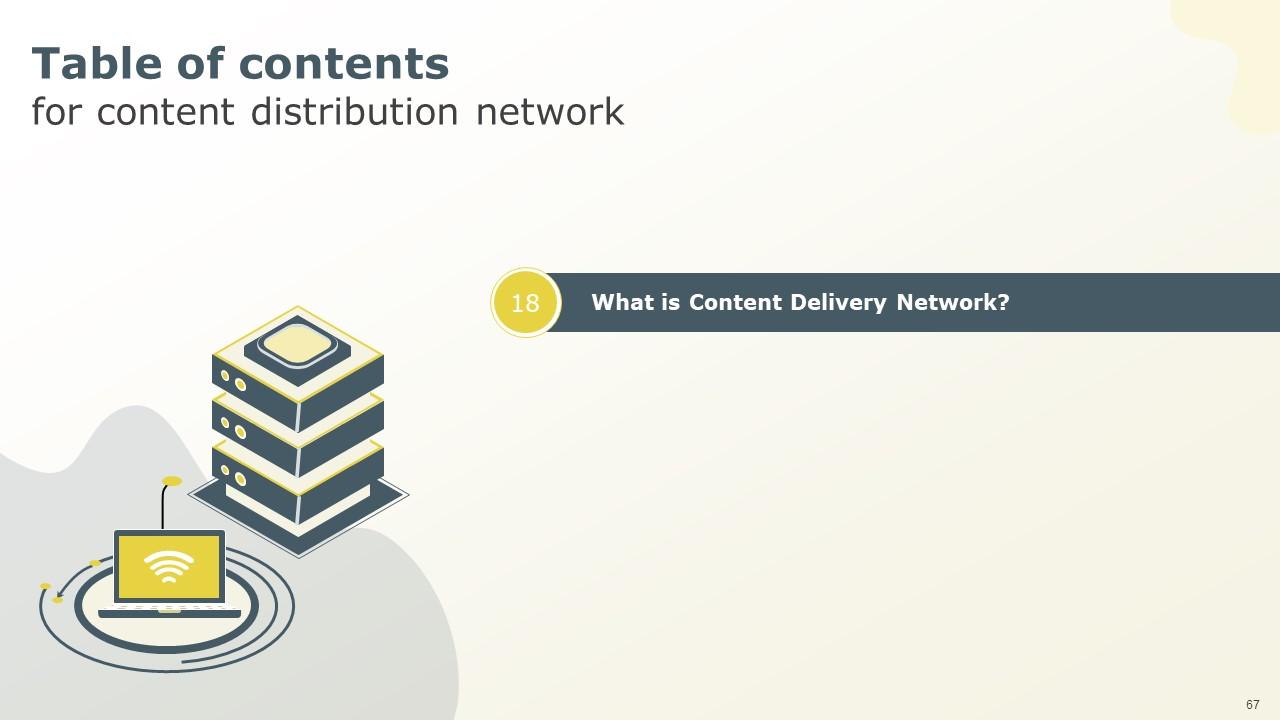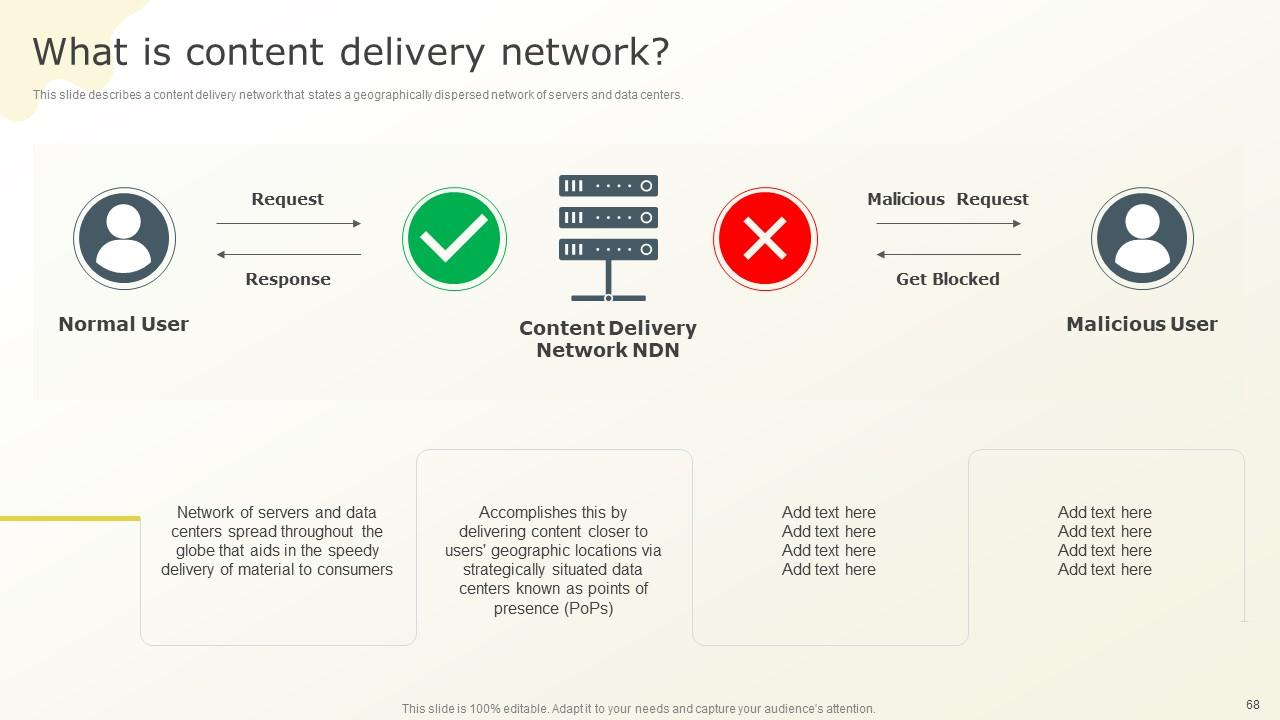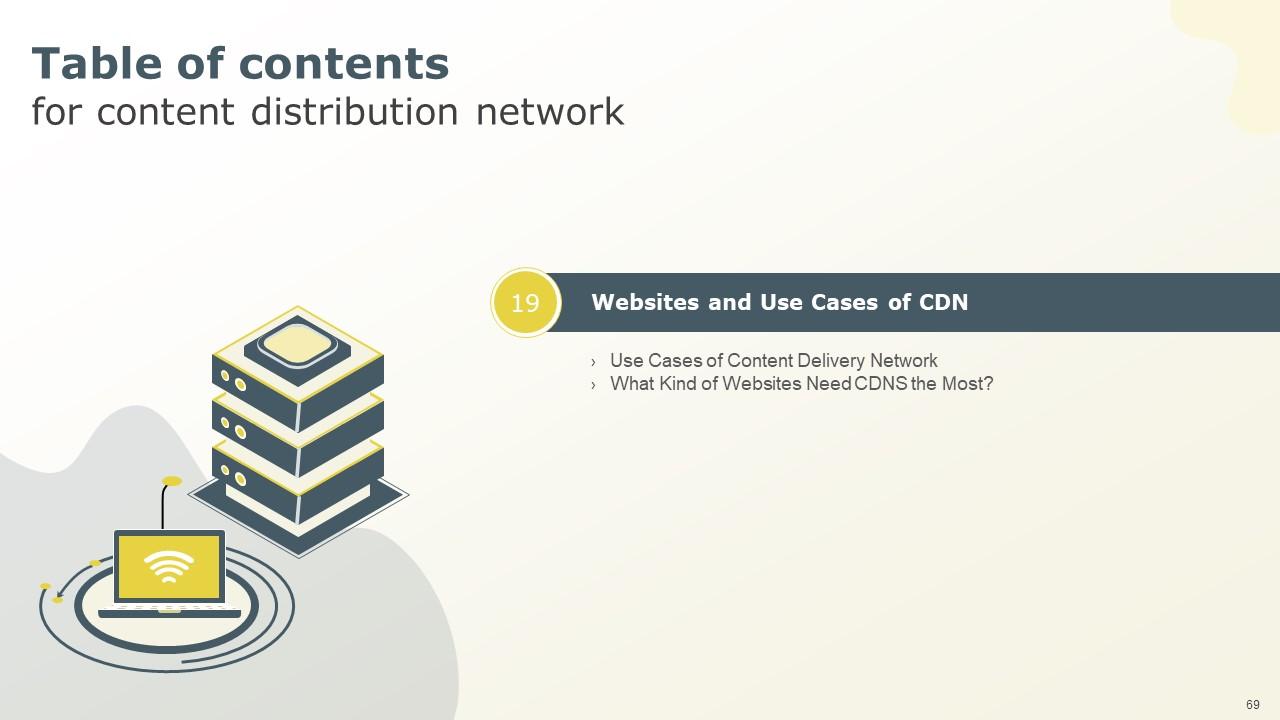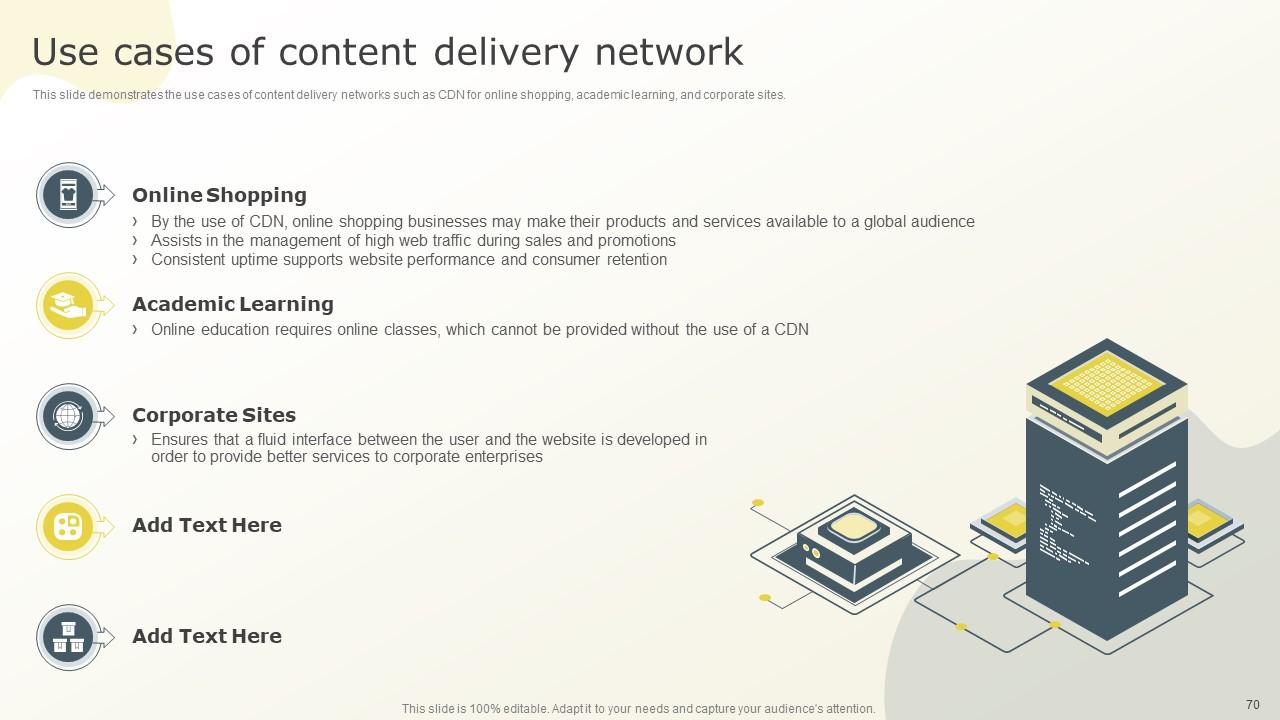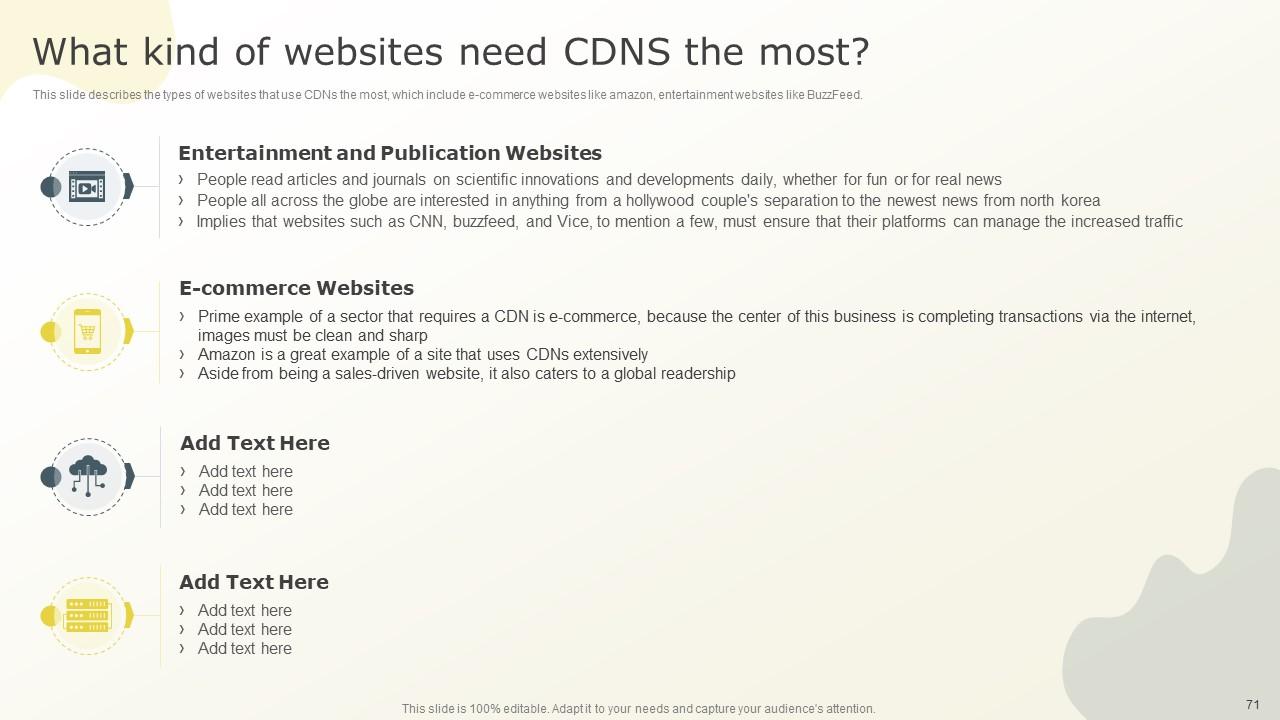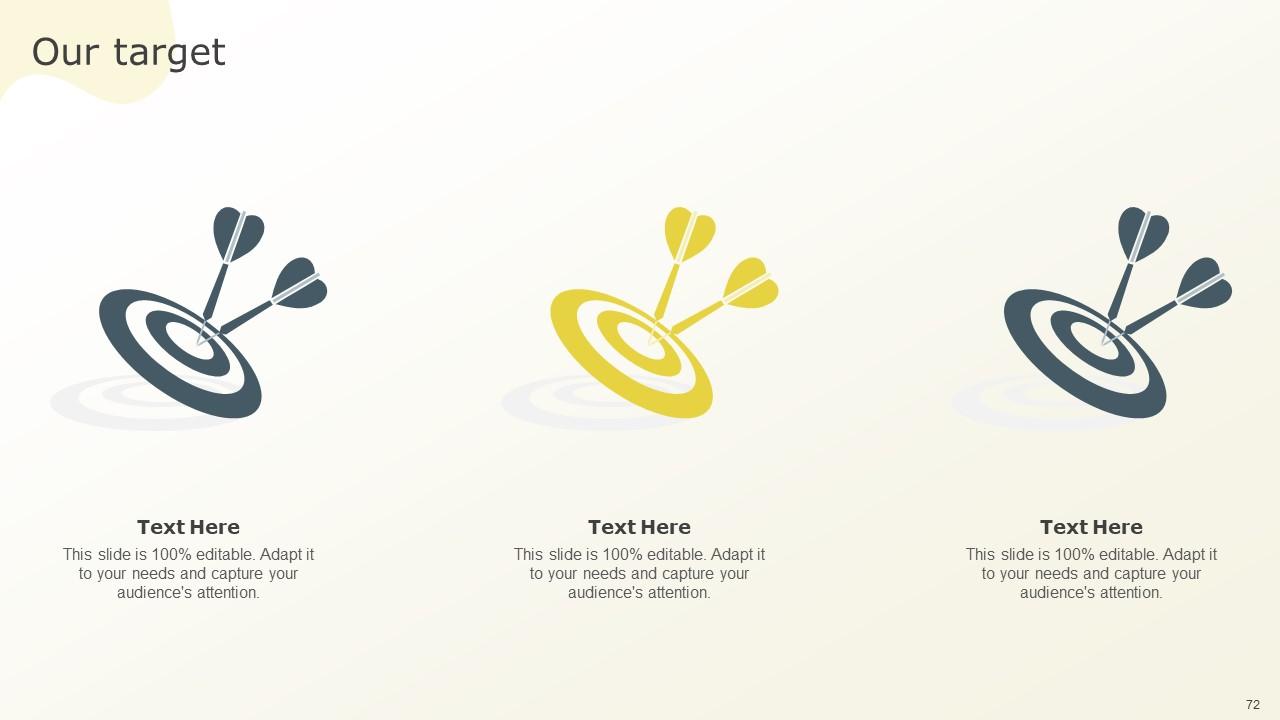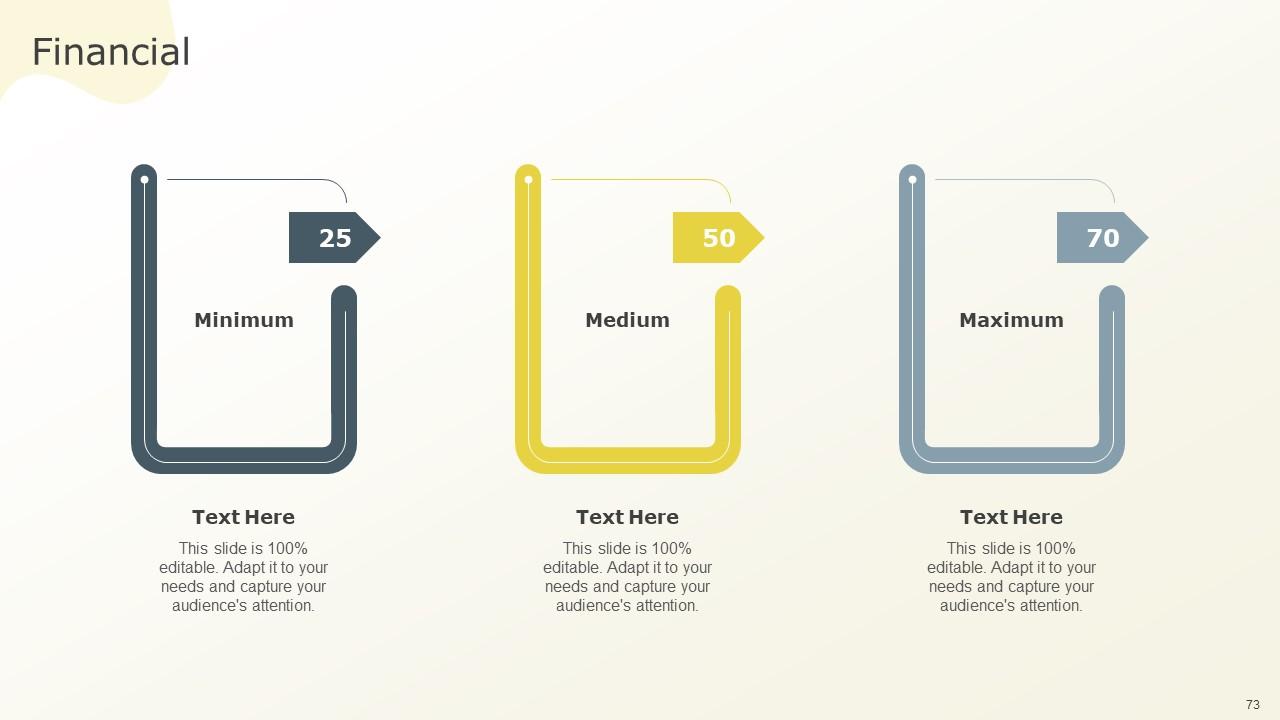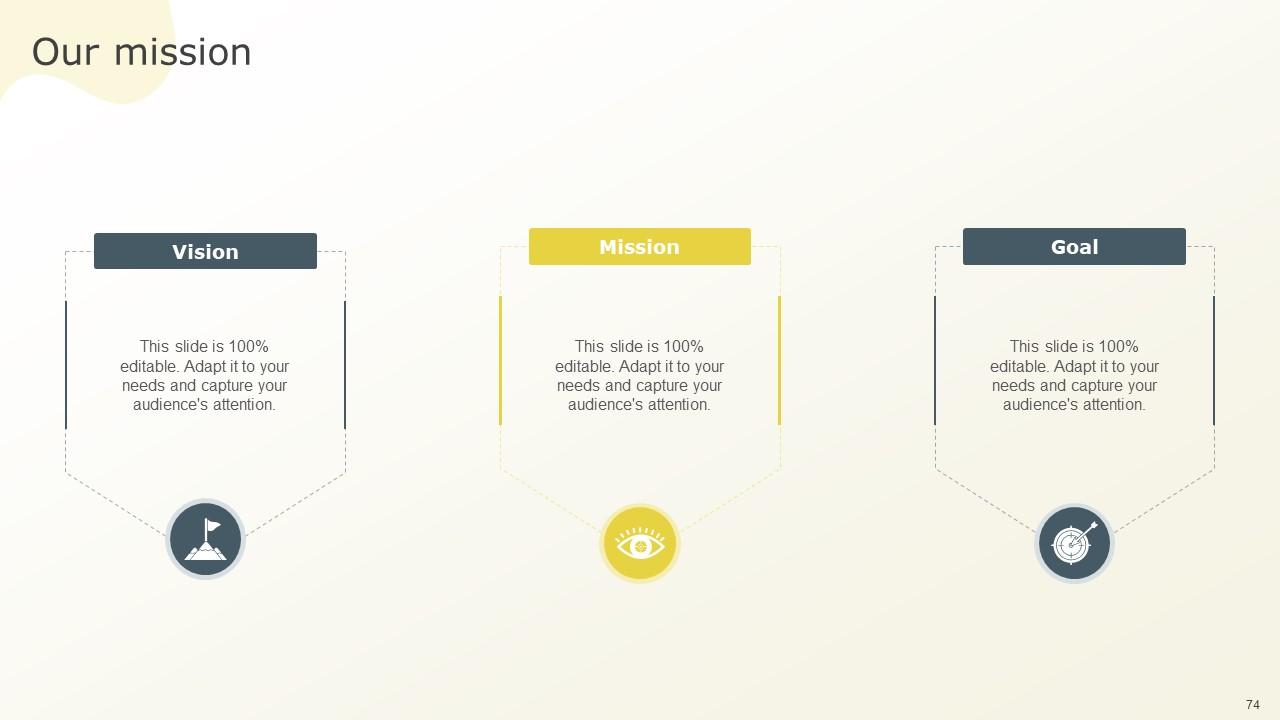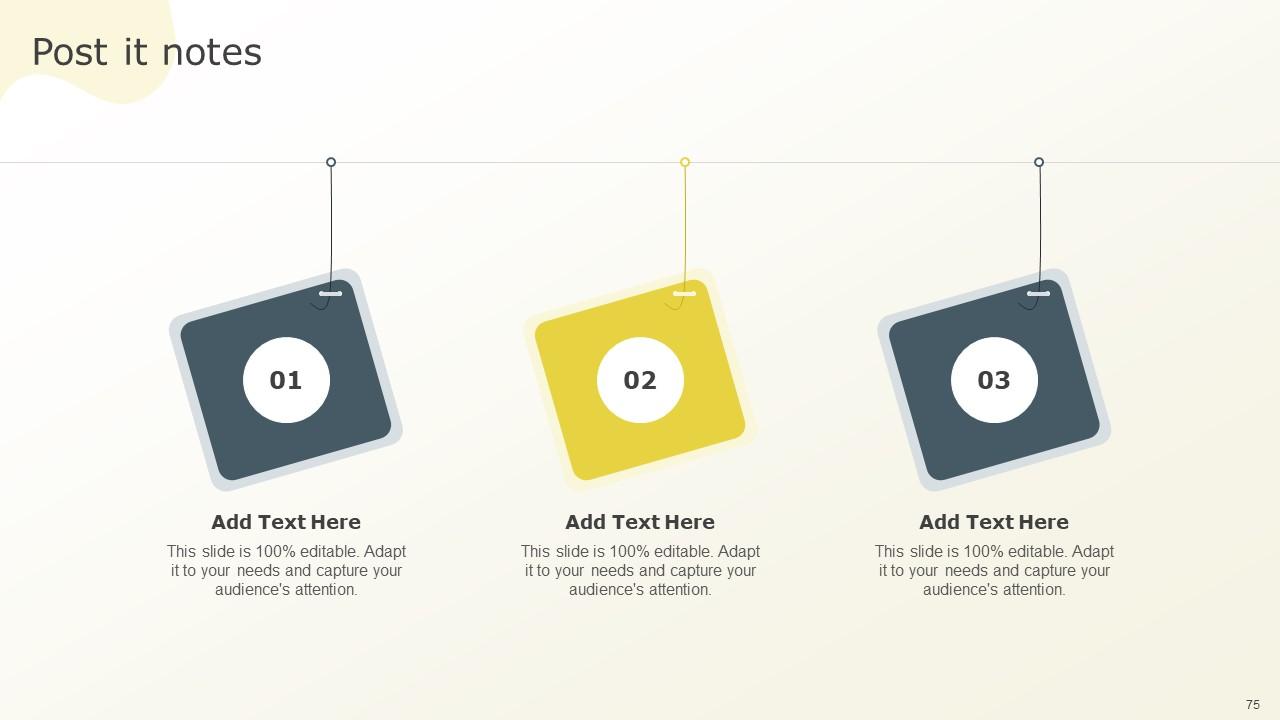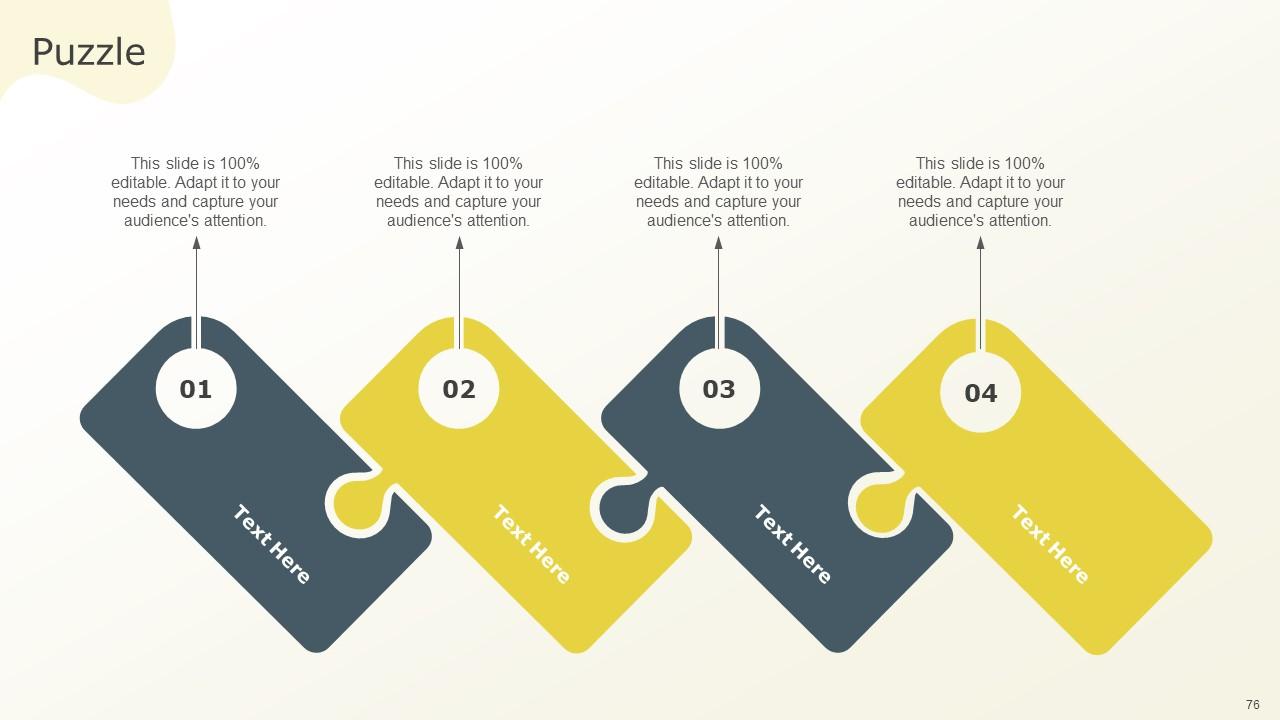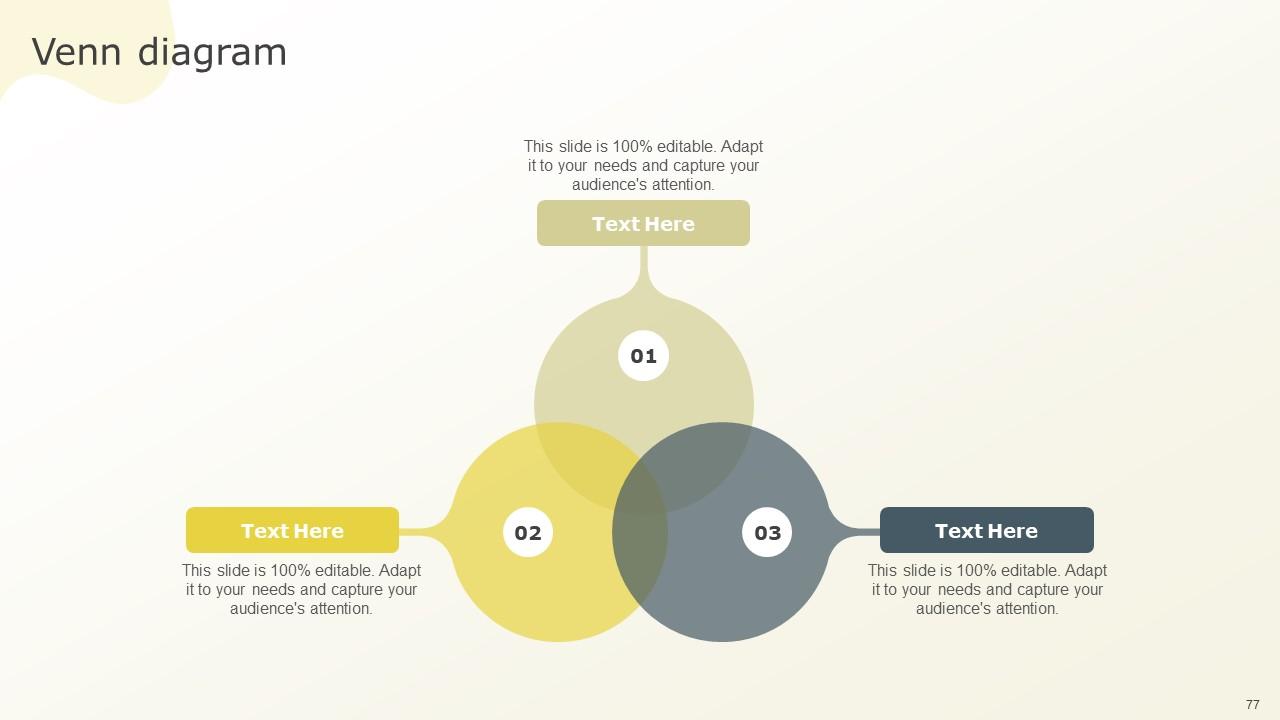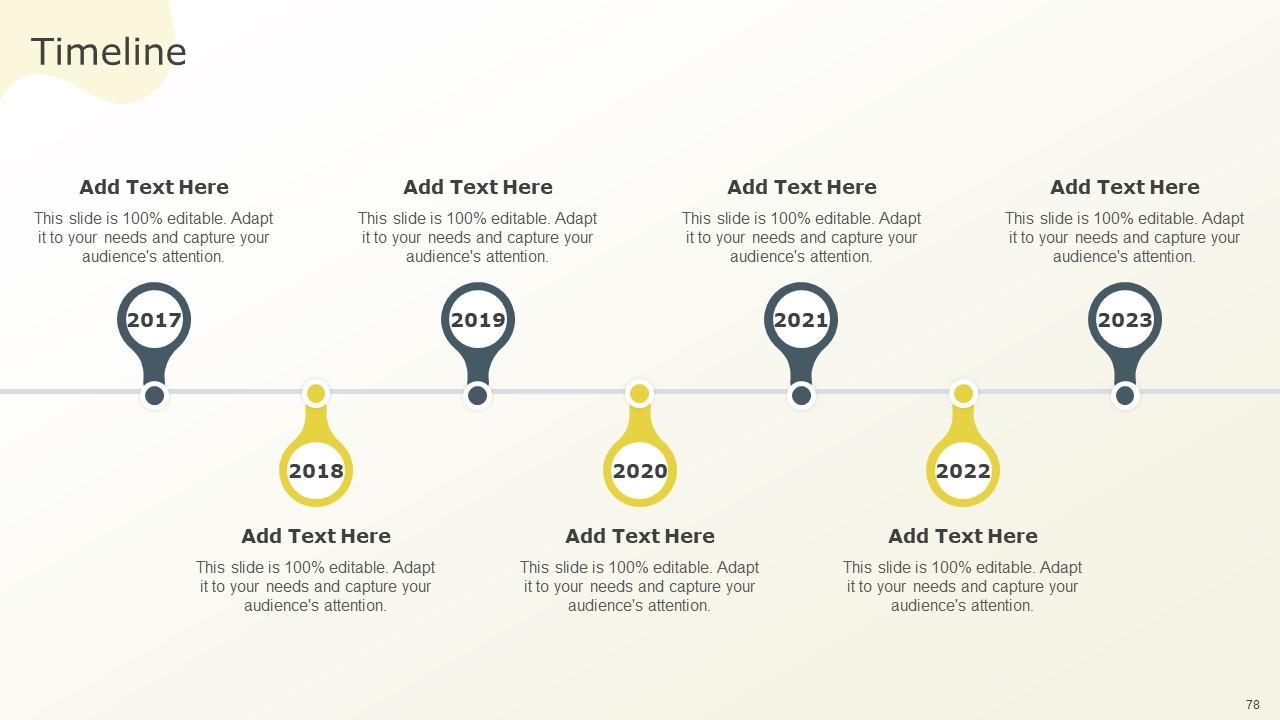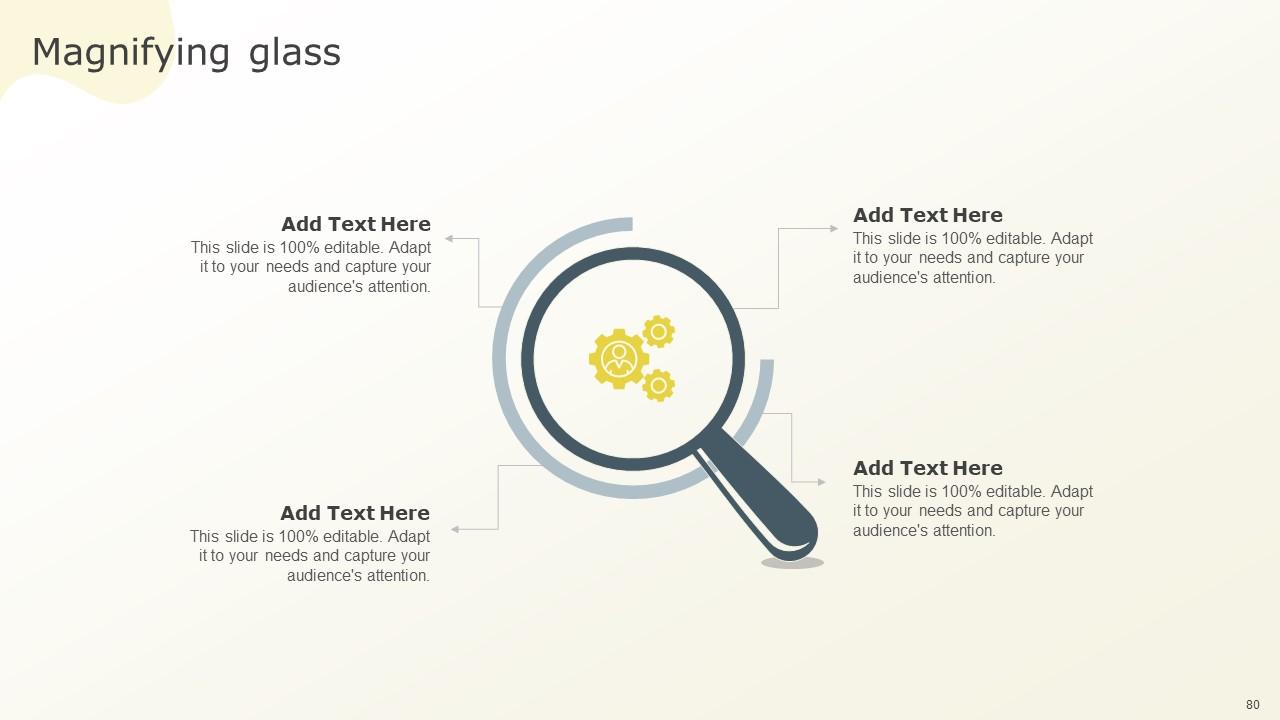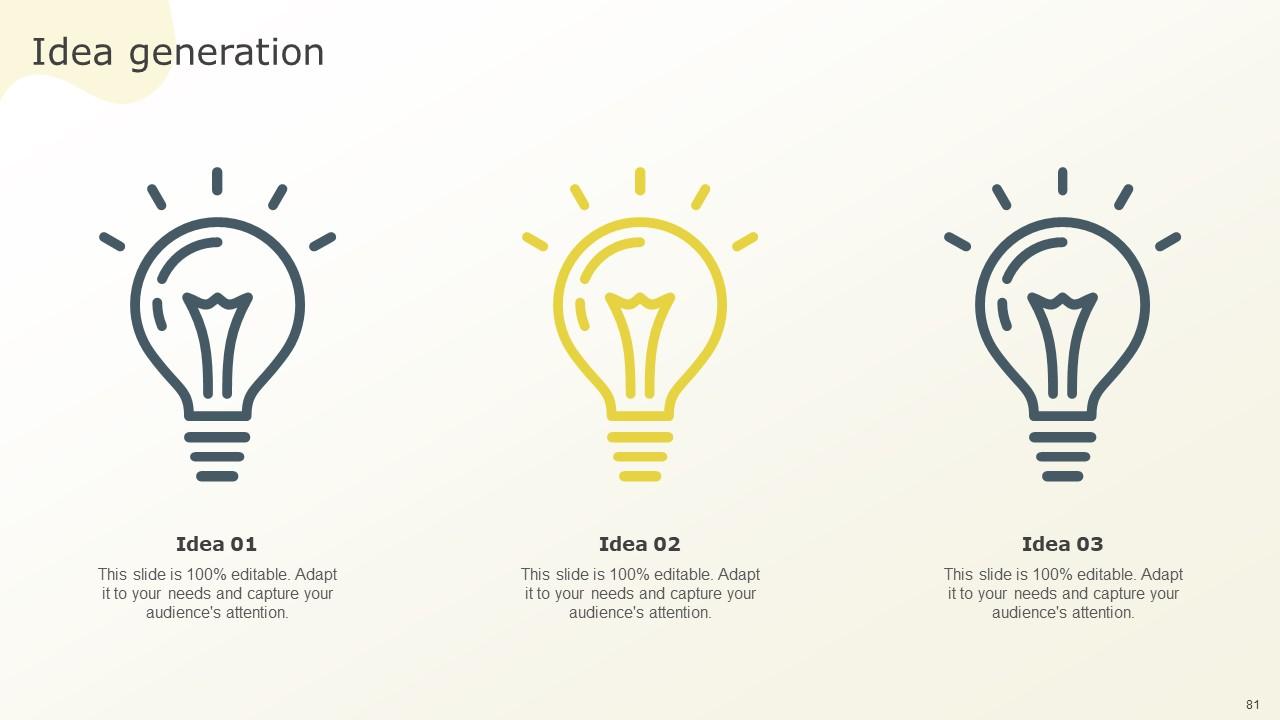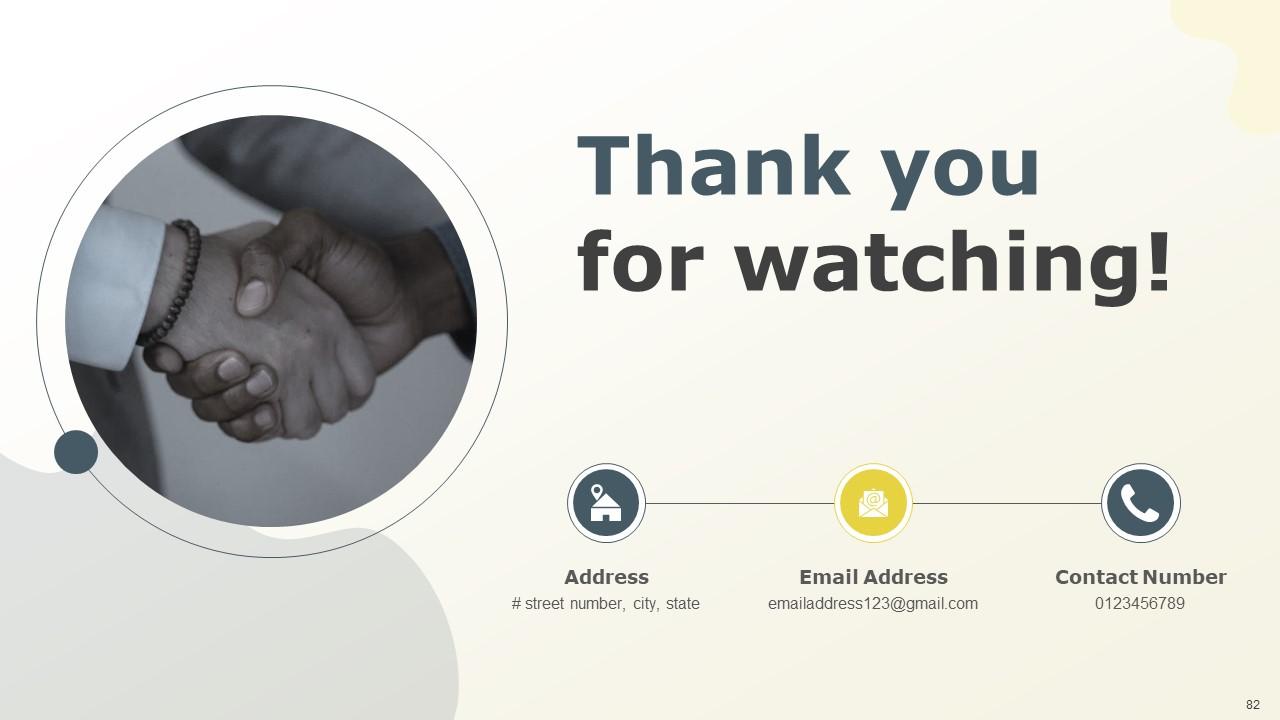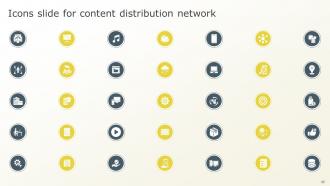Content Distribution Network Powerpoint Presentation Slides
A content delivery network CDN is an extensive, distributed system of computers on the Internet stretched across numerous data centers. This PowerPoint presentation Content Distribution Network is of significant assistance to learn about Content Delivery Networks, their benefits, and their implementation to eliminate business problems such as latency. In this Content Delivery Network PowerPoint presentation, we have covered the need, benefits, and importance of Content Delivery to the business and market share of CDN. Furthermore, it includes working, its architecture, Cloud CDN, and CDN edge server. Moreover, this Distribution Network presentation represents features of the Content Delivery Network, issues that CDN handles, and the need for CDN providers to the business. Further, the Cloud CDN template caters to the implementation of CDN in the company, a checklist to implement CDN in business, a timeline, and a roadmap to monitor the implementation process. Lastly, the Delivery Network deck comprises a 30-60-90-day plan to implement CDN in business and a dashboard to measure the performance and impact of the CDN implementation in the organization. Download our 100 percent editable and customizable template, which is also compatible with Google Slides.
A content delivery network CDN is an extensive, distributed system of computers on the Internet stretched across numerous d..
- Google Slides is a new FREE Presentation software from Google.
- All our content is 100% compatible with Google Slides.
- Just download our designs, and upload them to Google Slides and they will work automatically.
- Amaze your audience with SlideTeam and Google Slides.
-
Want Changes to This PPT Slide? Check out our Presentation Design Services
- WideScreen Aspect ratio is becoming a very popular format. When you download this product, the downloaded ZIP will contain this product in both standard and widescreen format.
-

- Some older products that we have may only be in standard format, but they can easily be converted to widescreen.
- To do this, please open the SlideTeam product in Powerpoint, and go to
- Design ( On the top bar) -> Page Setup -> and select "On-screen Show (16:9)” in the drop down for "Slides Sized for".
- The slide or theme will change to widescreen, and all graphics will adjust automatically. You can similarly convert our content to any other desired screen aspect ratio.
Compatible With Google Slides

Get This In WideScreen
You must be logged in to download this presentation.
PowerPoint presentation slides
Enthrall your audience with this Content Distribution Network Powerpoint Presentation Slides. Increase your presentation threshold by deploying this well-crafted template. It acts as a great communication tool due to its well-researched content. It also contains stylized icons, graphics, visuals etc, which make it an immediate attention-grabber. Comprising eighty two slides, this complete deck is all you need to get noticed. All the slides and their content can be altered to suit your unique business setting. Not only that, other components and graphics can also be modified to add personal touches to this prefabricated set.
People who downloaded this PowerPoint presentation also viewed the following :
Content of this Powerpoint Presentation
Slide 1: This slide displays the title Content Distribution Network.
Slide 2: This slide displays the title Agenda for content distribution network.
Slide 3: This slide exhibit table of content.
Slide 4: This slide exhibit table of content.
Slide 5: This slide exhibit table of content.
Slide 6: This slide exhibit table of content- Current Situation of the Business.
Slide 7: This slide depicts the high latency faced by the company on its server which causes major loss in terms of both revenue and reputation.
Slide 8: This slide describes the reputational damage faced by the company because of high load times and poor server experience.
Slide 9: This slide exhibit table of content- Need for CDN in the Business.
Slide 10: This slide represents the need for CDN in business which includes providing access to the data while controlling who has the authority to access the information.
Slide 11: This slide describes the importance of a content delivery network(CDN), including allowing content to be pre-fetched by edge servers.
Slide 12: This slide depicts the benefits of the company's content delivery network, such as lowering the website's load times and decreasing bandwidth expenses.
Slide 13: This slide demonstrates the global market share of CDN (content delivery network) market from the year 2016 to 2022.
Slide 14: This slide depicts the global market share of CDN in the year 2020 and forecasts growth of the upcoming year 2027 in various sectors.
Slide 15: This slide exhibit table of content- Pillars of Content Delivery Network.
Slide 16: This slide describes the performance as a pillar of CDN design.
Slide 17: This slide explains scalability as a pillar of the content delivery network.
Slide 18: This slide depicts reliability as a pillar of CDN design which includes using the “no single point of failure” strategy most of the time.
Slide 19: This slide depicts responsiveness as the pillar of CDN; the main motive behind it is to provide maximum service quality to clients.
Slide 20: This slide exhibit table of content- Features of Content Delivery Network.
Slide 21: This slide explains the features of content delivery networks such as protection against DDoS protection, HTTPS services, analytics, etc.
Slide 22: This slide exhibit table of content- Architecture and Working of CDN.
Slide 23: This slide explains the content delivery network architecture in which point of presence and regional data Centre is the basic foundation of CDN systems.
Slide 24: This slide demonstrates the working of content delivery network, in which it shortens the distance between a user and the origin(webs or an application server).
Slide 25: This slide exhibit table of content- Introduction of CDN Topology.
Slide 26: This slide describes the scattered as a content delivery network topology; its main focus is physical closeness and reducing the distance between PoPs.
Slide 27: This slide depicts the consolidated as a CDN topology , and the rise of internet connectivity has allowed this network for a more recent approach.
Slide 28: This slide exhibit table of content- Overview of Cloud(CDN)Content Delivery Network.
Slide 29: This slide describes the CDN-supported cloud computing in which CDN providers help link cloud CDN with other procedures to meet the company’s needs.
Slide 30: This slide demonstrates the response flow of cloud CDN in which origin servers must pass through an HTTP(s) load balancer.
Slide 31: This slide exhibit table of content- Types of Content Delivery Network to be Implemented.
Slide 32: This slide depicts the push zone as a content delivery network in which materials are uploaded to different servers.
Slide 33: This slide represents the pull zone as a type of content delivery network in which static materials are retrieved from the origin server.
Slide 34: This slide exhibit table of content- About CDN Edge Server
Slide 35: This slide demonstrates introduction to CDN edge server, such as it is commonly used to connect two networks and is located at the logical end.
Slide 36: This slide depicts the working of an edge server in which devices are connected to the LAN and each one relates to a central router.
Slide 37: This slide exhibit table of content- Overview of CDN Caching.
Slide 38: This slide represents introduction to CDN caching and how it helps in reducing load times by delivering content faster than the origin servers.
Slide 39: This slide depicts types of CDN caching, which includes DNS Caching and search engines, and how they work to respond quickly.
Slide 40: This slide exhibit table of content- Need of CDN Provider.
Slide 41: This slide depicts the attributes of a great CDN provider that includes being quicker, reducing geological distance.
Slide 42: This slide depicts how CDN providers help the business by reducing the server load and increasing the speed of analytics.
Slide 43: This slide represents the key CDN metrics to watch while looking for a CDN provider, such as the time it takes DNS to reply.
Slide 44: This slide represents the top CDN cloud service providers such as BelugaCDN, Cloudflare, MaxCDN/StackPath.
Slide 45: This slide exhibit table of content- Issues Handled by CDN.
Slide 46: This slide explains latency and how does CDN handles website times by reducing the distance between users and website resources.
Slide 47: This slide explains reliability and redundancy and how a content delivery network keeps a website online by assigning traffic to different servers.
Slide 48: This slide demonstrates how CDN protects data by issuing TLS/SSL certificates, blocking Bots and crawlers, and defending against DDoS assaults.
Slide 49: This slide exhibit table of content- Implementation of Content Delivery Network in the Company.
Slide 50: This slide depicts the checklist for CDN implementation in the business such as optimization of monitoring and logging, use of negative caching.
Slide 51: This slide describes the implementation of a content delivery network in business which includes selecting a CDN provider, linking WordPress to the CDN.
Slide 52: This slide depicts the CDN training for employees in the company which includes training objectives, timings, and duration.
Slide 53: This slide demonstrates the company's budget for content delivery network implementation, which includes funding of CDN providers based on features.
Slide 54: This slide exhibit table of content- Impact of CDN Implementation in the Company.
Slide 55: This slide explains the increased performance post CDN implementation in the company, which includes the ability to handle heavy traffic.
Slide 56: This slide demonstrates the graph about how bandwidth costs are reduced by 99% after the implementation of the content delivery network.
Slide 57: This slide explains reduced bandwidth costs post CDN implementation by paying only for the services that are utilized and are required.
Slide 58: This slide exhibit table of content- 30-60-90 Days Plan for Implementation of CDN.
Slide 59: This slide depicts the 30-60-90 days plan for implementation of CDN, which includes choosing a CDN with built-in DRM, attaching the website with CDN, and so on.
Slide 60: This slide exhibit table of content- Roadmap for Implementation of CDN in the Company.
Slide 61: This slide represents the roadmap for the implementation of CDN in the company which includes certain steps to be followed for the smooth functioning of CDN.
Slide 62: This slide exhibit table of content- KPIs/ Dashboards for Monitoring CDN Performance.
Slide 63: This slide depicts the dashboard for content delivery network which projects the usage of resources, increase in data transfer and usage of CDN.
Slide 64: This slide depicts a comparative dashboard for before and after CDN implementation based on the cache miss, cache hit, latency, and memory utilization.
Slide 65: This is the icons slide.
Slide 66: This slide presents title for additional slides.
Slide 67: This slide exhibit table of content- What is Content Delivery Network?
Slide 68: This slide describes a content delivery network that states a geographically dispersed network of servers and data centers.
Slide 69: This slide exhibit table of content- Websites and Use Cases of CDN.
Slide 70: This slide demonstrates the use cases of content delivery networks such as CDN for online shopping, academic learning, and corporate sites.
Slide 71: This slide describes the types of websites that use CDNs the most, which include e-commerce websites like amazon, entertainment websites like BuzzFeed.
Slide 72: This slide display Our target.
Slide 73: This slide display Financial.
Slide 74: This slide presents your company's vision, mission and goals.
Slide 75: This slide depicts posts for past experiences of clients.
Slide 76: This slide shows puzzle for displaying elements of company.
Slide 77: This slide display Venn diagram.
Slide 78: This slide exhibits yearly timeline of company.
Slide 79: This slide display Mind map.
Slide 80: This slide showcase Magnifying glass.
Slide 81: This slide exhibits ideas generated.
Slide 82: This is thank you slide & contains contact details of company like office address, phone no., etc.
Content Distribution Network Powerpoint Presentation Slides with all 87 slides:
Use our Content Distribution Network Powerpoint Presentation Slides to effectively help you save your valuable time. They are readymade to fit into any presentation structure.
FAQs
A CDN is a network of servers that distributes website content to users based on their location, thereby reducing the distance between the user and the website resources. This results in faster website load times, lower bandwidth expenses, and improved user experience.
The pillars of CDN design include performance, scalability, reliability, and responsiveness. These pillars ensure that the CDN is designed to deliver content quickly, can handle large amounts of traffic, and is dependable and responsive to user needs.
Some features of content delivery networks include protection against Distributed Denial-of-Service (DDoS) attacks, analytics, load balancing, and security features such as firewalls and content filtering.
There are two types of content delivery networks to be implemented: push zone and pull zone. Push zones involve uploading materials to different servers, while pull zones involve retrieving static materials from the origin server.
A CDN implementation can impact a company by improving website performance and user experience, reducing server load and bandwidth expenses, protecting against Distributed Denial-of-Service (DDoS) attacks and other security threats, and increasing the speed of analytics.
-
Great experience, I would definitely use your services further.
-
Understandable and informative presentation.


